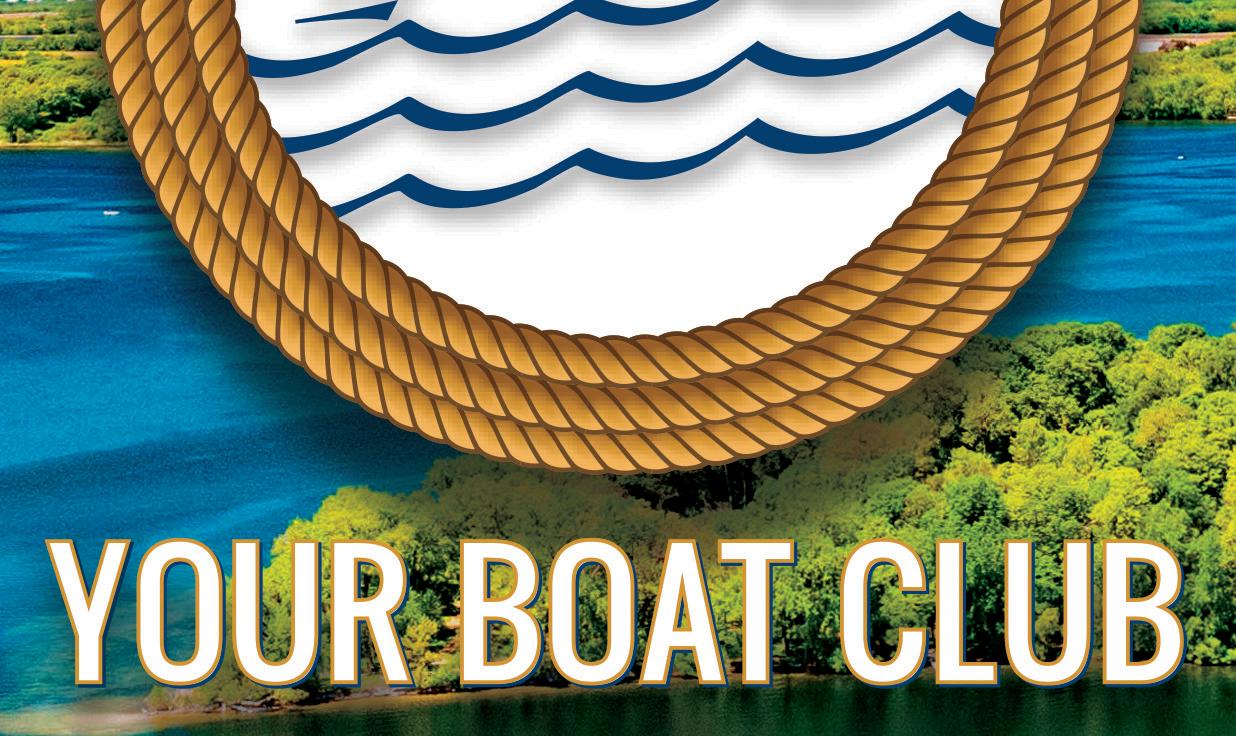









































































































Move over , staycations, babymoons, and revenge travel . Say hello to bleisure, gig tripping, sleep tourism, and AI itineraries. As a travel writer and editor, I hear about the latest travel industry trends often, sometimes rolling my eyes at the goofy terms that marketers come up with to classify them.
Is bleisure—business travel blended with leisure tourism—really that new? Many of us add a few extra days to our business trips to explore on our own. And I’ve been gig tripping, otherwise known as traveling out of town to see a band or concert, for years, as when I went to Chicago for Riot Fest and to Portland, Oregon, to see the Replacements during their reunion tour. I wrote about sleep tourism and wellness getaways last year during a spa stay, and I used artificial intelligence to middling success to plot out must-sees during recent trips to France, Morocco, and New Zealand.
I prefer a good, old printed guide while exploring new sites, knowing I can trust the recommendations and insider tips the writers and editors researched and tested themselves. That’s what this Ultimate Travel Guide o ers—first-hand knowledge of interesting and favorite locations around Minnesota, as well as Fort Myers, Florida, Nashville, Tennessee, and Paris, France, which I and our writers have wandered about ourselves. There’s nothing artificial about it. And it’s robust enough that readers can surely enjoy the latest hot new travel term: a slaycation.
 Amy Nelson, Editor anelson@greenspring.com
Amy Nelson, Editor anelson@greenspring.com

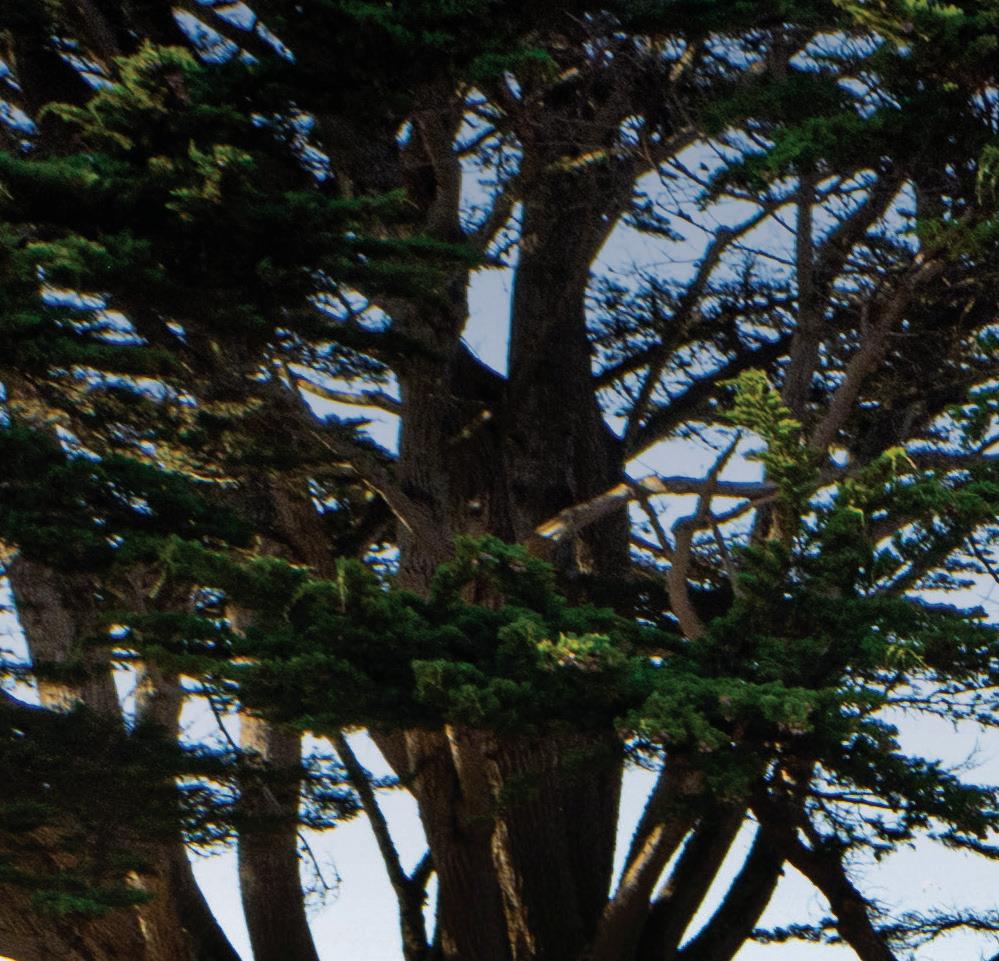
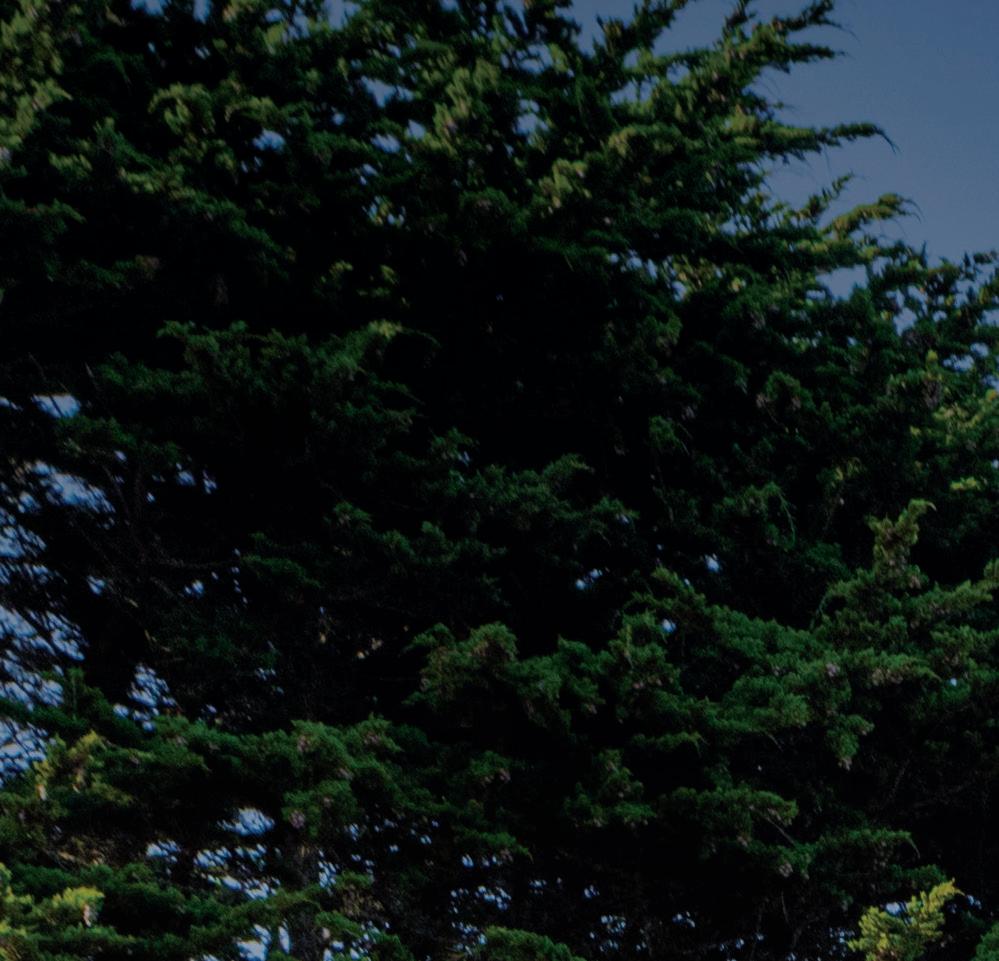


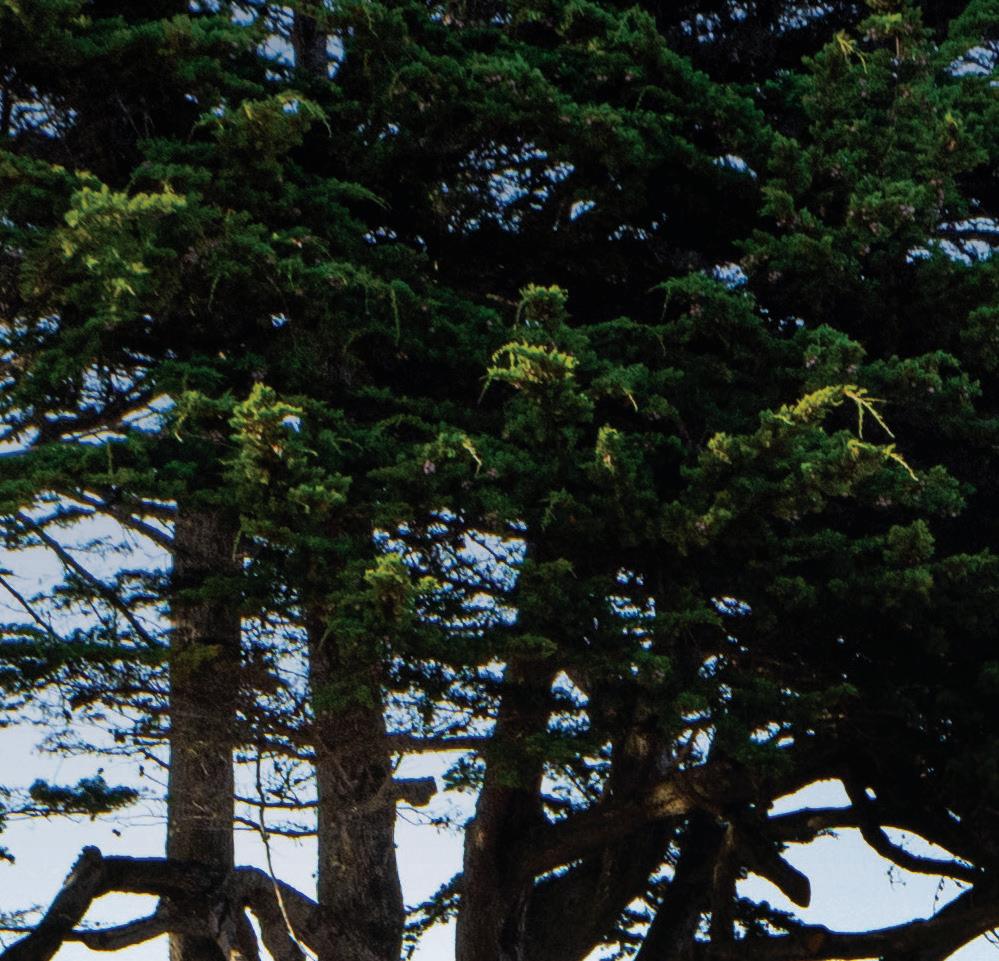
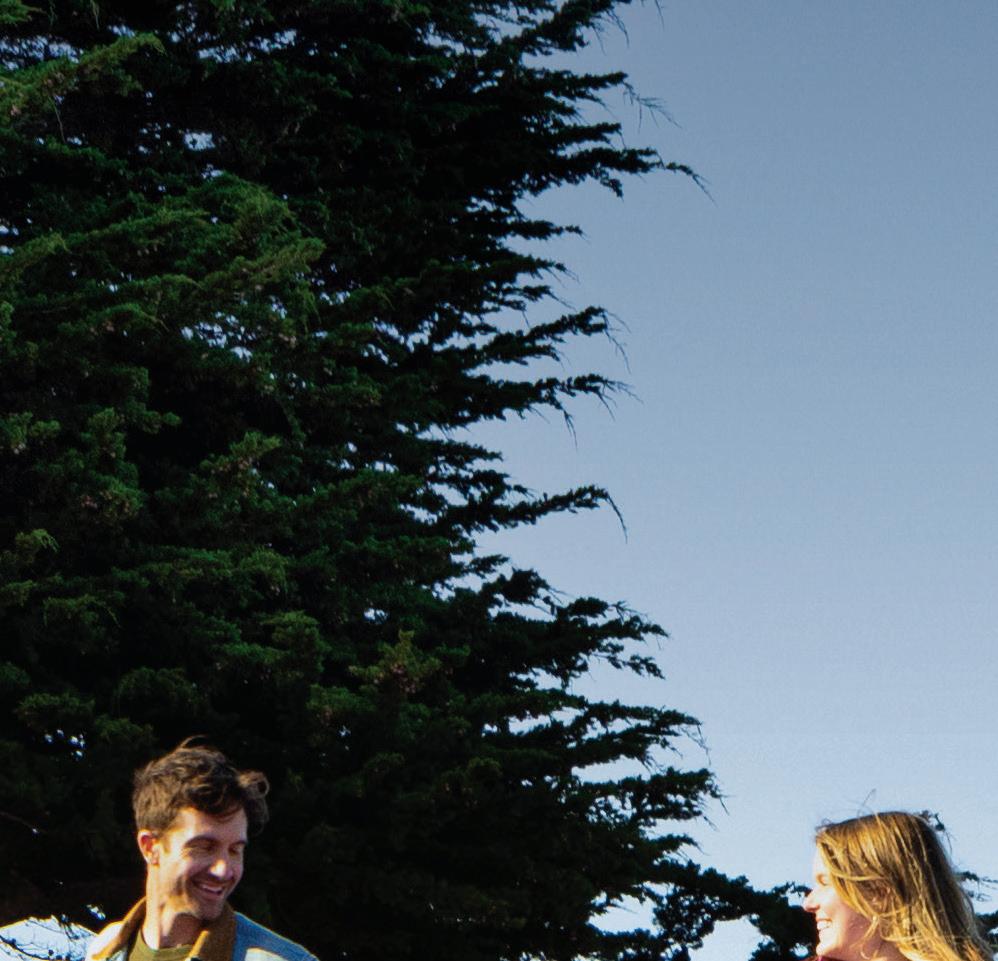



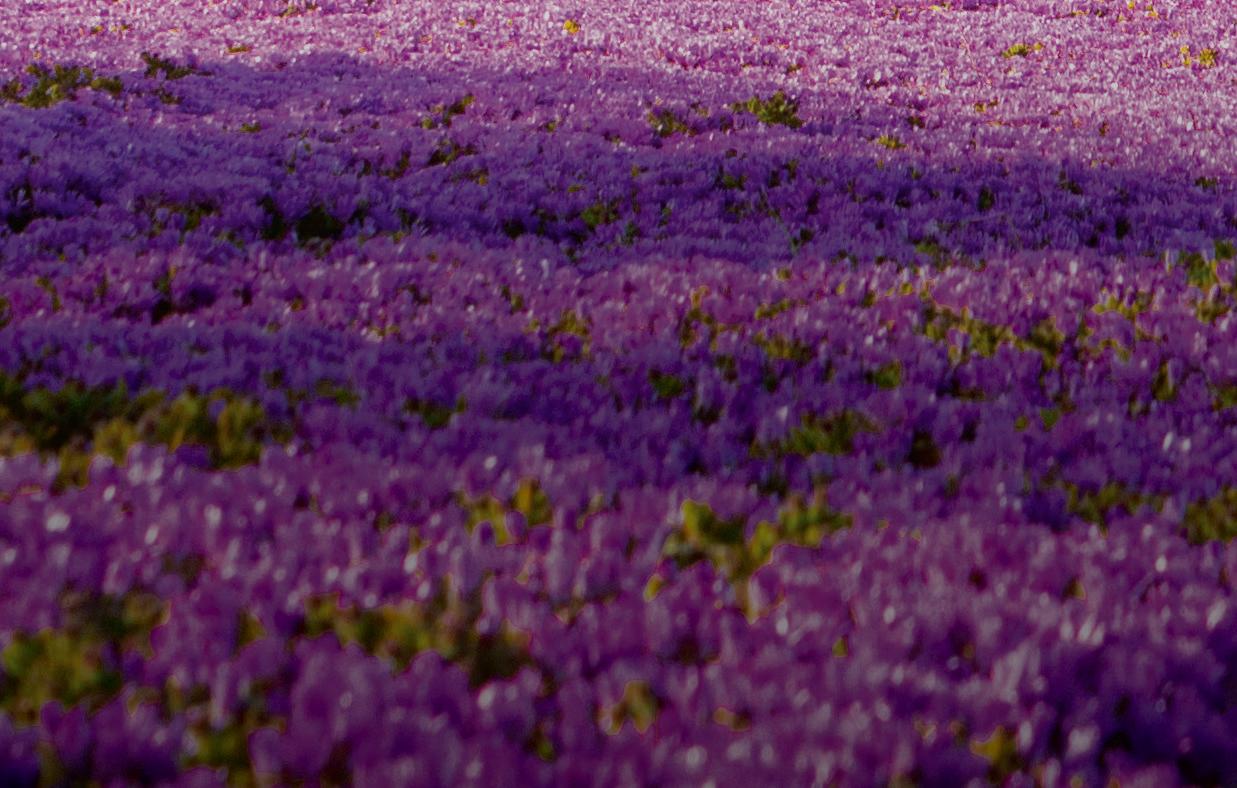
Welcome to the scenic route, from the pristine coastline to the verdant valleys and majestic redwoods, the views here are sure to stop you in your tracks. Wherever your path takes you in Monterey County, please stay safe, leave no trace, and treat Monterey County with care. Find your way here.


Non-stop service between Minneapolis-St. Paul International Airport and Monterey Regional Airport starting August 8th!




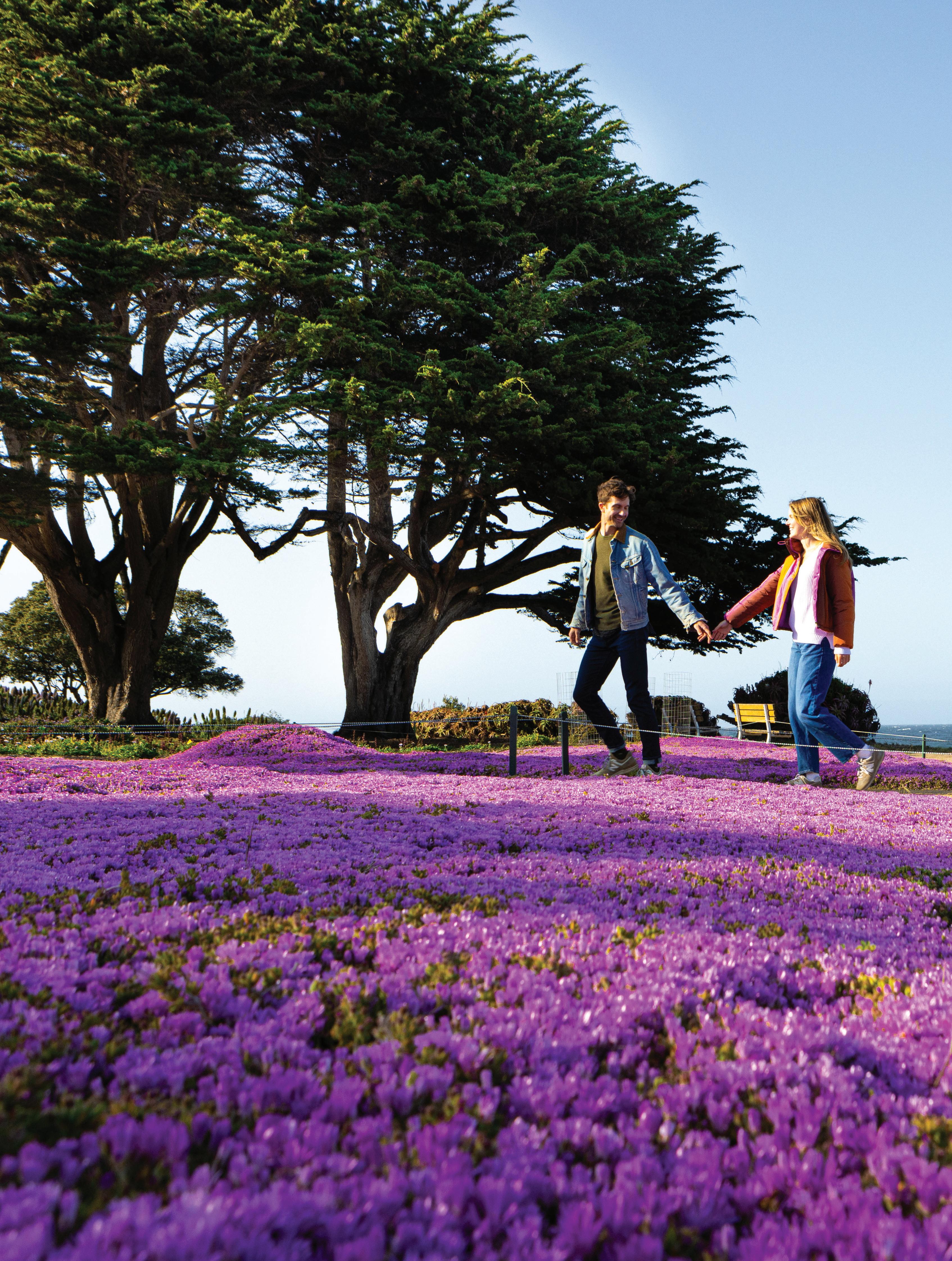





































EXPLORE THE WORLD IN STYLE WITH THESE TRAVEL - RELATED GOODS
by AMY NELSON1. URBAN UNDERCOVER TRAVELER WIDE LEG, TIE BOTTOM PANTS
Urban Undercover founder Sairey Gernes says travelers are “obsessed” with these travel pants that are both comfortable and stylish. We can understand why. A recent addition to the Minnesota brand’s o erings, these pants are made of the same eco-friendly bamboo fabric Urban Undercover is known for, o ering a so lightweight feel with a fla ering silhoue e. There are ankle ties for a loose look or tighter cinch. All that—and they have pockets. They are available in black and Peru (camel). Pants, $110, urbanundercover.com






2. PURGGO CAR AIR FRESHENER
For the next road trip, strap this oversize air freshener to the back of a headrest for an all-natural air purifier. Purggo is made from bamboo charcoal—one of the world’s most renewable natural resources—and promises a year of allergy-free odor elimination that absorbs smells instead of masking them. Air freshener, $20, amazon.com/purggo



3. PARAVEL AVIATOR CARRY- ON
Frequent fliers concerned about the ecoimpact of traveling have another option to o set carbon use. Paravel claims its appropriately named Aviator roller bag is the world’s first carbon-neutral carry-on, made of sustainably sourced, recycled aluminum and vegan leather. The retro look and snazzy color combinations, with optional personalization, will turn heads, too. Luggage, $395, tourparavel.com

4. GRAMS (28 ) 154 CITY PACK
There’s a place for everything—and everything has its place—in this a ractive bag that is compact but also surprisingly roomy. It can hold a tablet, phone, and all other essential items and includes a magnetic pouch to store sunglasses safely as well as a hidden pocket just for an AirTag. The bu ery Italian leather makes it an a ractive accessory to wear across the body with an optional strap. Bag, $299, grams28.com












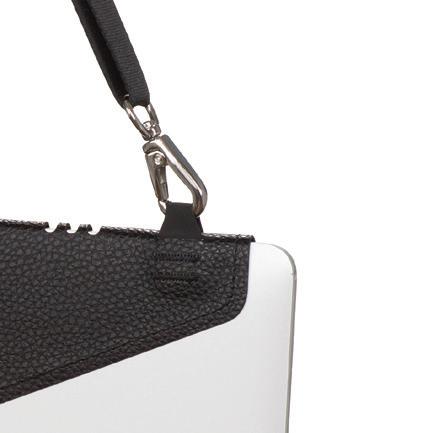


5. NICE SEATS SEAT COVERS
Blankets and pillows come fresh and clean on airliners, but what about the seats? When’s the last time they’ve really been cleaned? This simple product o ers a touch of first-class comfort even in coach by fi ing smoothly over seats. The cover folds up into a pouch, which can be used to store a phone, headphones, or other travel items sometimes lost in the seat-back pockets. The co on covers come in a wide variety of colors. Seat cover, $59, niceseats.com
6. THE LAPTOP STRAP
A trip around the world inspired inventor and Minnesotan Todd Boss to create this tech accessory that allows travelers to wear their laptops rather than stash them away inside a bag. The Laptop Strap creates a handle for the computer with a flap that adheres to the laptop, connected to a strap. It comes in three styles and three sizes. Boss graduated from St. Olaf and worked in Minneapolis as a poet and filmmaker before using his creative mind for this project. Laptop strap, $39.99, thelaptopstrap.com


NESTLED ALONG THE RUGGED COASTLINE OF LAKE SUPERIOR, THE NORTHERN EDGES OF MINNESOTA ARE A ROCKHOUNDING PARADISE by ALESHA TAYLOR



What began as a single parent’s family bonding activity with his two daughters turned into a lifelong pursuit of Minnesota’s biggest, heaviest agates—a successful pursuit, to boot.
“When my daughters got old enough to go for walks, we’d go to a nearby gravel pit and rock hunt,” says Lyndon Johnson, a self-proclaimed geology expert from Sauk Rapids. “I showed them what agates were, and it just became a big family passion—a huge family bonding time. From then on, I just started finding unbelievable stu I didn’t know existed.”
Known a ectionately as “The Agate Man,” Johnson knows what it takes to put boots on the ground and put in the miles in search of one of Minnesota’s best-kept secrets: agates.
Agates are semiprecious gemstones known for their colorful and banded appearance. They are typically found in areas that were once covered by ancient seas. Lake Superior agates are often prized for their vibrant hues, which range from red and orange to yellow, brown, and even blue. According to Johnson, that’s all to do with Minnesota being such a mineral-rich region.
Before summer’s end paints the landscape with its own fiery hues of red and gold, agate enthusiasts should visit the picturesque North Shore for prime hunting grounds.
The Lake Superior agate was named the o cial state gemstone in 1969.


Lake Superior agates are some of the oldest in the world—over a billion years old. Because they were moved by glaciers, they’re often found in gravel pits, beaches, or along creeks and riverbeds—basically anywhere water erosion has exposed glacial deposits. Agates form when silica-rich fluids fill cavities or voids in rocks, resulting in layers of alternating colors and patterns.

Become familiar with the characteristics of agates, including their distinctive banding, translucent appearance, and vibrant colors. Keep in mind that agates come in a variety of shapes and sizes, ranging from small pebbles to larger, more elaborate specimens. Also, carry the essential tools for agate hunting, including a sturdy pair of hiking boots, a backpack for toting supplies, a small flashlight, and a magnifying glass, such as a jeweler’s loupe. A small shovel or trowel can also be useful for digging in sandy or gravelly areas.

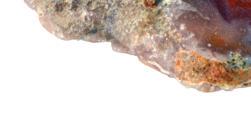





Keep an eye out for rounded, smooth, walnut-size stones with distinctive banding and vibrant colors. Johnson says reds are the most common because of northern Minnesota’s ironconcentrated ground. “When in doubt, dig it out—anything colorful with banding and a waxy appearance,” he says. “Sometimes they don’t expose themselves so easy and you might need a small magnifying glass. And agates are translucent, so holding up a small, strong flashlight to it might help you determine if it’s an agate or not.”

Remember to tread lightly and leave no trace as you explore Minnesota’s North Shore. Respect the natural environment and wildlife and adhere to park regulations regarding rock collecting and beachcombing.

For an agate-hunting expedition along the North Shore, several key locations beckon. Note, some locales allow only looking, not taking, so check local rules before bringing anything home. Take
time to carefully scan the shoreline, paying close attention to areas where rocks and driftwood accumulate. Agates often blend in with their surroundings, so a patient and methodical approach is key to spotting these hidden gems.
Start at a public beach or any other location that has exposed rock gravel. One such hot spot is Grand Marais, where the rocky shoreline yields a variety of agates washed ashore by Lake Superior’s relentless currents. Just south of Grand Marais, Cut Face Creek Wayside o ers another accessible agate beach and is a haven for veteran rock collectors.
For those willing to venture off the beaten path, the outcrops and secluded coves of Beaver River Beach provide ample opportunities for agate hunting. Along the rugged terrain where Beaver River and Lake Superior converge, be sure to scan the shoreline and tide pools for signs of agates gleaming amid the natural debris.
The rocky shores of Brighton Beach and Stoney Point— between Duluth and Two Harbors along Highway 61—are other promising locales. Wander along the pebbled beaches and explore the nooks and crannies of the shoreline, where agates often hide among the rocks and driftwood.
Stretching from Duluth to Grand Portage, the Highway 61 drive is an iconic rite of passage for adventurous Minnesotans along the Lake Superior shoreline. Visitors will find ample accommodations, dining and libations, and extracurricular activities against a stunning backdrop.
Beaver Bay’s Cove Point Lodge o ers rustic cabins and lodge rooms with lake views. Alternatively, Bluefin Bay on Lake Superior provides a quintessential North Shore experience with scenic lakeside suites, as well as complimentary guided hikes, guided bike excursions, kayak lessons, kids’ activities, live music, and more. In Grand Marais, the Harbor Inn o ers comfortable rooms with harbor views, while the East Bay Suites are spacious with modern amenities and easy access to downtown shops and restaurants.
When it comes to dining, the North Shore celebrates the region’s rich flavors and local ingredients. At the Angry Trout Cafe in Grand Marais, diners can savor fresh-caught fish and locally sourced produce while enjoying panoramic views of Lake Superior. For a taste of northwoods comfort food, head to the Gunflint Tavern for hearty soups, sandwiches, and pizzas served alongside an impressive selection of craft beers and cocktails.
In Two Harbors, visitors can dine at the Ledge Rock Grille, where stunning seascape views complement seasonal dishes made with locally sourced ingredients. Grab a brew at Castle Danger Brewery, and, for a casual dining experience in Two Harbors, stop at Betty’s Pies, a beloved North Shore institution known for homemade pies and classic diner fare.
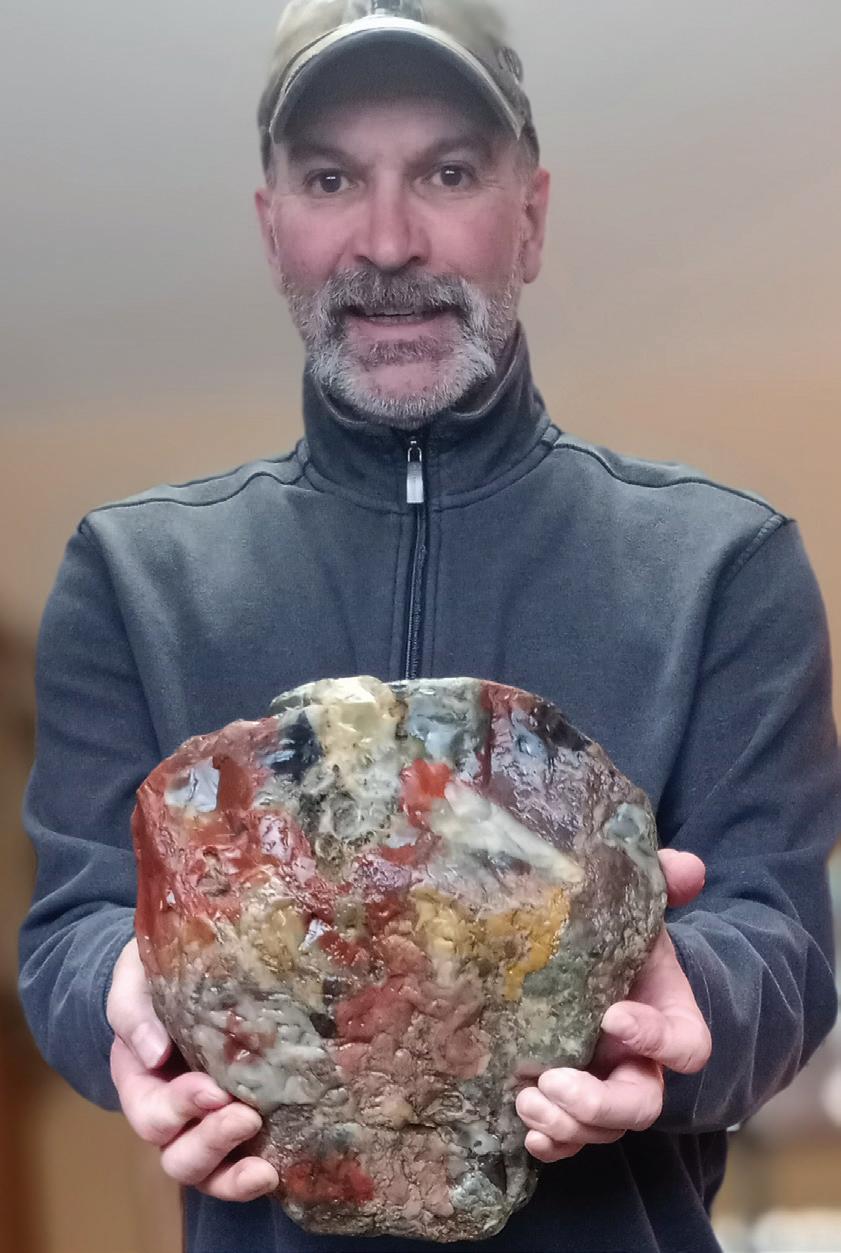
ADVICE FROM ‘THE AGATE MAN’
A self-taught geologist, Lyndon Johnson has been collecting agates, fossils, and gemstones for more than 30 years. He has even collected two of the state’s largest agates on record. Naturally, we had some questions for him.
TELL US ABOUT YOURSELF.
For me, rock hunting is a Minnesota pride thing. I like showing others [during presentations at schools and libraries] what to look for, and I put thousands of miles on throughout the year. If I can find it, anybody else can, too— you just need to learn where, how, and what to look for. Over the years, I’ve accumulated 1,800 pounds of agates, and my biggest is just over 30 pounds.
CAN YOU SHARE A FAVORITE STORY FROM YOUR TIME SPENT AGATE HUNTING?
This winter I found a 20-pound agate. I woke up and had a premonition, and I thought to myself, “We don’t have snow. I’m gonna go rock hunting, and I’m gonna find the biggest, most beautiful agate.” I headed to a field that I hadn’t been to in nine years. I just had a good feeling. Very few agates over 20 pounds have ever been found, and now I have two.
WHAT ADVICE WOULD YOU OFFER THOSE EAGER TO TRY AGATE HUNTING?
Just get out and enjoy the day in nature. If you find something, that’s a bonus. It’s kinda like gold fever— you get hooked and want to find more.




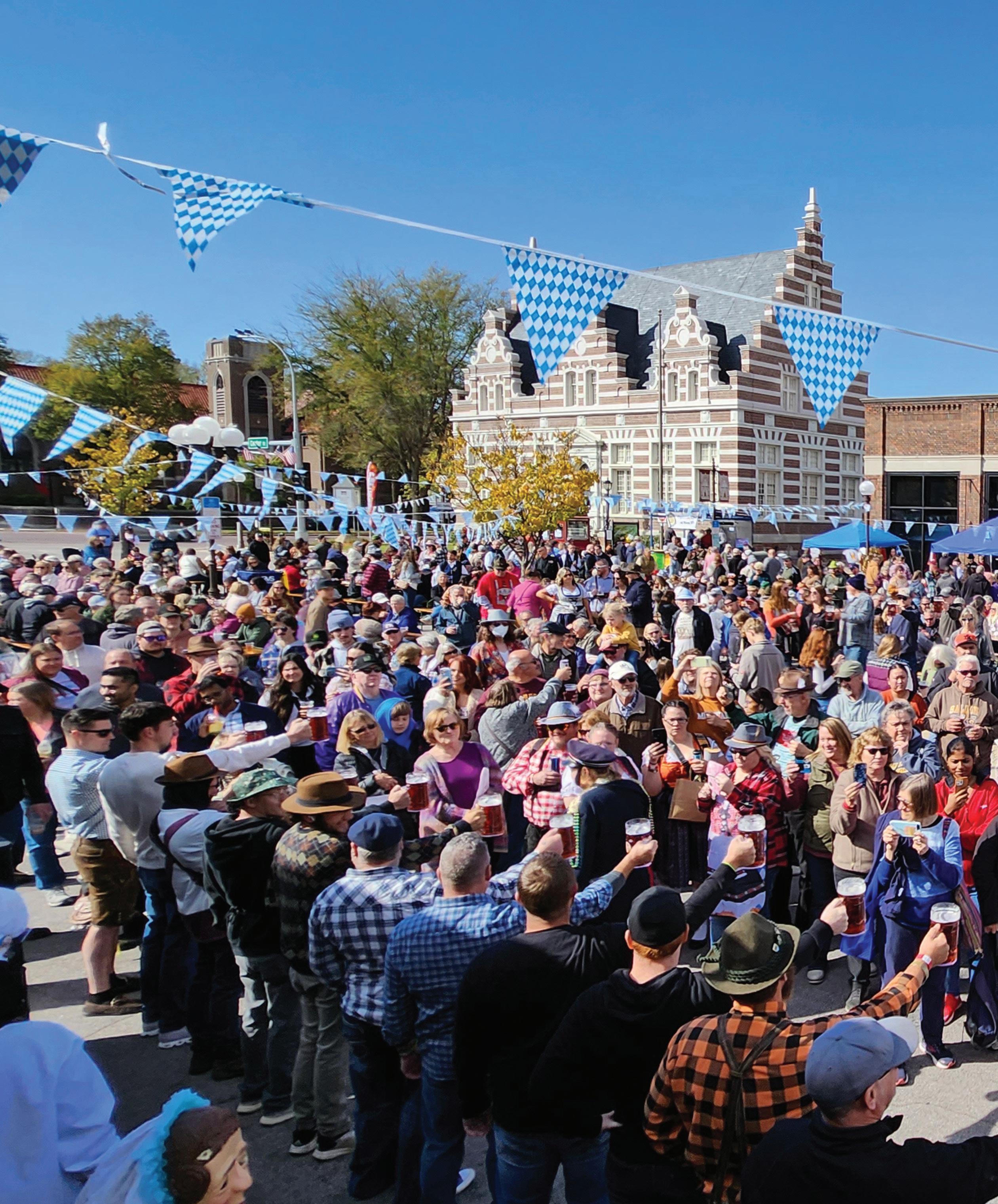


SCENIC OVERLOOKS, FESTIVE BEERS, AND GERMAN TRADITIONS AWAIT IN NEW ULM
by MACY HARDER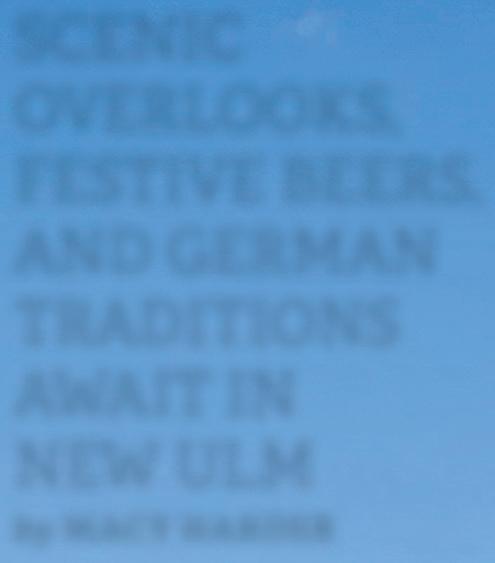

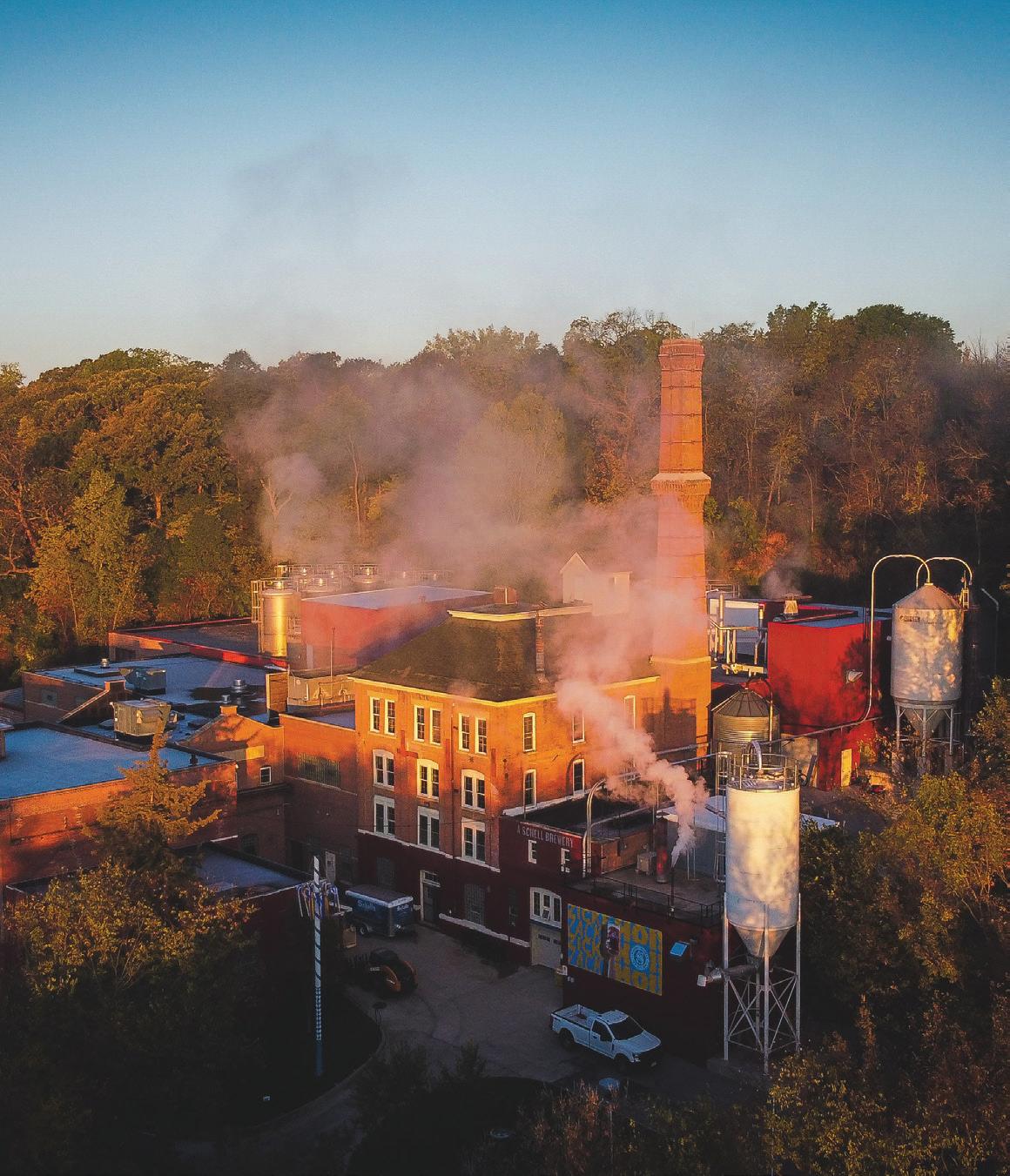
After a hot summer , there is nothing better than the onset of a Minnesota fall. Temperatures drop just enough for you to throw on your favorite flannel. Caramel apples and hot cider are back in season, and the landscape comes to life with swathes of brightly colored foliage. It’s the perfect time to embark on a day trip or weekend getaway, as many towns across the state are known for their fall festivals and seasonal activities.

One such destination is the historic city of New Ulm, 90 miles southwest of the Twin Cities. New Ulm was founded by German immigrants in 1854, and the city continues to pay homage to its heritage and cultural traditions. In fact, U.S. Census data from 2000 called it “the most German town in America.” After being greeted by a Willkommen sign on the way into town, visitors will find German restaurants, architecture, monuments, and other tributes to the motherland lining the streets. German-inspired festivals, including the town’s famous Oktoberfest, also play a major role in the New Ulm community. With seasonal festivities, historic attractions, and picturesque views of the surrounding river valley, New Ulm is an excellent destination for fall fun of all kinds.
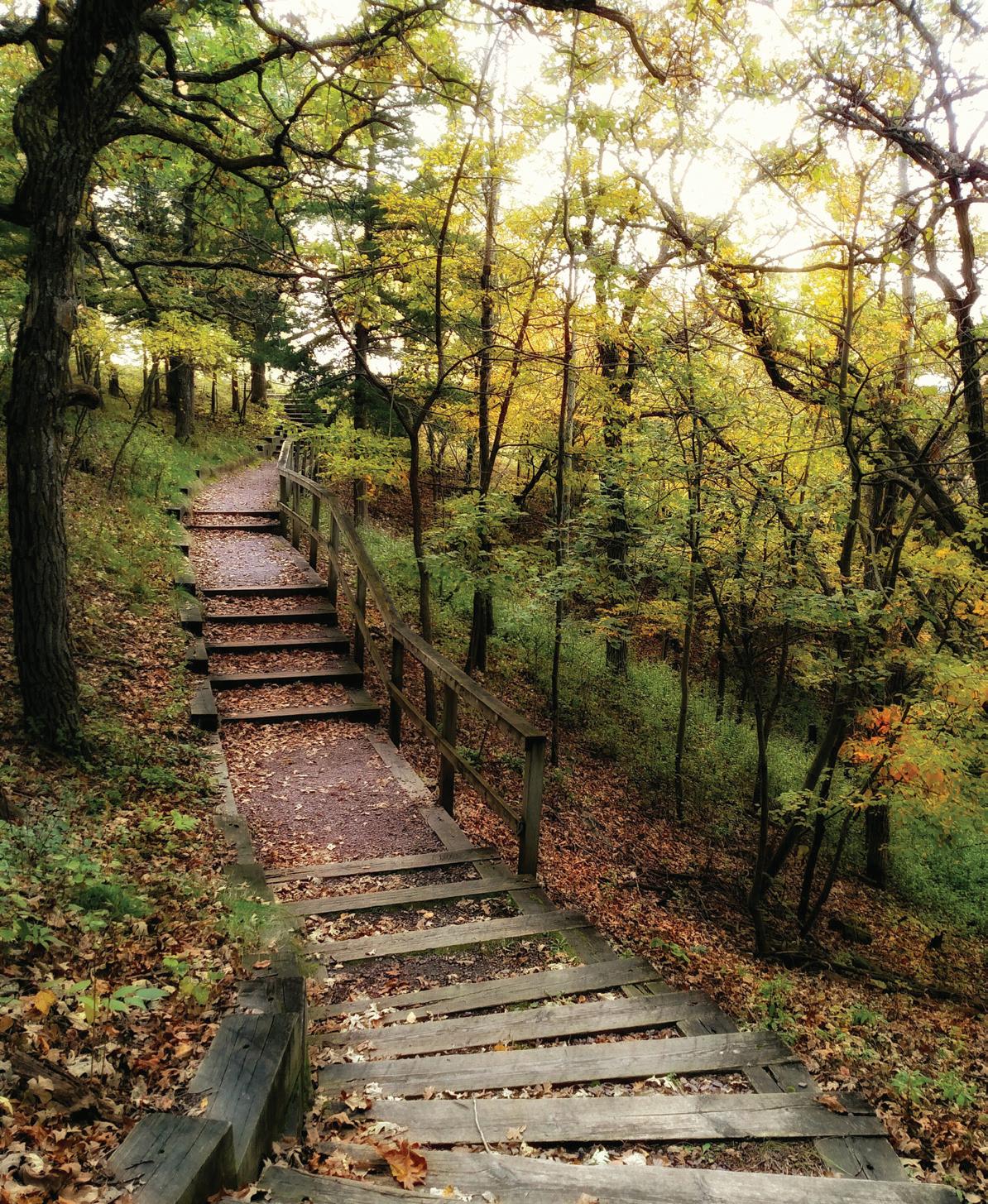




While the North Shore receives much acclaim, don’t underestimate southern Minnesota when it comes to fall color displays. The region typically has a longer, warmer autumn season with color peaks that can extend into mid-October, giving visitors more time to experience the views.
Situated along the Minnesota River Valley National Scenic Byway, the drive into New Ulm is a prime leaf-peeping destination in and of itself, o ering stunning views of the river, blu s, and valleys. In town, check out the colorful leaf canopies and blu -top overlooks at Flandrau State Park, where you can hike alongside the Cottonwood River.
Autumn is a great time for camping, and the park o ers 84 sites across its three campgrounds. Camper cabins are available year-round, as well. For bird’s-eye views of the fall colors, head to Hermann Heights Park and climb the 102-foot Hermann the German Monument—from the top of the stairs, you can marvel at the stunning river valley below.
If you’re going to visit New Ulm in the fall, it should be during Oktoberfest. Since 1981, the annual festival has grown into one of the largest Oktoberfest celebrations in the Midwest, attracting thousands of visitors to the area during the first two weekends of October.
Modeled after the original Oktoberfest in Munich, the entire event is a celebration of New Ulm’s German roots. In the historic downtown area, lederhosen-clad attendees eat brats, sip bier, and partake in sauerkraut-eating, yodeling, and steinholding competitions. Family-friendly activities include the Germanic-American Day parade, horse-drawn trolley rides, puppet wagon shows, a corn pit, and face painting. Whether you’re looking to connect with your own German heritage or simply enjoy some bratwurst, New Ulm’s Oktoberfest should be on your fall bucket list.
Many of New Ulm’s breweries and restaurants o er their own slice of German culture and the perfect ambiance for an autumn day. Start at the historic Schell’s Brewery, the first in Minnesota to start producing craft beers and the second-oldest familyowned brewery in the state. Founded by German immigrant August Schell in 1860, the August Schell Brewing Co. was meant to serve the area’s growing immigrant population. The brewery itself has seen many evolutions—it survived the Prohibition Era by producing “near-beer,” soft drinks, and candy—and has withstood the test of time in the New Ulm community and beyond. After acquiring the Grain Belt label in 2002, Schell’s became the largest brewery in Minnesota.
With its own line of German craft lagers, Schell’s emerged at the forefront of the craft beer scene of the ’90s. Nowadays, Schell’s still o ers a rotating lineup of year-round and seasonal German crafts, which features ales, lagers, and pilsners. The Oktoberfest brew, o ered July through October, is a true-totradition Märzen-style lager brewed once a year to celebrate the fall harvest. Speaking of Oktoberfest, the brewery typically hosts its own outdoor festival with kegs, beer wagons, and live entertainment. Prost!
Afterward, head to Kaiserhoff for a true German-style meal amid old-school tavern decor. The menu boasts traditional specialties such as sauerkraut, brats, potato salad, braised ribs, schnitzel, and more. New Ulm has plenty of non-German eateries, as well. Lola is a cozy American bistro serving breakfast, lunch, and dinner. Enjoy tapas al fresco on the rooftop patio at Rush or grab some bar food at 209 Pub & Grill. If you prefer wine, check out Morgan Creek Vineyards, an underground winery with tastings and live music.

THE TOWN OF ALEXANDRIA IS AN EVERY-SEASON ESCAPE, BUT ESPECIALLY SHINES IN THE WINTERTIMEby KATHY BERDAN


Remember when the alexandria lakes area was only about summer fun—boating, biking, camping, fishing?
Yeah, neither do the folks in Alexandria.
When the trees are bare, the bike trails are covered in snow, and the lakes are frozen, this part of central Minnesota becomes a cool playground.
There’s just about every type of winter outdoor activity in the heart of Douglas County, about two hours northwest of the Twin Cities on Interstate 94. Downhill skiing, cross-country skiing, snowshoeing, snowmobiling, ice fishing, ice skating, sledding—in wooded or wide-open spaces.
“You can do any activity, and we’re not up in the middle of the boonies,” says Joe Korkowski, executive director of Explore Alex, the area’s tourism organization.
But it’s not all chilled thrills. Visitors can warm up and fill up at restaurants, bars, and breweries, too. There’s a range of shopping: everyday to night-on-the-town clothing stores, home decor and boutiques, and even a shop that specializes in Scandinavian gifts.
Speaking of Scandinavian, Alexandria celebrates its Nordic roots with the 28-foot-tall Big Ole statue (billed as America’s biggest Viking).

It once welcomed visitors from the center of the town’s busy downtown main street, but photo ops crowded the street even before the advent of selfies, so Ole was moved north to Central Park on the shores of Lake Agnes. It marks the trailhead for the Central Lakes Trail. What’s Ole up to at this moment? Fans can watch a livecam of Big Ole at explorealex.com. (Spoiler: He’s just standing there.)
Talking trails? Connections abound in the area for crosscountry skiers, snowmobilers, snowshoers, fat bikers, and hikers.
n The county has 368 miles of snowmobile trails thanks to the Douglas Area Trails Association. Don’t have a “machine”? Lake Darling Resort rents new sleds.
n Andes Tower Hills has 14 miles of cross-country ski trails plus 16 downhill skiing, tubing, and snowboarding runs. There are also cross-country ski trails at Lake Carlos State Park and Kensington Rune Stone Park, which both have snowshoe trails as well.
n There are 350 lakes in the county for ice fishing. And, again, if you don’t have equipment, you can rent some. The Community Education program rents out fishing equipment, including portable fishing houses, poles, and augers. Nearby Arrowwood Resort also has rentals, and Jake’s Bike’s offers fat biking sales and rentals, too.
n If you want to strap on the blades and skate outdoors, Alexandria has rinks at Noonan Park and Big Ole Park. The Noonan Park rink has a warming house, and the city regularly takes a Zamboni to the ice to keep it smooth.
n “Kensington Rune Stone Park and Lake Brophy Park have excellent sledding hills,” Korkowski says, and “both places are also really good for fat biking.”
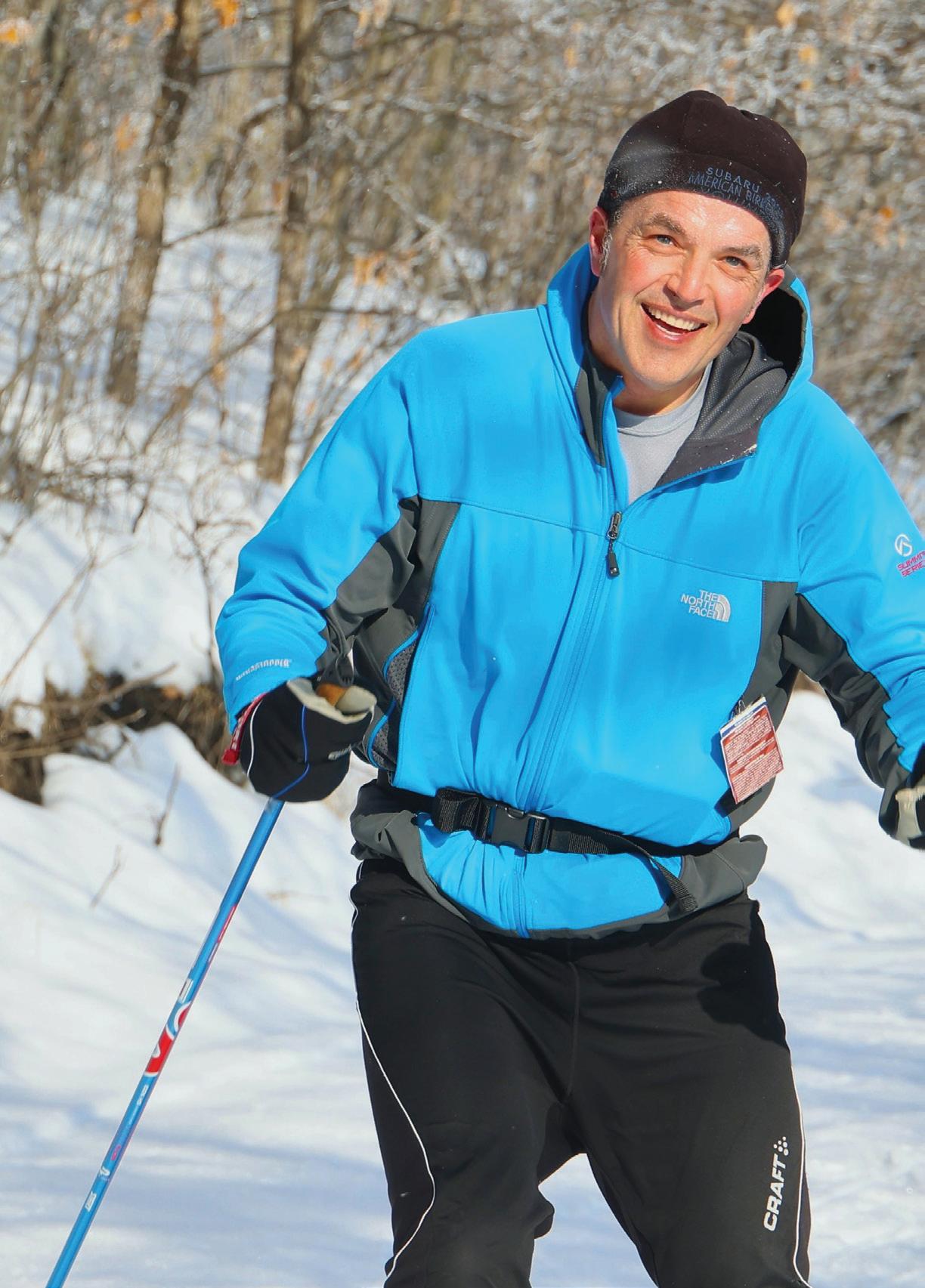
Restaurants in Alexandria range from sophisticated (The Garden Bar on Sixth) to hearty (Pike and Pint Grill) to eats with local brews (Coppertrail Brewing Company’s 205 Grill or woodfired pizzas at Stoke Wood-Fired Pizza Kitchen at 22 Northmen Brewing Company). For traditional lunch and breakfast eats, Traveler’s Inn Cafe has been flipping ’cakes and eggs for three generations in downtown Alexandria.
If cross-country skiing reacquainted you with some muscles you haven’t used for a while, consider an indoor break at the Runestone Museum. The Kensington Runestone has been the subject of documentaries, theories, and legends for years. Did Nordic visitors explore Alexandria in the way-back days of the 14th century and leave a message on a block of stone unearthed in a field near Kensington in 1898? See the runestone for yourself at the museum. Though hours are limited in the winter, the museum has exhibits that highlight Norse and Native histories. There is a 40-foot replica of a Viking merchant ship called the

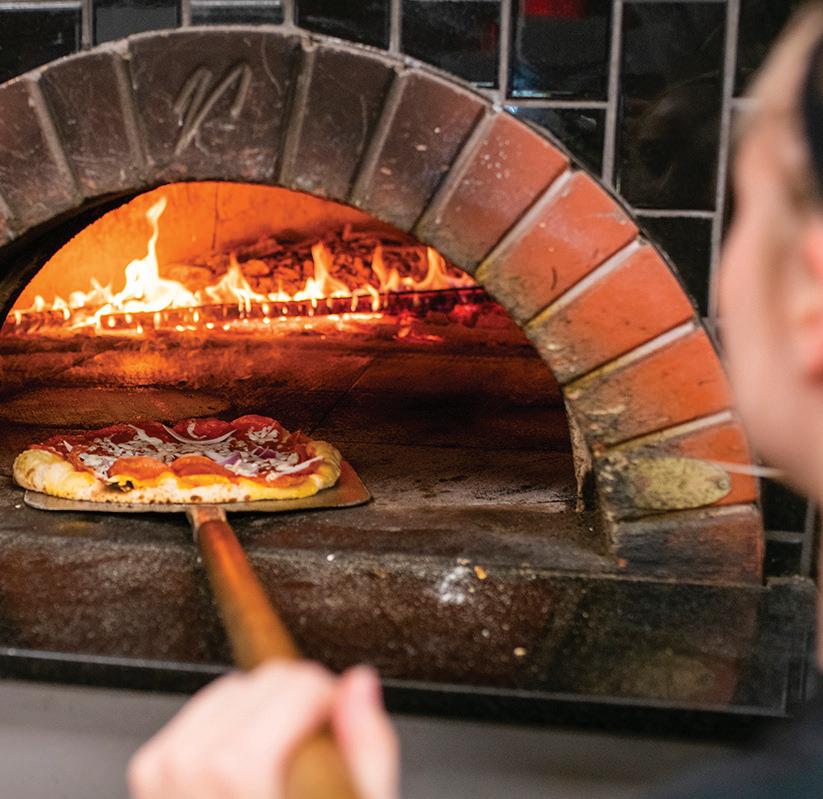
There was, of course, li le to no snow in the Alexandria area this winter. But two longtime pals and I still found plenty to do on a January 2024 overnight road trip, though it was during a chilly, foggy stretch when we could barely see to the tip of Big Ole’s helmet.
But, hey, you can eat and drink in any weather.
Snorri, and nearby Fort Alexandria has authentic log buildings and an 1880 country schoolhouse. Again, these may not be open in the winter, so check ahead.
Alexandria has B&Bs, hotels and motels, smaller resorts, and private vacation homes available.
The biggie when it comes to Alex-area resorts is Arrowwood. The longtime resort has hundreds of rooms, a waterpark, campfires, along with outdoor activities such as cross-country skiing, ice skating, sledding, and ice fishing.
Newer to the big resort game is Lake Darling Resort, which has four-to-five-bedroom villas, year-round accommodations, a heated pool and hottub in the clubhouse, and a fleet of new snowmobiles to rent, along with other winter activities.
If you want to sound like a local, pronounce the city’s name “Alek,” not “Alex.” Korkowski says he doesn’t know why, and the tourism o ce can be pronounced either way.
A er some shopping in downtown Alex (Scandinavian Gi Shop was a favorite), we had a leisurely lunch at the Garden Bar on Sixth (try the flatbread).
We spent most of the a ernoon at Carlos Creek Winery just outside of town. Since it was a snowless midweek visit, there were just a few other visitors, and our “sommelier” had plenty of time to spend with us on a guided tasting. For $13 per person, we each chose four tasty wines and got to keep the glass. A favorite: the Aurora white. Between sips and wandering through the gi shop, we learned that Bold North Cellars includes the winery, a nearby event center, and the 22 Northmen Brewing Co. next door. In a snowy winter, there are 3 miles of snowshoe/cross-country ski trails on the 190-acre property.
Of course, we had to then sample a brew from 22 Northmen, which was built from reclaimed wood and features a huge wood-burning fireplace in the center. They even built a fire for us when we requested it, though we were three of just a handful of customers.
We stayed at the comfortable Best Western and, a er checking in, had a fine dinner of steak and walleye at Pike and Pint Grill. Though it’s located in a commercial district just o the interstate, the restaurant has a bit of a supper club vibe.
Although there was no snow, so no outdoor activities, we still had plenty of good food and drinks, which, of course, led to plenty of laughs, stories, schemes, and fun getaway memories.
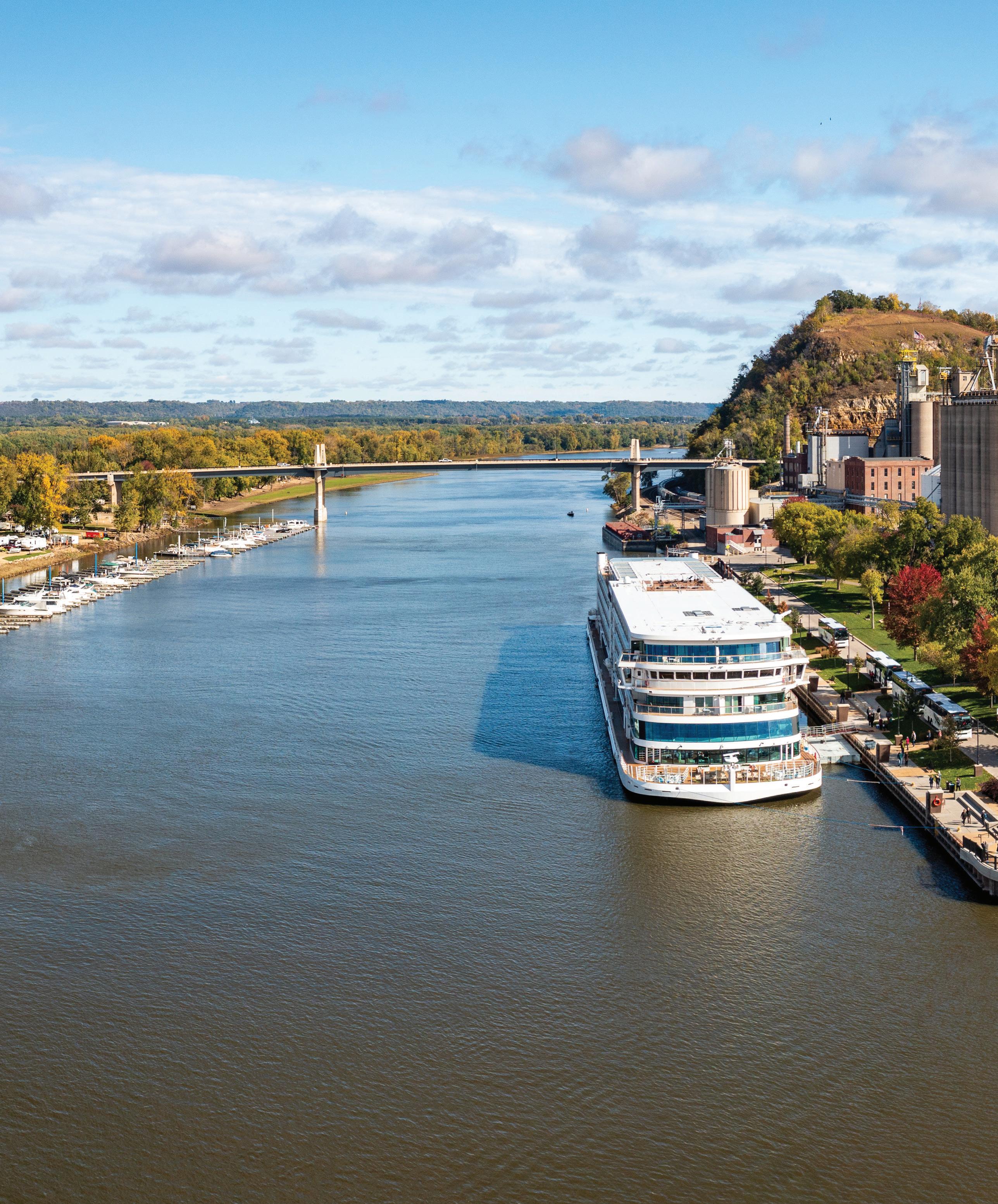



A JOURNEY ALONG THE MISSISSIPPI RIVER SHORELINE FROM RED WING TO KELLOGG IS PACKED WITH FUN
by AMY CARLSON GUSTAFSON


The mighty mississippi river is the star of the 3,000mile Great River Road, a National Scenic Byway beginning with the river’s headwaters at Lake Itasca in Minnesota and weaving through 10 states to the Gulf of Mexico. While driving the entire route north to south is a significant commitment, there are plenty of shorter options for weekend excursions and day trips, including the 36-mile stretch from Red Wing to Kellogg, Minnesota. Enjoy shopping, hiking, camping, boating, birdwatching, or simply relaxing as you explore the picturesque landscape and delightful river towns. Spring is an ideal time for this route, and here are some favorite stops along the way.
Red Wing, the largest city on this excursion, o ers historic charm in abundance. Opened in 1875, the St. James Hotel o ers a variety of accommodations, including Victorian-inspired rooms with views of the Mississippi River. Take a self-guided walking tour downtown, visit the Pottery Museum of Red Wing, and pose for a photo alongside the world’s largest boot—size 638 and a half!—at Red Wing Shoe Store & Museum. Don’t


miss He Mni Can (Barn Blu ), a must-do activity for outdoor lovers with spectacular views and moderate-to-challenging hikes.
pro tip : Make sure to grab a tasty treat from the awardwinning Hanisch Bakery and Co ee Shop before leaving town.
Home to various landscapes, including blu s, prairies, fl oodplains, and hardwood forests, the more than 2,600 acres of Frontenac State Park offer a diverse habitat for wildflowers and prairie grasses to thrive. According to the Minnesota State Parks and Trails, it’s also a bird-watchers dream with the highest species count (273) of any park in the state. Hiking and camping options are also plentiful.

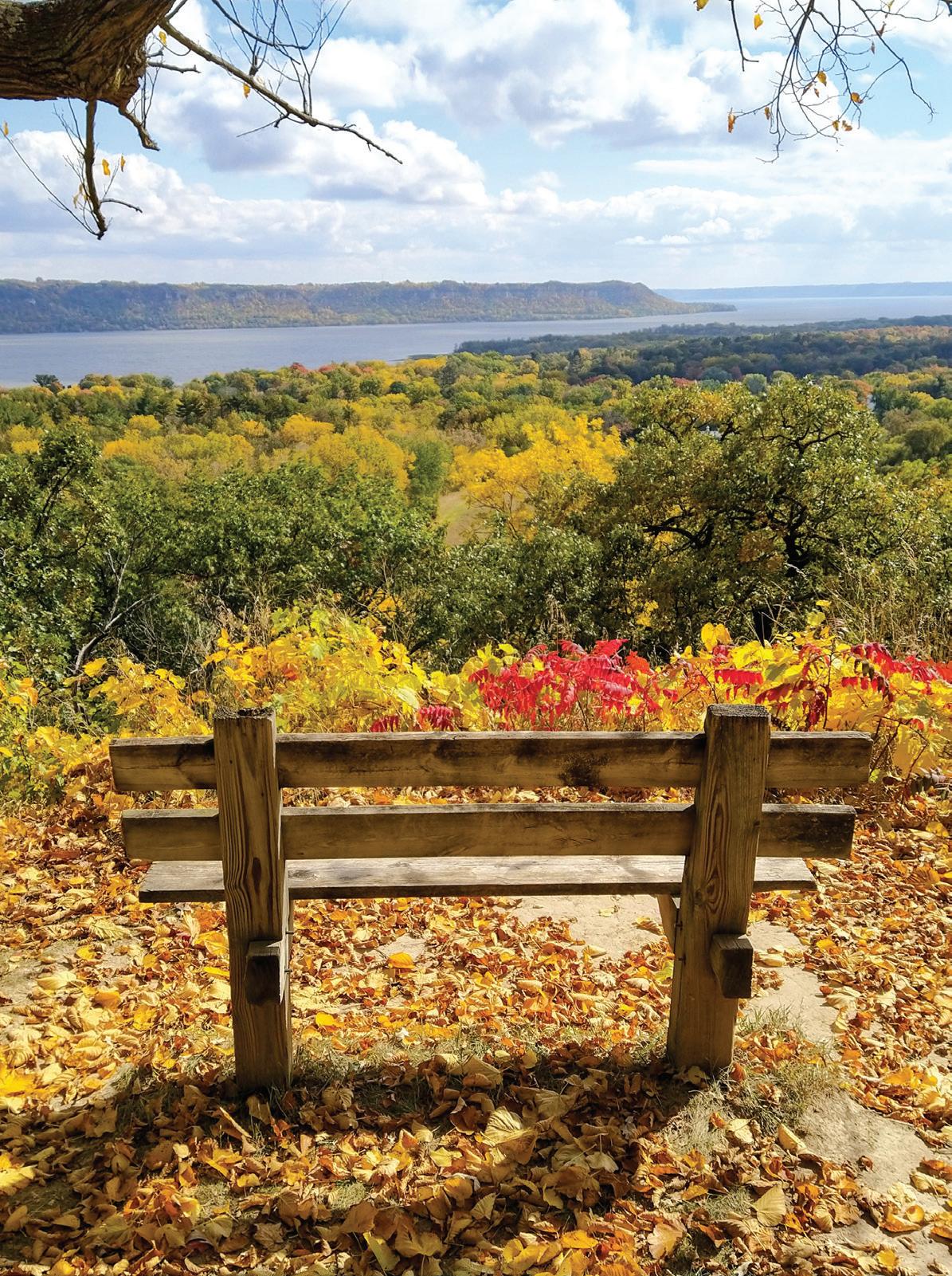

pro tip: Pack a lunch and take advantage of the accessible picnic area.

at Ohuta Park and Beach, or enjoying a stunning sunset over the water, there is no shortage of activities for outdoor-loving visitors. Willows on the River, a condominium resort with a mix of private residents and rentals, o ers stunning, unobstructed views of Lake Pepin.
pro tip: Keep your eyes peeled for eagle sightings.




Sitting high above Lake Pepin, the Hok-Si-La Park and Campground is a perfect place to set up your tent for water and blu views. With several camping spots and cabins available for weekend stays, the park includes a playground, basketball and volleyball courts, hiking trails, beach, and boat launch. Take a stroll on the beach, gather a group for a volleyball game, or hit the water for fishing or other activities.
pro tip: Snag one of the benches overlooking Lake Pepin for stunning water views and blu s.
The host of the 2024 Governor’s Fishing Opener in May, Lake City is known for being the birthplace of water skiing. Whether you’re interested in sailing on Lake Pepin, soaking in the sun
This “Eagle Capital of America” is home to the National Eagle Center, attracting visitors worldwide who want a close-up look at the majestic birds. The building, which has recently been renovated, is home to its ambassadors—four rescued eagles and a red-tailed hawk—used in educational programming. The center also o ers hands-on exhibits, an outdoor observation deck for spotting eagles in the wild, and several “experiences,” including field trips, river cruises, and behind-the-scenes tours.
pro tip: The local AmericInn has themed suites, including one in honor of “Grumpy Old Men,” the 1993 movie based in Wabasha (and filmed throughout Minnesota).
LARK Toys is magical. A whimsical carousel with an eclectic mix of hand-carved animals runs every half hour. A stellar book room is full of classics and surprises. A nostalgic walkway lined with storefronts features antique toy collections from multiple eras. A workshop o ers a peek at artisans making heirloom wooden toys. And, of course, you’ll fi nd tons of toys—puppets, games, puzzles, science kits, rubber duckies, train sets, and so much more—throughout the massive playground of a store.
pro tip: For even more fun—if that’s possible—sign up for a game of mini-golf at the store’s outdoor 18-hole course adorned with waterfalls and streams with blu s in the background.
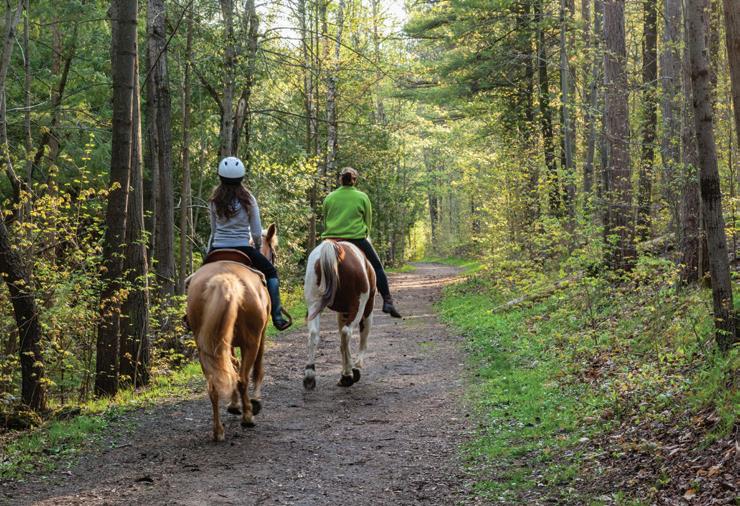


Explore the vibrant Twin Cities and discover a wealth of activities year-round

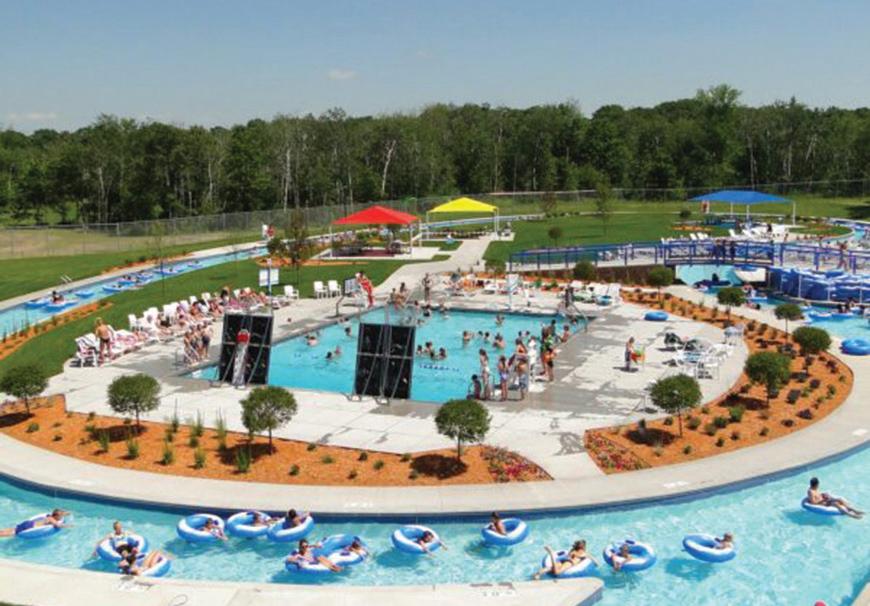






win Cities Gateway is your launchpad for adventure! Minnesota’s largest water park? Check. Award-winning golf courses? Yep. Hiking trails and breweries? Absolutely! All within minutes of Minneapolis and St. Paul. In the summer, cool o at Bunker Beach Waterpark in Coon Rapids or catch exciting sports events at the National Sports Center in Blaine. Wander through the charming Downtown Anoka and immerse yourself in the local culture with festivals in each of Twin Cities Gateway’s 10 communities.
As fall sets in, experience the spooktacular Anoka Halloween festivities or enjoy horseback riding at Bunker Hills Stables. Don’t miss out on the delightful breweries and winery tours o ering unique flavors and experiences. When winter arrives, downtown Anoka transforms into a winter wonderland, and Riverdale Village Shopping Center in Coon Rapids offers a perfect spot for holiday shopping. Brave the Brrr events in New Brighton add a thrilling twist to the winter season. Twin Cities Gateway welcomes you to a diverse range of experiences throughout the year! tcgateway.com
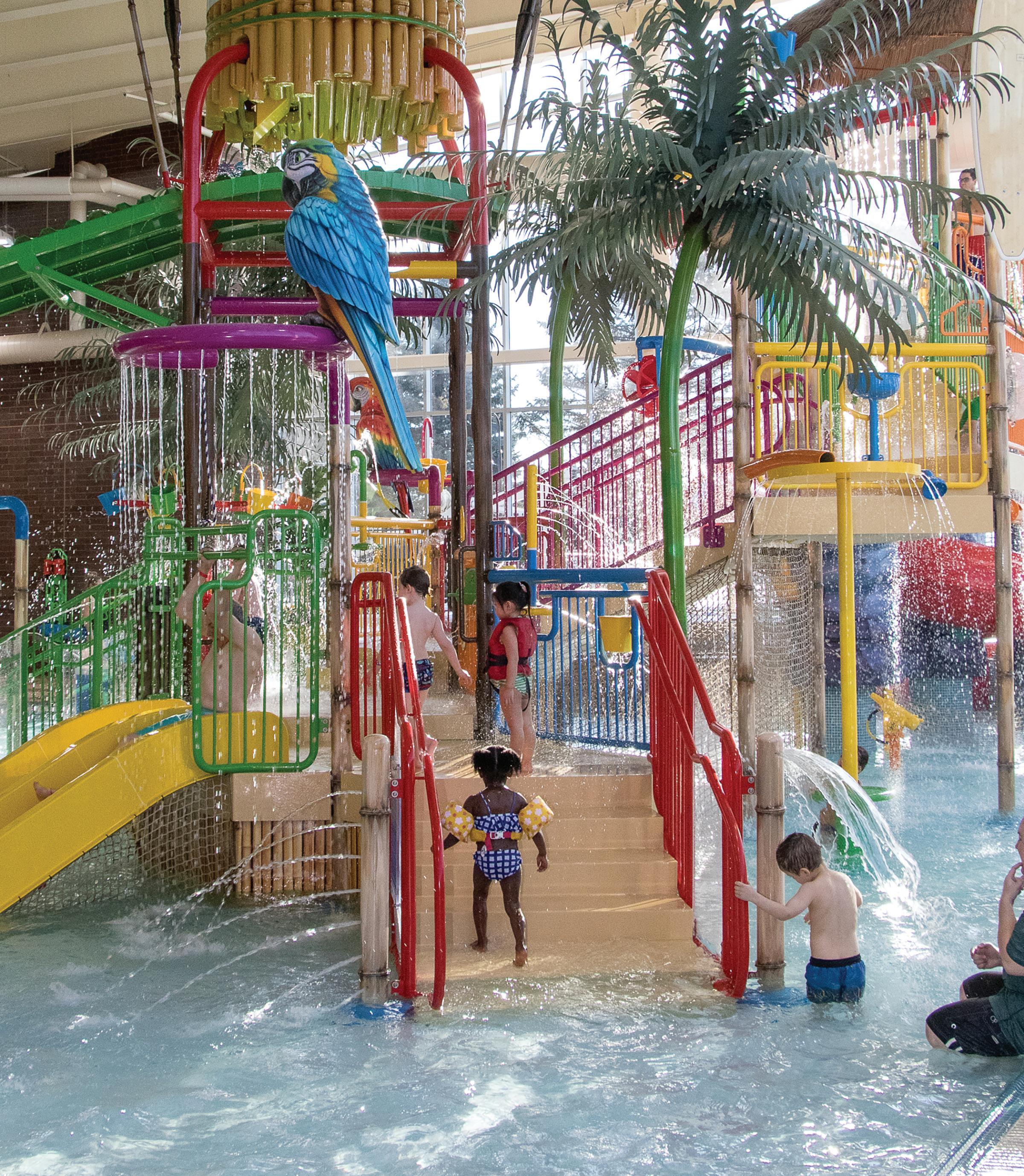







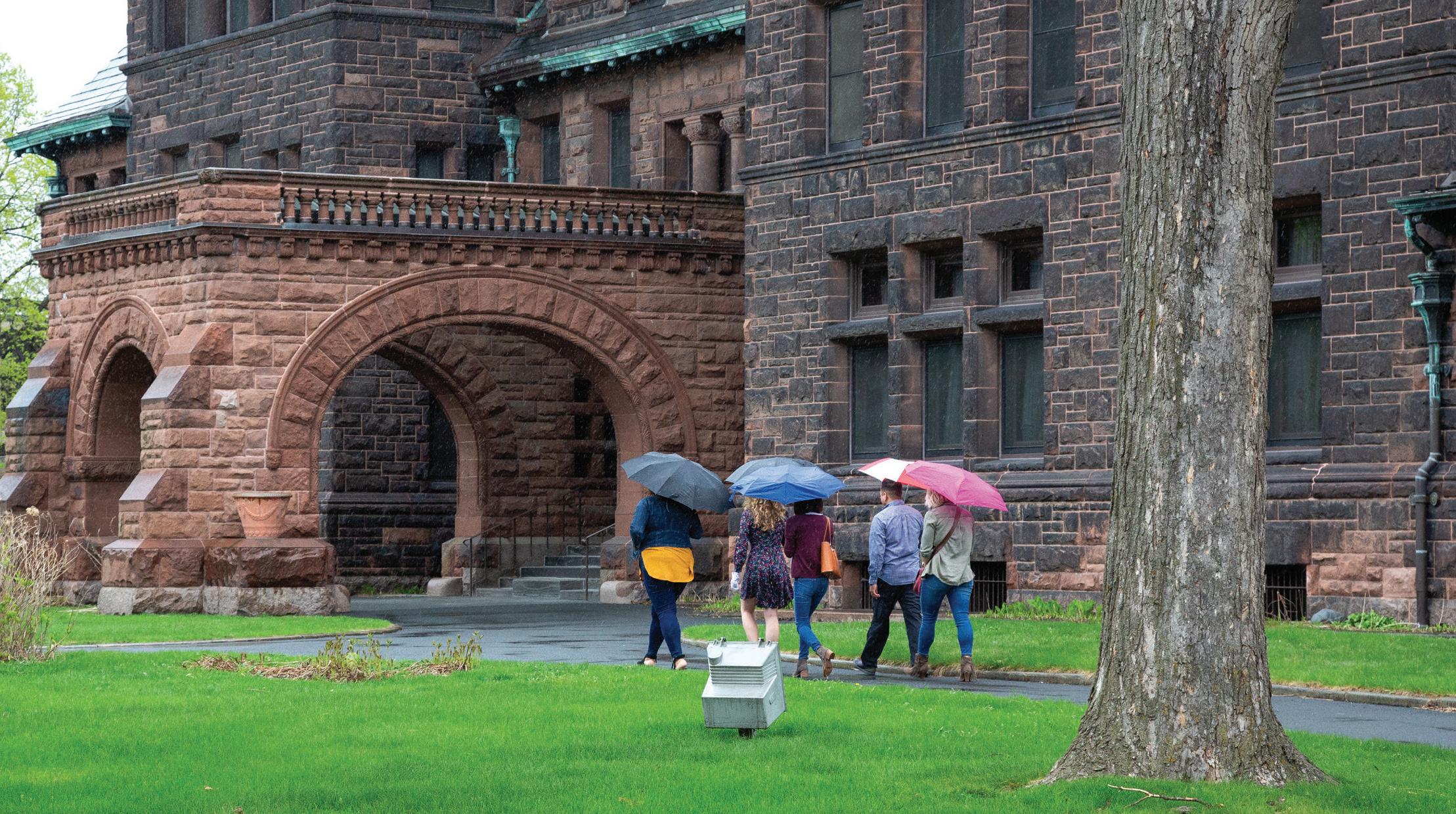



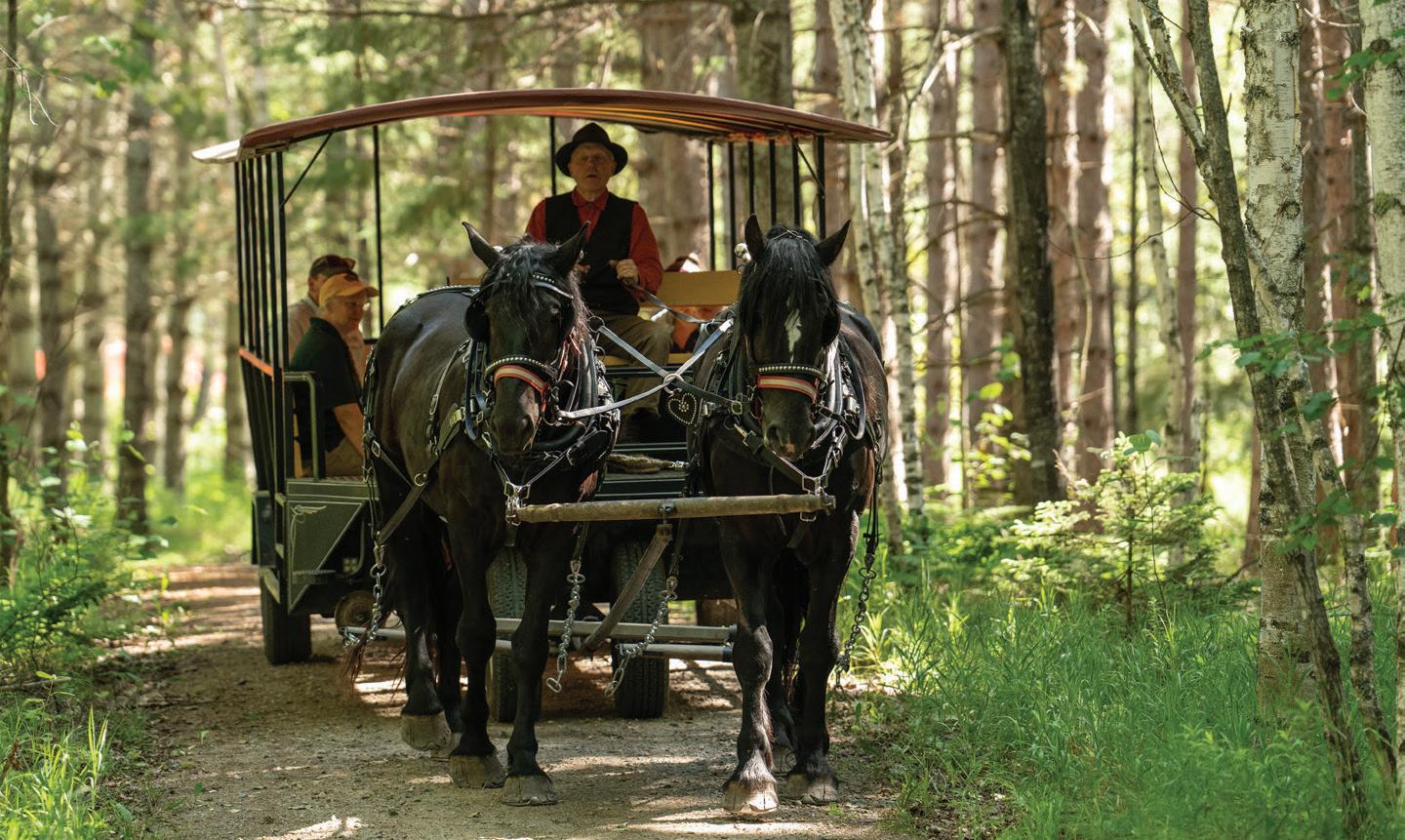













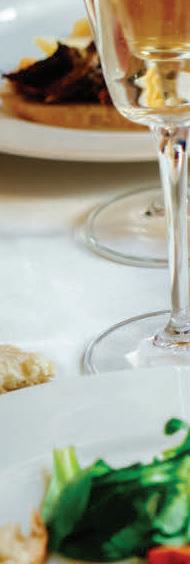




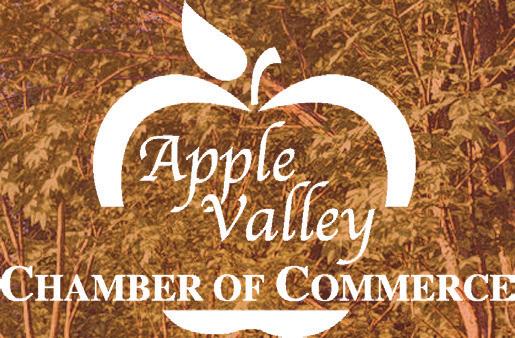
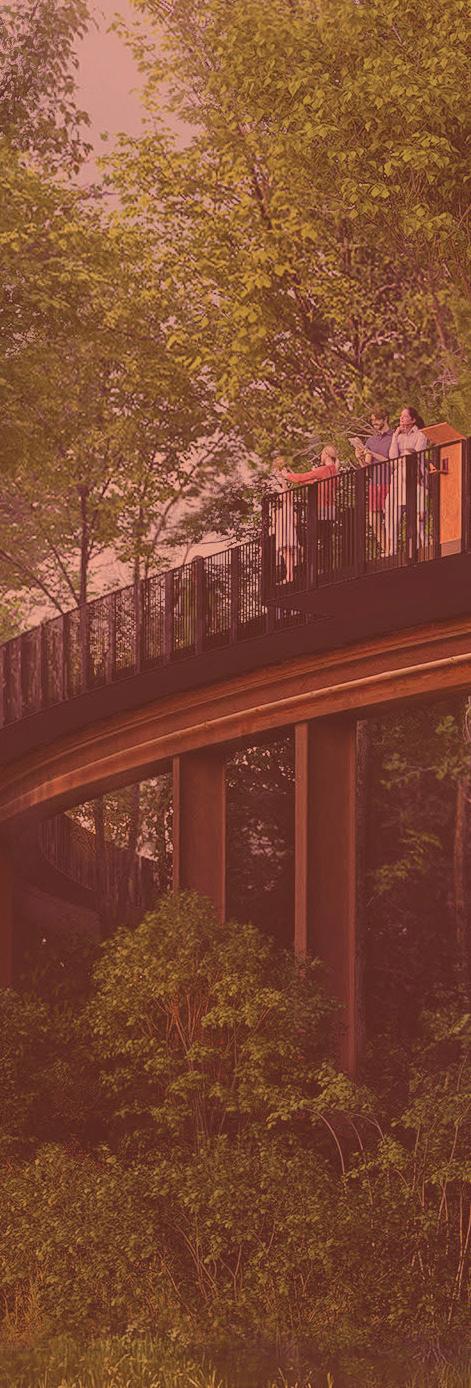









Designed for families, Apple Valley is central to everything with 60+ restaurants, local shops and lots to explore.







• 8 minutes to Mall Of America and even closer to TC Premium Outlets

• Transit every 15 Minutes Near All Apple Valley Hotels — to Outlets, Mall Of America, MSP Airport and Downtown Minneapolis

• Equal distance from Minneapolis & St. Paul
• Visit The Minnesota Zoo, Bogart’s Entertainment Center & Bowling, Valleywood Championship Golf Course and Abdallah Chocolates and Gift Shop! Motorcoaches Welcome!


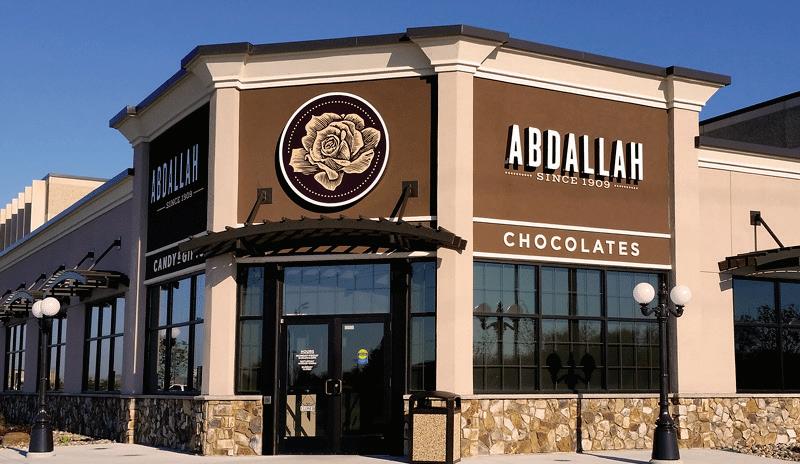


Landmark Center is a dynamic cultural center in the heart of downtown St. Paul and is home to music, dance, theater, exhibitions, public forums, and more. The building, which is free to visit, is an architectural gem full of interesting history, art, and community events. It has five in-house free museums and galleries that guests can visit including the Gallery of Wood Art, Schubert Club Music Museum, HORA Romanian-American Cultural Center, Ramsey County Historical Society, and its North Gallery exhibits. In addition to those, the building offers a wide range of cultural events throughout the year on both weekdays and weekends. Enjoy a free self-guided tour through the ornate halls, gorgeous courtrooms, and magnificent cortile! landmarkcenter.org
Apple Valley is a convenient inner suburb that welcomes 1.3 million visitors annually, and is the proud home to the Minnesota Zoo. The zoo’s all-new Treetop Trail allows visitors to immerse themselves along a 1.5-mile elevated trail—the longest in the U.S.!—26 feet above wildlife from around the globe. See the sights from a new perspective, just over the animals and habitat.
Apple Valley offers Bud Rapid Transit (BRT), leaving from several transit stations near several hotels—every 15 minutes to Mall of America and the Twin Cities. Apple Valley’s hotels are surrounded by up to 60 restaurants, co ee shops, and shopping in a welcoming community atmosphere. With its welcoming community and abundance of recreational activities, Apple Valley promises a memorable and enjoyable experience for all ages. Make Apple Valley your home away from home while visiting the Twin Cities. visitapplevalley.com
Experience the converging histories of Historic Fort Snelling located at Bdote in a new immersive exhibit—”Many Voices, Many Stories, One Place”— told through real people’s perspectives at one of the most pivotal sites in Minnesota history.
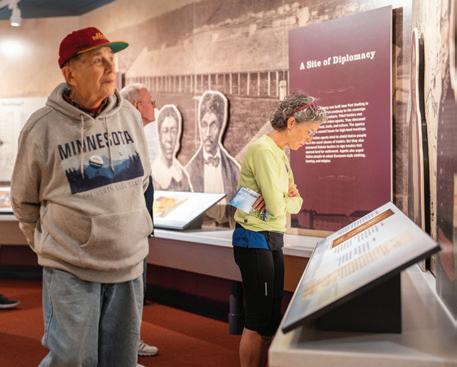
As you journey through more than 10,000 years, witness the site’s complex history unfold through diverse perspectives. Encounter the stories of dozens of individuals whose lives played out at various times, including Dakota and Ojibwe people, Japanese-Americans, immigrants, enslaved African American people, soldiers, and fur traders.
Learn about the sacred Dakota homeland at the confluence of the Mni Sota Wakpa (Minnesota River) and Haha Wakpa (Mississippi River), the military fort that played a pivotal role in our nation’s history, and the site’s importance in the formation of our state. mnhs.org/fortsnelling/exhibit

From quaint and charming small towns to fresh-air outdoor recreation havens to communities with vibrant nightlife, consider these unique destinations for a remarkable getaway.

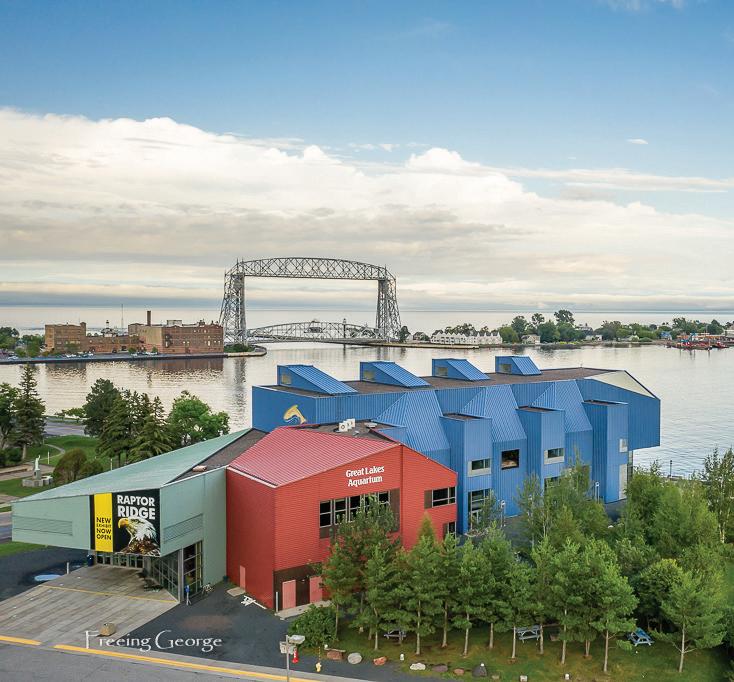
The Great Lakes Aquarium is located on the harbor of Lake Superior with one of the best views of the Aerial Lift Bridge in Duluth. It remains one of the only freshwater-focused aquariums in the world, featuring hundreds of fish, birds, reptiles, amphibians, and mammals from the Great Lakes basin. The aquarium also showcases vibrant saltwater animals in its Oceans Alive and Origins galleries.


The Fagen Fighters WWII Museum in Granite Falls is a showcase of some of the most significant aircraft and ground equipment from World War II and includes planes, vehicles, immersive exhibits, and even a summer airshow every three years.
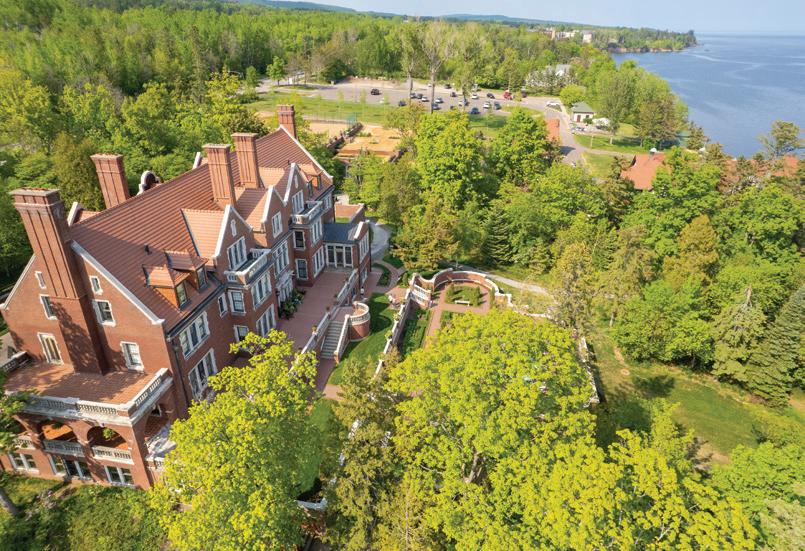
Along the shores of Lake Superior, Glensheen ’ s 12-acre estate features gardens, bridges, and the famous 39-room mansion—built with remarkable 20th-century craftsmanship and telling the story of the Congdon family and the Duluth region. With seasonal tour offerings and events, visitors can easily find a tour that fits their wishes. The estate is open daily for self-guided tours and events.

For all types of outdoor activities, escape the ordinary at Giants Ridge Golf & Ski Resort , nestled in the heart of the picturesque Minnesota north woods. Giants Ridge delivers a dynamic blend of recreation and relaxation, including après-ski options in the cozy chalet and biking, hiking, and golfing activities in the warmer months.


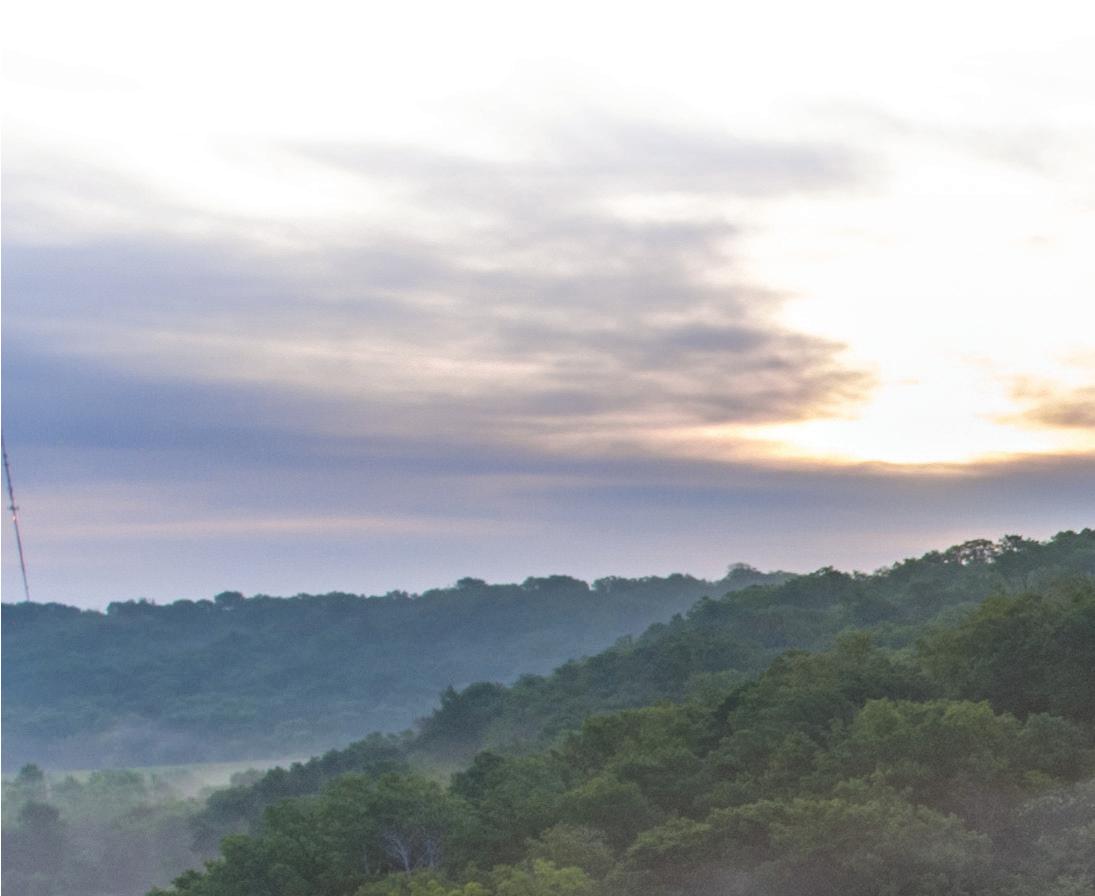
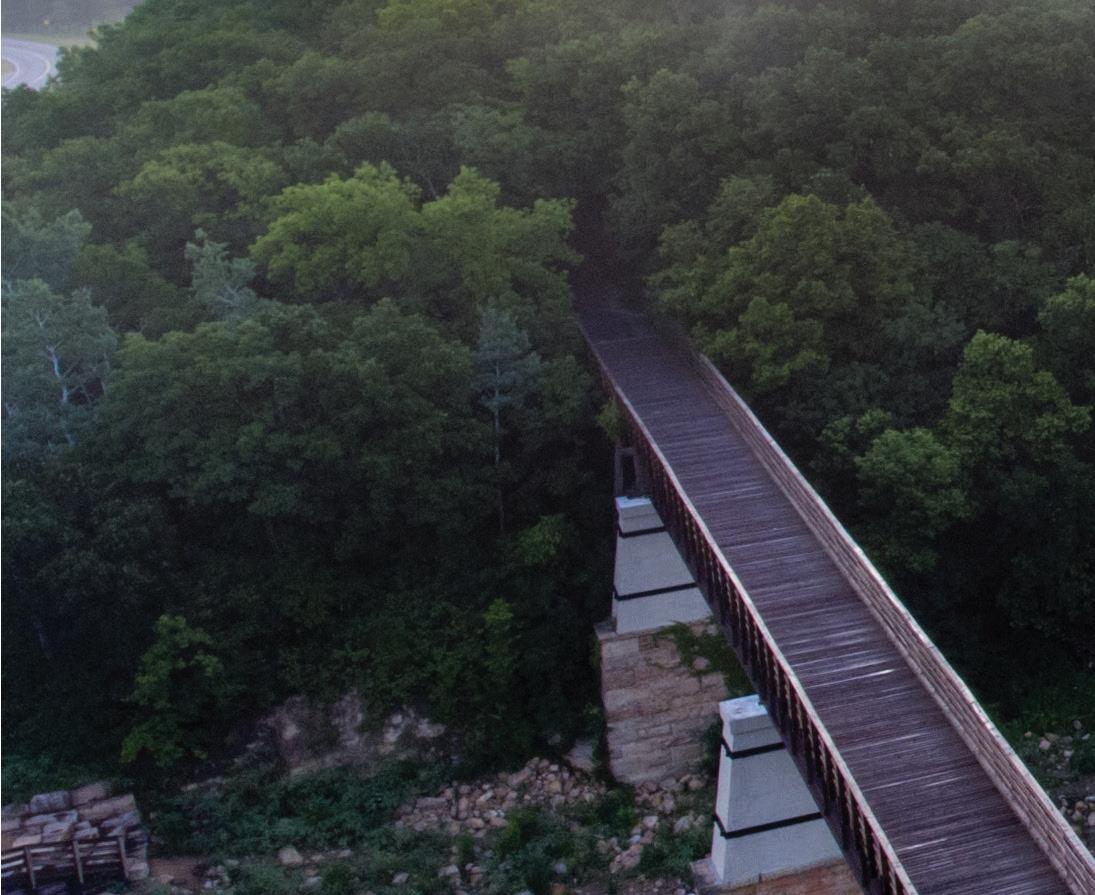





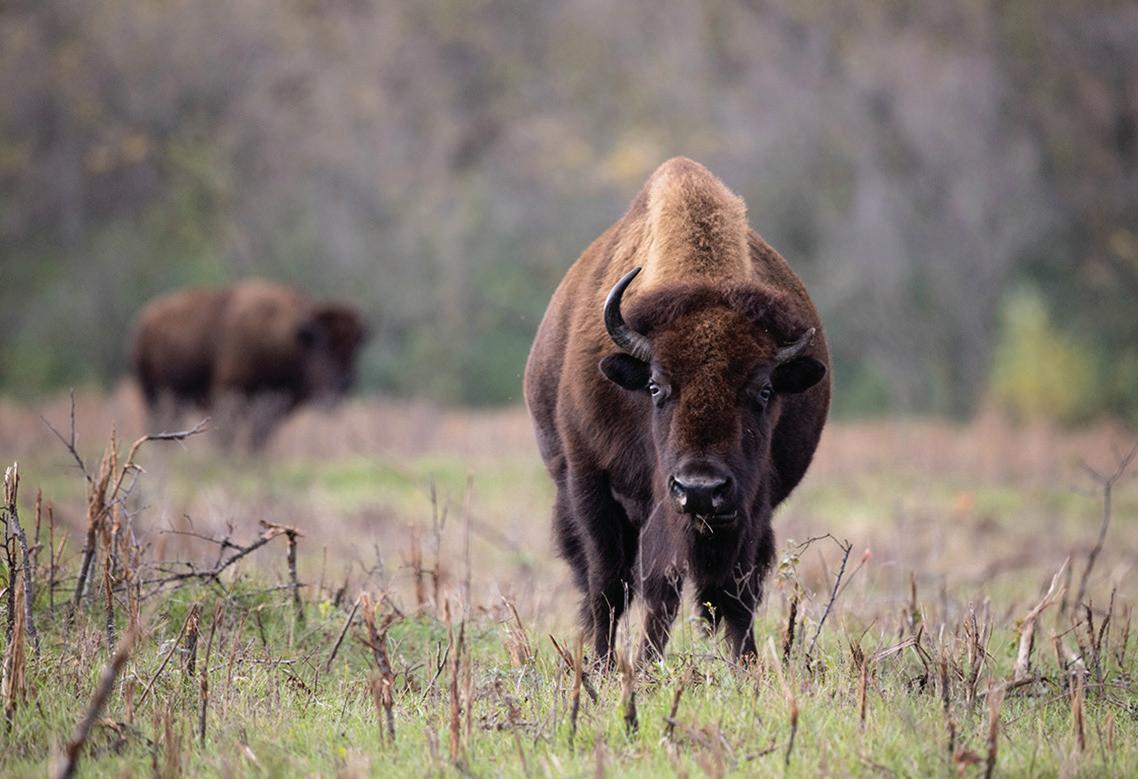


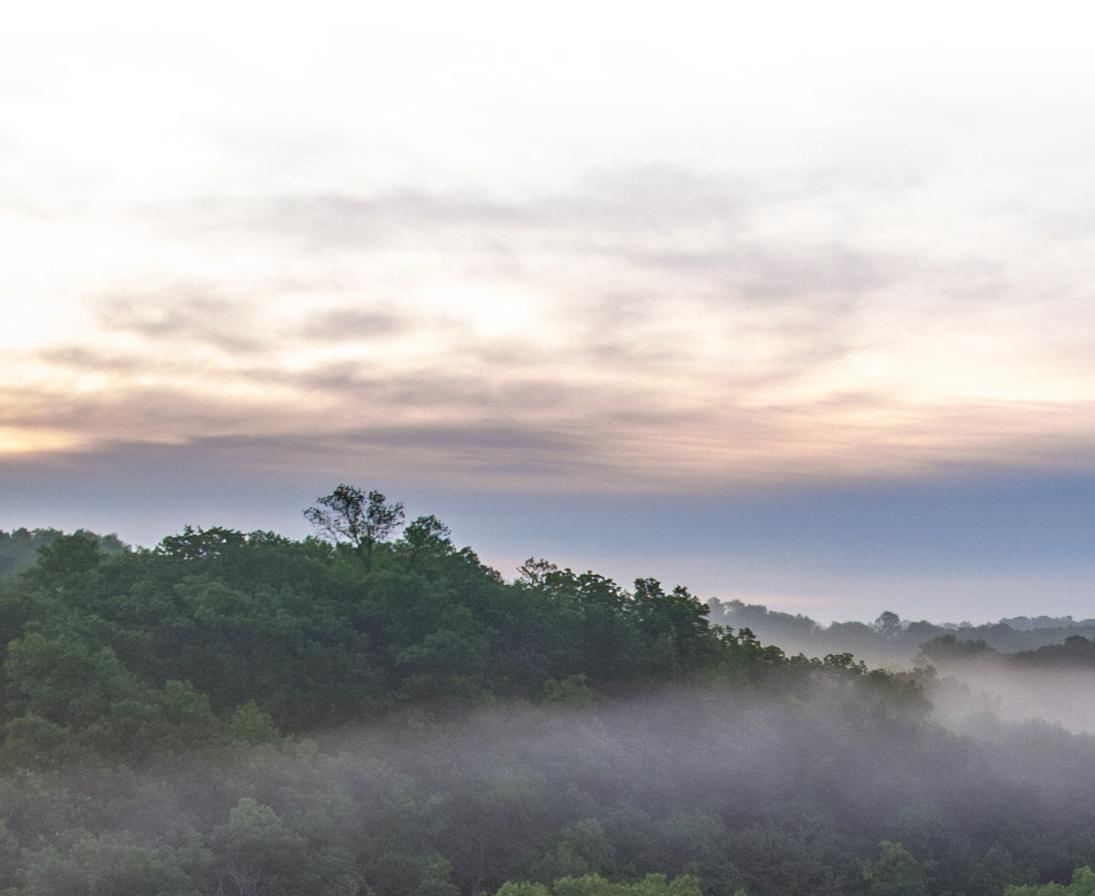



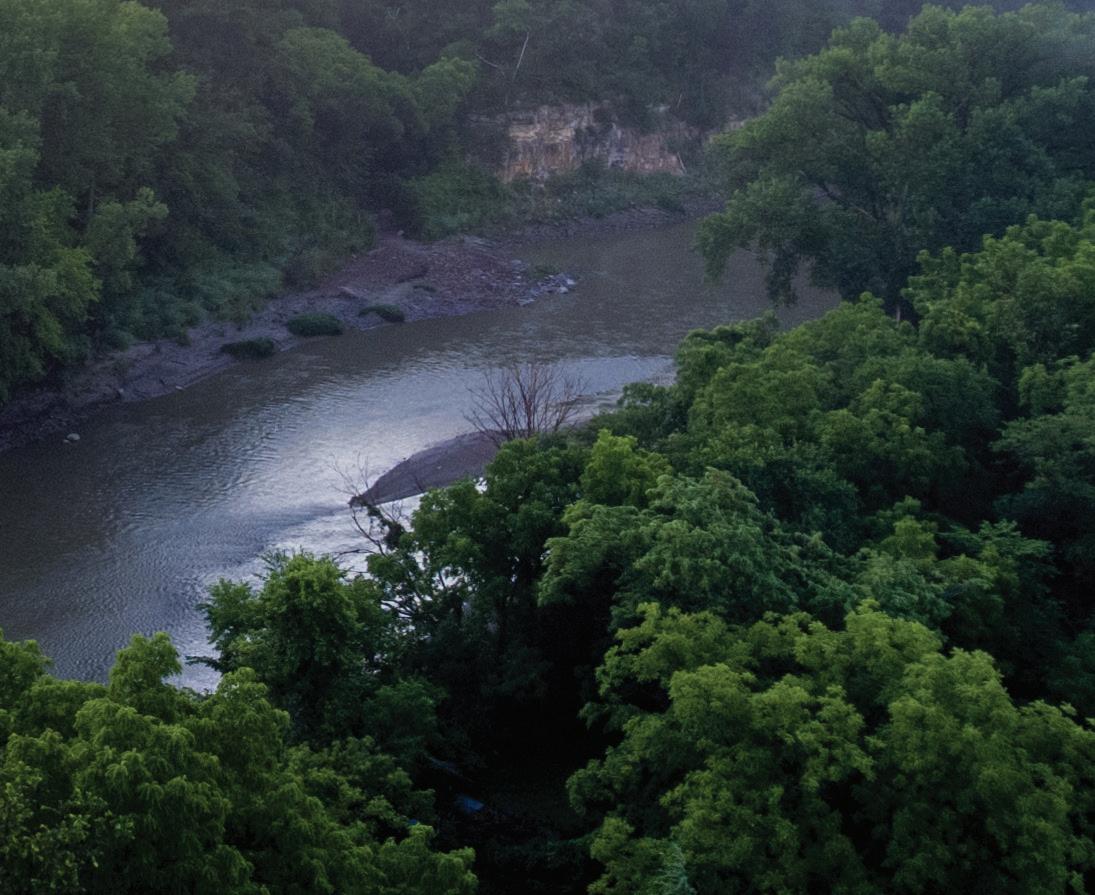

























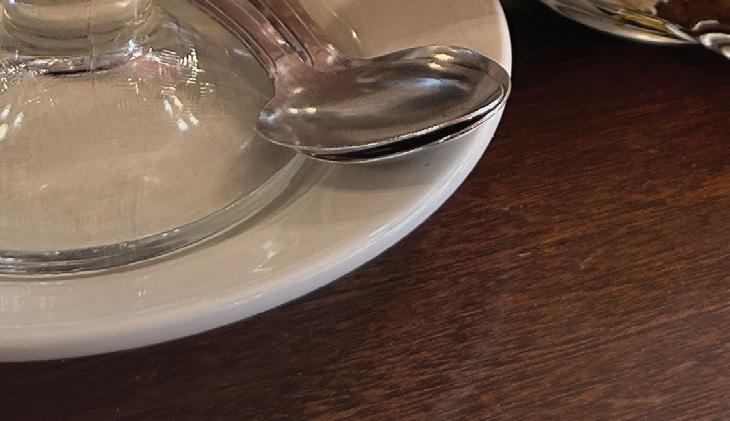






















Not what you were expecting? Enjoy a sweet treat at a nostalgic soda fountain or enjoy some favorite Iowa eats. Take a closer look and you’ll discover it’s all right here in Iowa. Plan your trip at traveliowa.com















to locals) features gently spiced ground beef piled onto a bun and garnished with American cheese, pickles, onions, ketchup and mustard. It comes wrapped in wax paper to enjoy in the restaurant or on the go.
Arnolds Park Amusement Park is home to the famous Nutty Bar Stand This Iowa treasure features a block of vanilla ice cream on a stick that’s dipped in gourmet chocolate and rolled in finely-chopped peanuts. Stop by Memorial Day through Labor Day for a taste of the iconic treat that’s been thrilling visitors since 1945.
the roasted chicken, broiled shrimp, Canadien walleye and lamb chops entrees. Be sure to order a side of spaghetti.
Discover old-fashioned sweet treats at Charlie’s Soda Fountain in Clear Lake. This renovated 1930s soda fountain brings a modern twist to the former pharmacy while still maintaining locals’ memories of enjoying ice cream treats at its counter. The original “mud” sundae –two layers of soft serve vanilla ice cream, hot fudge, pecans and malt powder – is still a favorite.
Sweet Mercantile’s kolaches. Located in the city’s historic Czech Village, this soda fountain stocks the sweet, fruit-filled pastry in a variety of flavors, all made by a passionate local. Try the cherry, apricot, blueberry or poppy seed kolaches alongside classic sodas and extravagant ice cream treats.
in Newton, located inside the historic Hotel Maytag, is known for its charcuterie boards featuring a variety of cheeses from nearby Maytag Dairy Farms alongside cured meats, olives, fruits, locally produced jellies and more. Shop an extensive selection of Maytag cheeses to take home, or sample handcrafted cocktails and

Explore even more of what Iowa has to o er and build the perfect itinerary by visiting traveliowa.com.
Learn more about these exciting destinations.
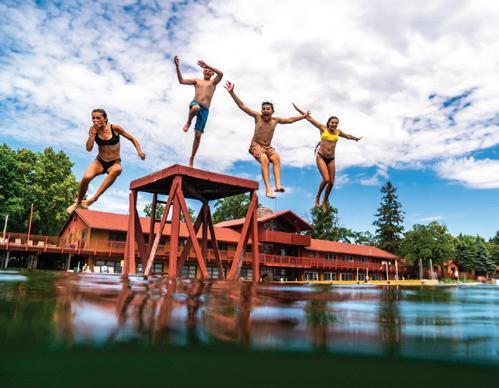
Remember the vacations you enjoyed as a kid? You’d get up early to go for a swim, fish, some tennis or golf? Those vacations are still here. Just outside Detroit Lakes, Fair Hills Resort has everything for a family vacation in a welcoming and inclusive atmosphere.
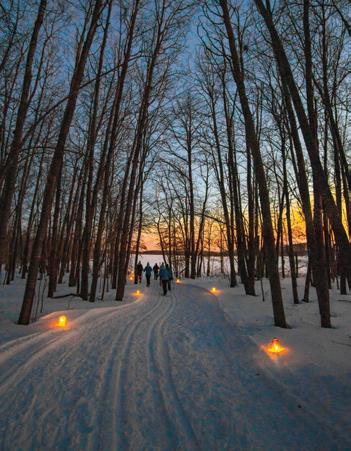

Fergus Falls is the home of Otto the Otter in the heart of Otter Tail County, brimming with 1,048 lakes. With a charming downtown by the Otter Tail River, Fergus Falls is the gateway to two state parks, with stunning biking and hiking trails. Visitors can explore the town’s art galleries, theaters, restaurants, two breweries, and shops.
With the motto #MuchInHutch, Hutchinson o ers community events; art, mural, and sculpture displays throughout; and exquisite dining and shopping. Walk along the beautiful Crow River, which flows though Hutchinson, or the Luce Line Trail, a pathway to serenity.
A stay at a Minnestay property elevates the experience. What sets Minnestay apart is its unique blend of luxury and local charm, o ering cozy retreats perfectly situated to immerse guests in Minnesota’s seasonal beauty. Minnestay ensures comfort, convenience, and a touch of Minnesota’s welcoming spirit.

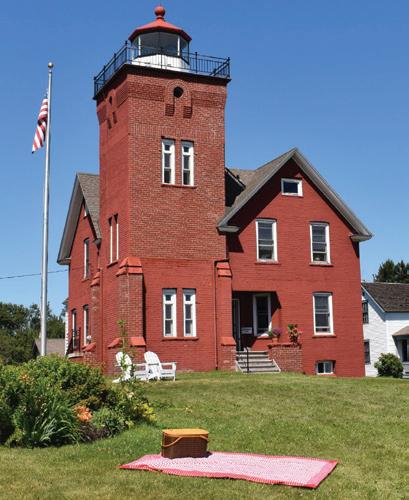
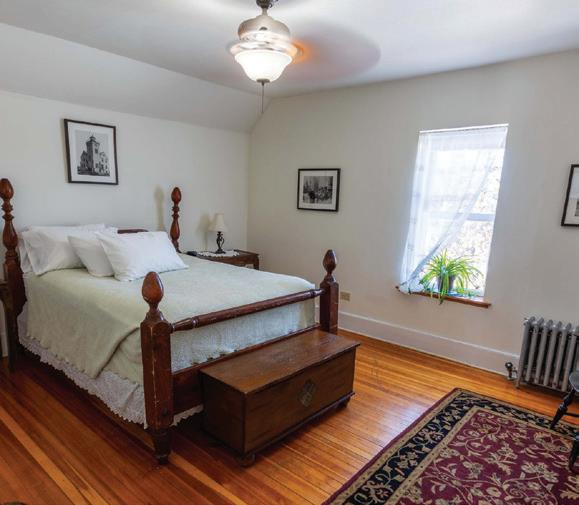
For a unique sojourn, consider sleeping in a lighthouse. Located between the Agate and Burlington bays on Lake Superior, the historic Two Harbors Lighthouse Bed & Breakfast is a place to relax and unwind on the North Shore. Guests can act as the lighthouse keeper for an evening and enjoy watching the activity along one of the great lakes. Operating since 1892, the lighthouse continues to assist lake freighters as they load up at the active ore docks across the bay.

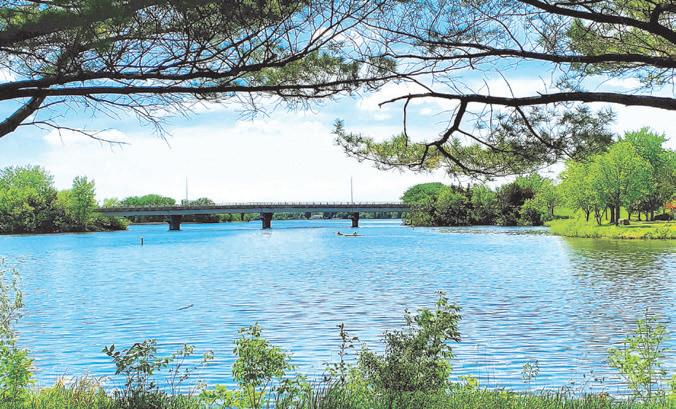






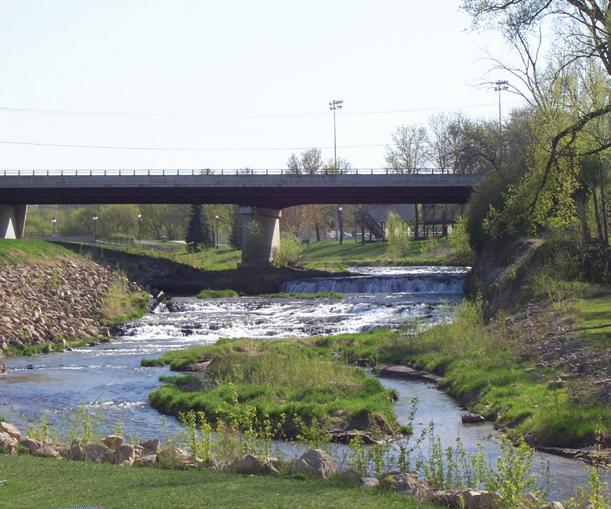
Just east of Highway 52 between St. Paul and Rochester, the charming riverside community of Cannon Falls boasts an award-winning winery, a craft brewery, artisan markets, fine dining, and recreation activities, including camping and hiking.
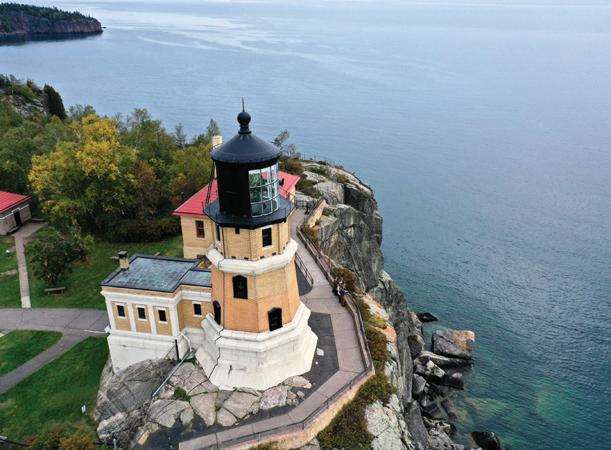

Located along Lake Superior’s North Shore, Lake County possesses three of Minnesota’s top five state parks: Gooseberry Falls, Tettegouche, and Split Rock Lighthouse. It also features more waterfalls than any other county, including the High Falls, the tallest waterfall in Minnesota. Wilderness lovers can experience the pristine Boundary Waters Canoe Area Wilderness near the Canadian border.

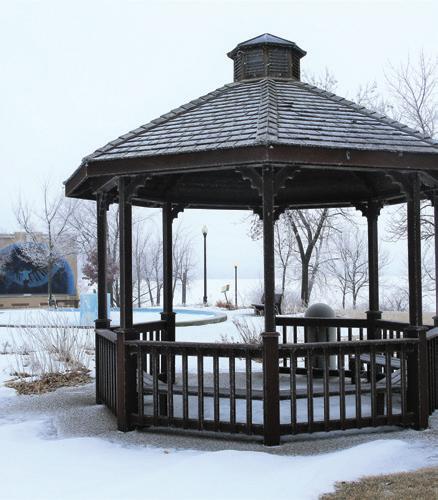
Sauk Centre is the boyhood home of Sinclair Lewis, the first American to receive a Noble Prize in Literature, as well as the Palmer House, voted the most haunted hotel in the United States by USA Today. Sauk Centre is an art-filled community, with professional murals, a bronze statue of Sinclair Lewis, and a “makerspace” for people to create art. It is in the center of Minnesota, surrounded by great fishing lakes, camping spots, and other opportunities for outdoor recreation.
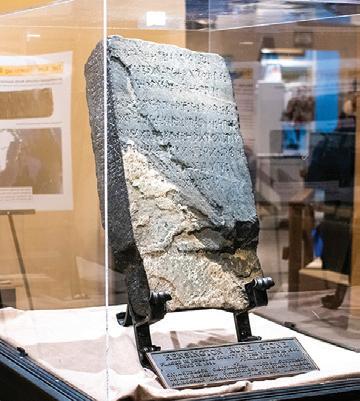

In Alexandria, check out curiosities like the Runestone Museum, where the controversial, worldfamous Kensington Runestone resides, or the award-winning Escape Room Alexandria. With more than 350 lakes in the county for fishing, boating, and swimming, spring and summer fun are a sure thing, but fall is also a great time to enjoy beautiful parks, like Lake Carlos State Park, and attend Bold North Cellar’s Grape Stomp Festival mid-September. In the winter, Andes Tower Hills is a destination for downhill skiing, snowboarding, tubing, and other snow activities.




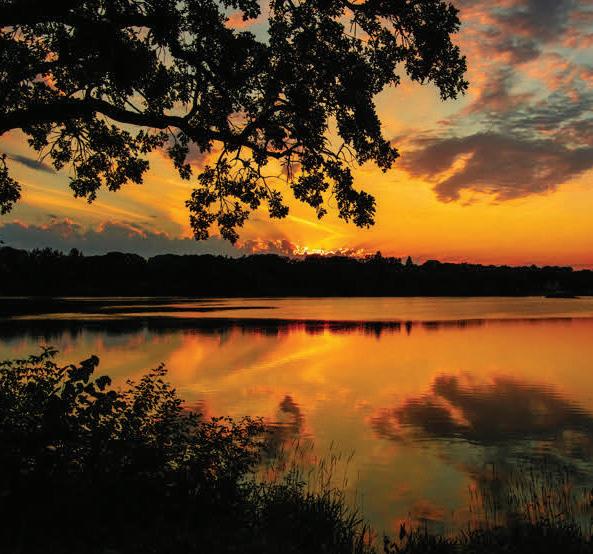


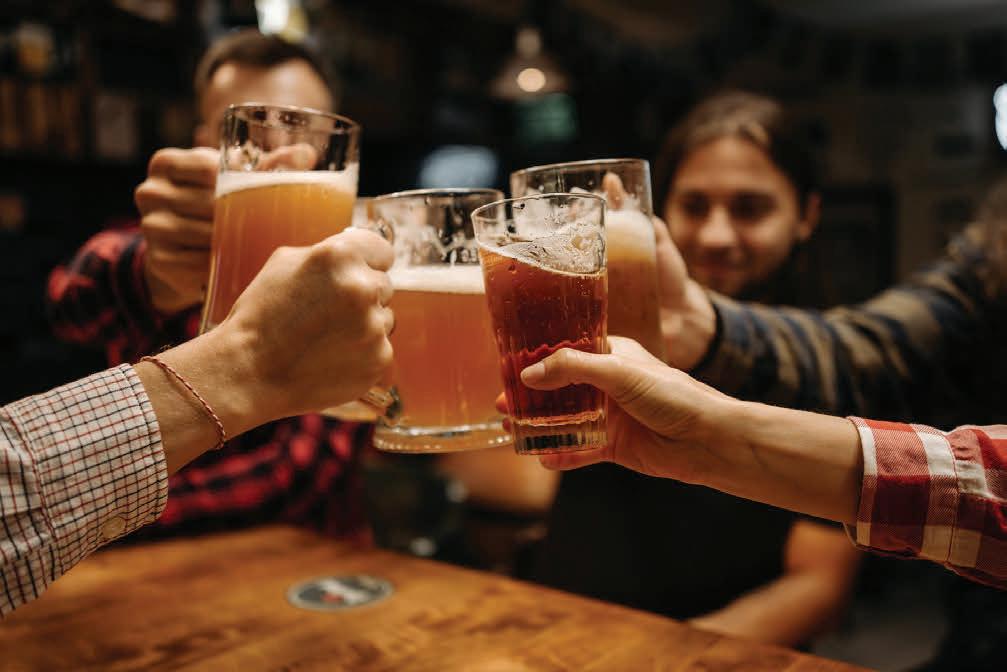




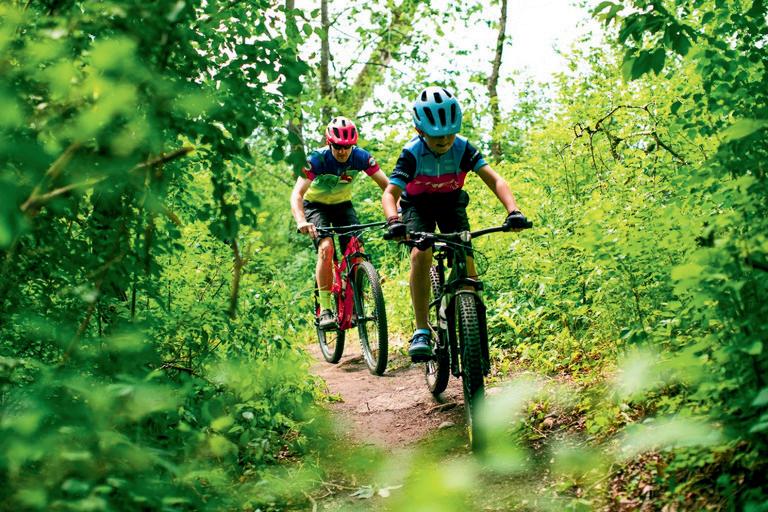




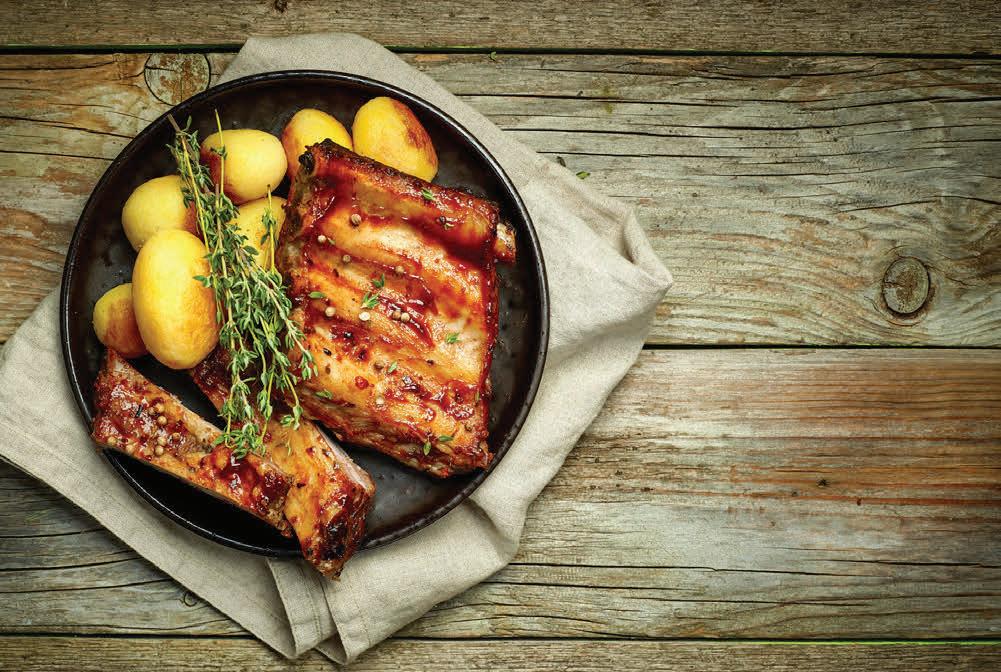



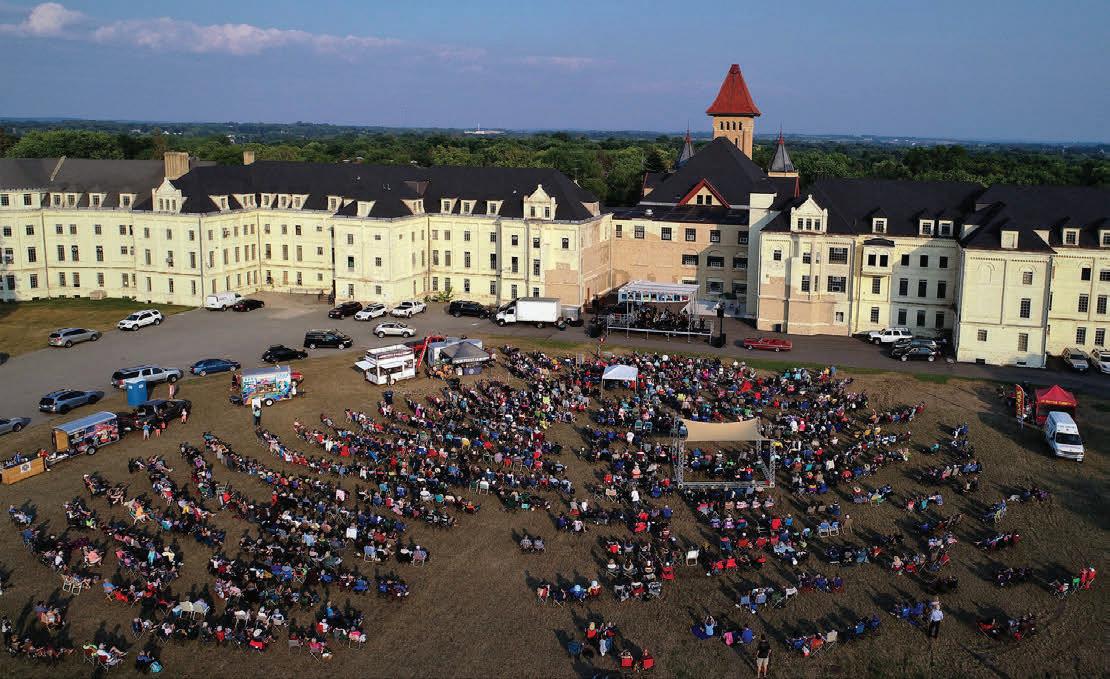







Minnesota’s Iron Range is home to five active iron ore mines and thousands of acres of forests, lakes, and wetlands. See how mining has shaped the landscape and how nature has reclaimed much of this region in the area’s unique geology, clear waters, and the Superior National Forest. Home to hundreds of miles of ATV trails, 20-plus miles of trail at Redhead Mountain Bike Park, the 165-mile Mesabi Trail, and Giants Ridge golf and ski resort, the Range is a mix of industry and recreation.


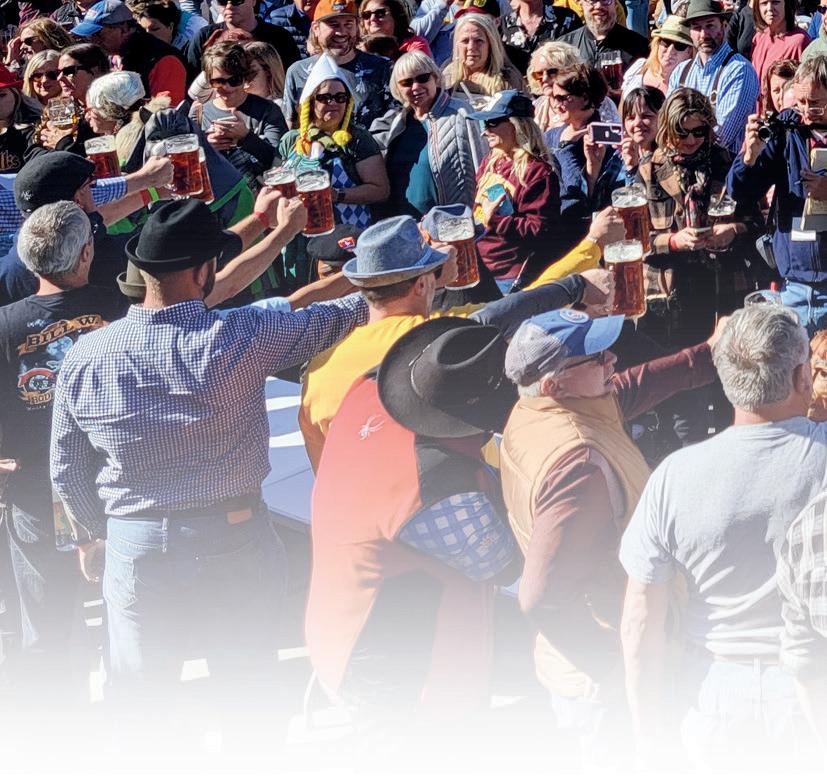






Bemidji is the first city on the Mississippi River and extremely proud of those bragging rights. Visitors can step across the headwaters in Bemijdi and enjoy fishing on over 400 lakes within a 25-mile radius of the city. They can also hike or bike a 17-mile lakeside trail and explore the famous Bemidji sculpture walk downtown. Bemidji is home to the longest-running summer repertory theater in the United States, too, called the Paul Bunyan Playhouse.
Grand Rapids is the outdoor mecca of north Minnesota, with outdoor splendor and where the mighty Mississippi flows through the historic downtown district. Discover cozy lodging, fun places to eat and drink, live performances, boutique shops, historic sites, beautiful public art, and more.







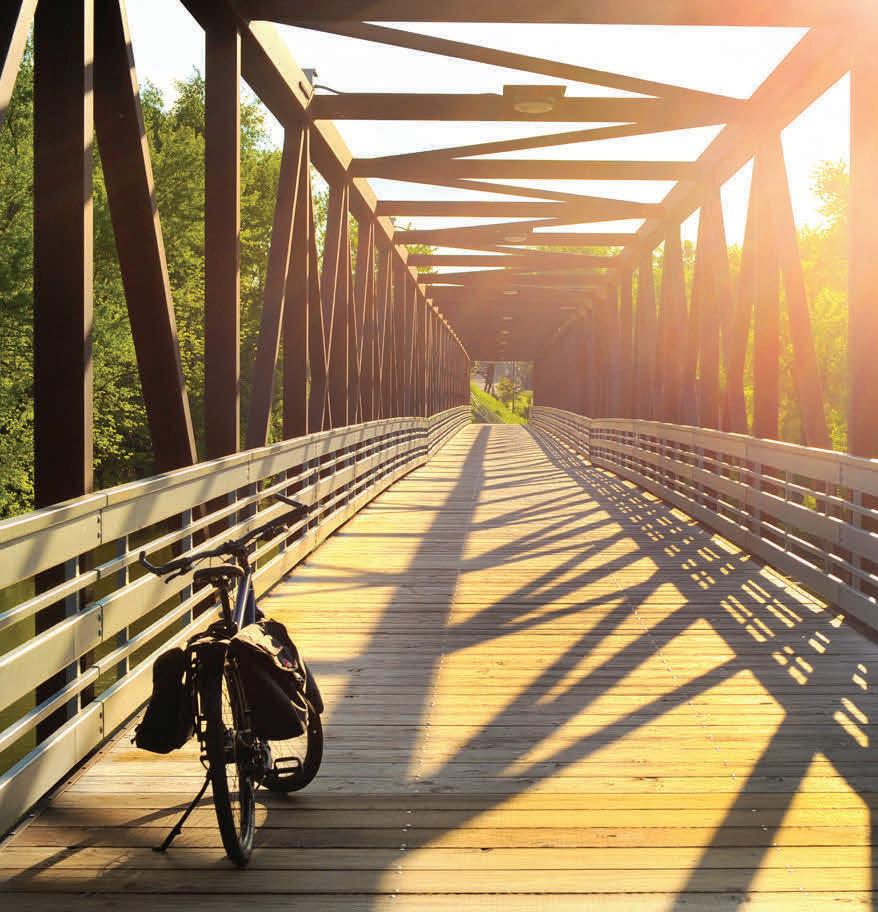


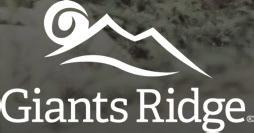



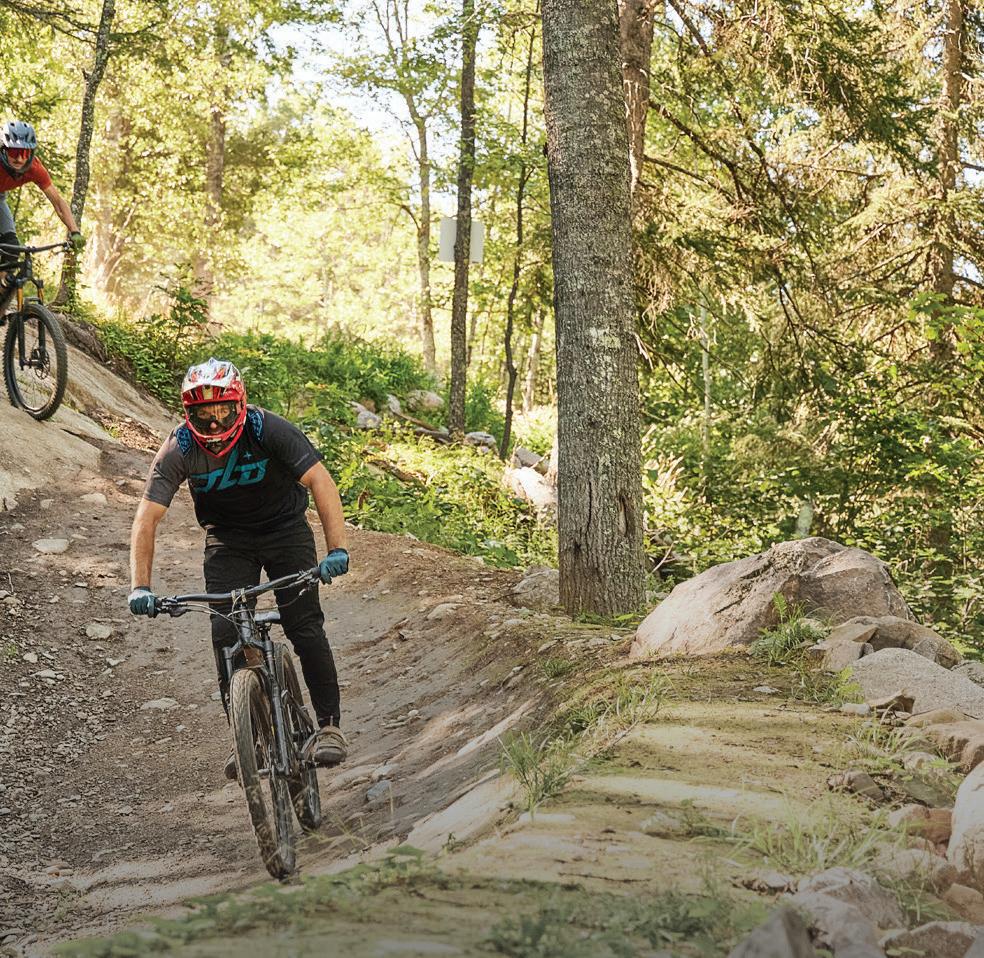





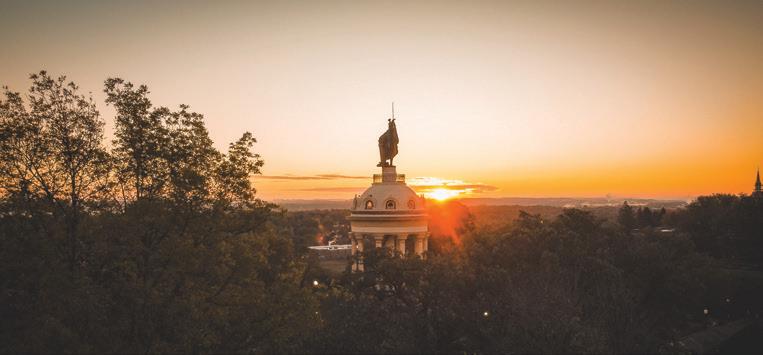

Nestled in the scenic Minnesota River Valley, New Ulm o ers a unique blend of history, culture, and outdoor adventure. New Ulm is a vibrant city known for its German roots, but many cultures are reflected in the vibrant shops and lively festivals.
Highlights for visitors include touring Schell’s Brewery and having a traditional or seasonal beer at its new Beirhalle, climbing to the top of Hermann the German to view the scenic river valley, and stopping by the Glockenspiel to hear the chimes and see the characters.


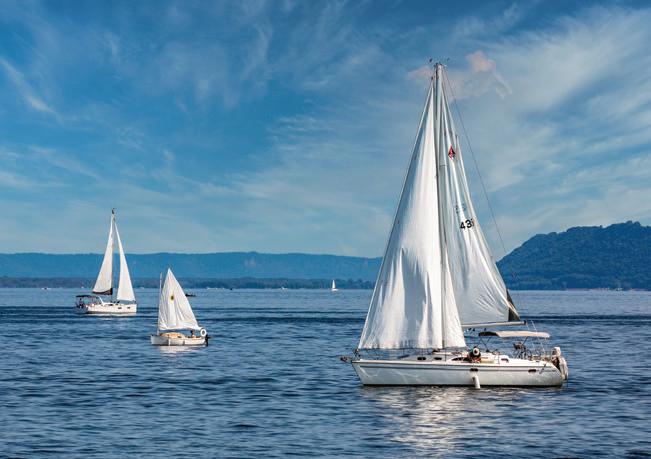
In the Land of 10,000 Lakes, there is only one Lake City . The gateway to Lake Pepin, the widest navigable spot of the Mississippi River, Lake City is also the birthplace of water skiing. With one of the Midwest’s largest small-craft marinas, sandy beaches, world-class angling, and plenty of ways to get out on the water, Lake City is a great lake escape.

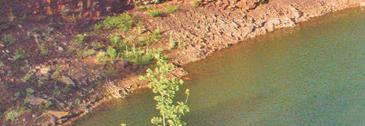








Sleepy Eye has the last main street that State Highway 14 still passes through, and Charles Schulz’s “Linus” statue can be seen from the highway as you drive by the Dyckman Free Library. This statue pays tribute to Sleepy Eye native Linus Maurer, whom the “Peanuts” character was loosely based on. Sleepy Eye Ballpark is one of the few remaining ballparks in which the Great Bambino—Babe Ruth—hit home runs out of in 1922.




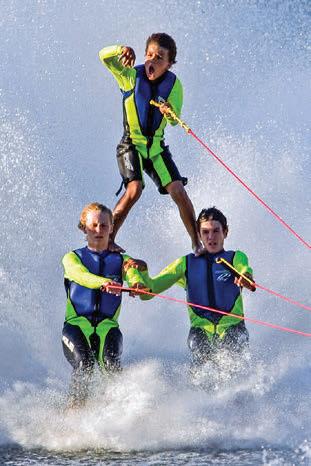
Willmår Låkes Åreå
Willmår Låkes Åreå







Five lakes. Endless opportunities.
Along with its ve lakes, Fairmont o ers a variety of year-round outdoor activities. Hit the golf course, enjoy lakeside dining or wander through our historic downtown. Fairmont is the perfect place for a day trip or weekend outing.




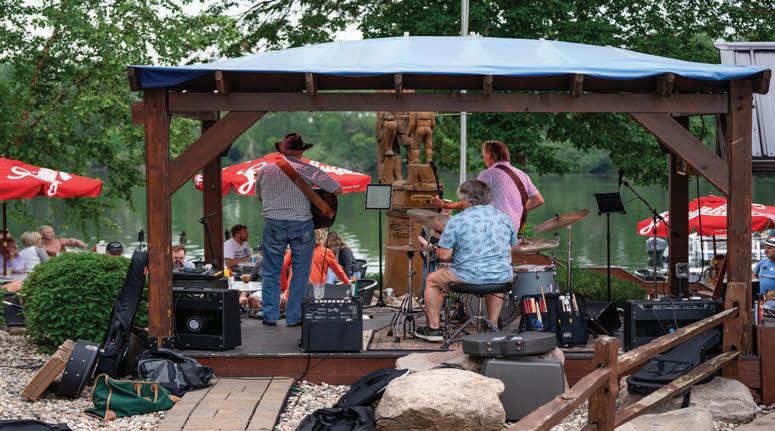




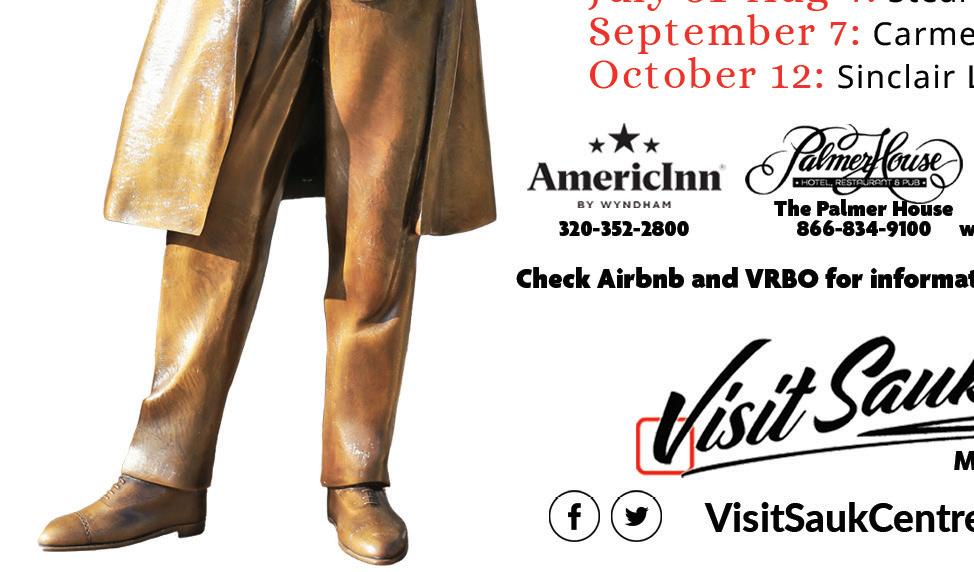
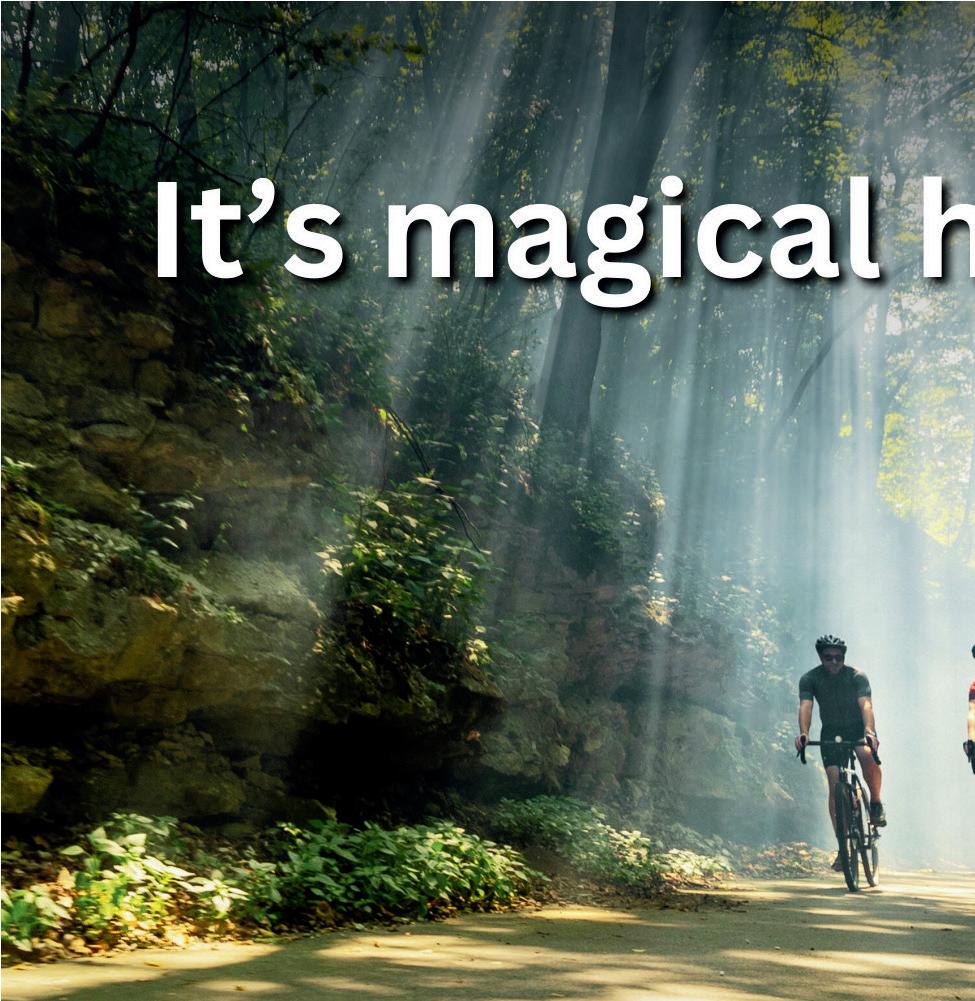
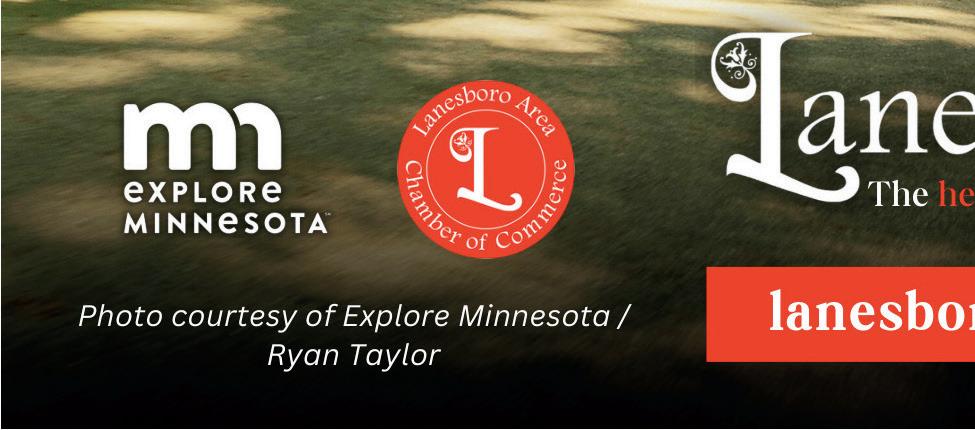




Nestled in the bluffs of the Root River Valley, Lanesboro is the hidden gem of southeastern Minnesota. Visitors come year-round to experience the peaceful, inspiring atmosphere of this charming little town. Don’t miss the annual Rhubarb Festival each June and Cabin Fever Fest Weekend in March. With its history, live theater, art galleries, access to outdoor recreation, beautiful scenery, and much more, Lanesboro is a community that manages to both relax and energize people at the same time.

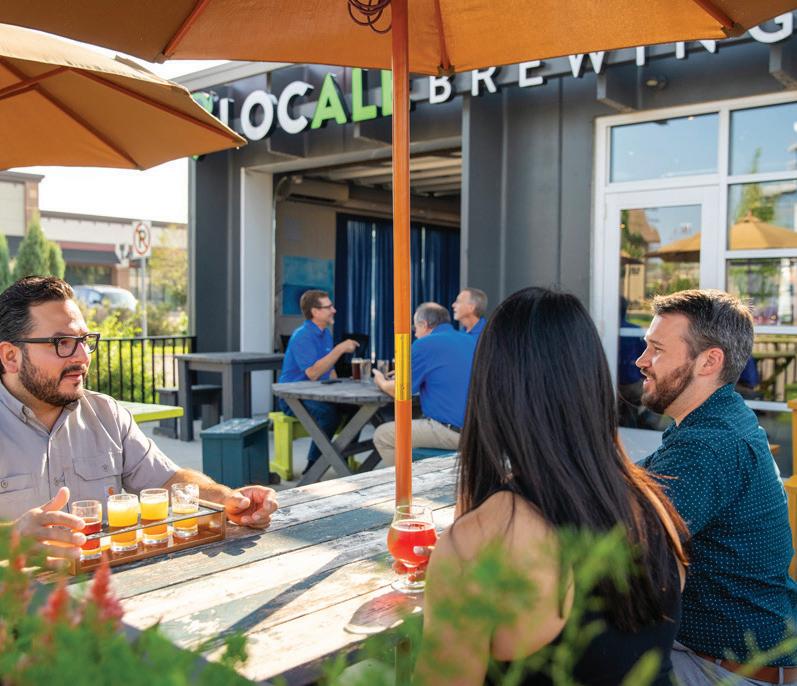
Tucked into the picturesque Minnesota River Valley in southern Minnesota, Mankato ’s rich culture and history are on full display in the city center with historic buildings, museums, and galleries. The CityArt Walking Sculpture Tour is a stroll of exhibits and displays. Pause to take in the larger-than-life mural on the silos of Ardent Mills on Riverfront Drive, then check out the unique shops, boutiques, and restaurants in Old Town and Lower North Mankato. Unwind at one of the area’s popular breweries or wineries, including Mankato Brewery, LocAle Brewing Co., and Chankaska Creek Ranch, Winery & Distillery.








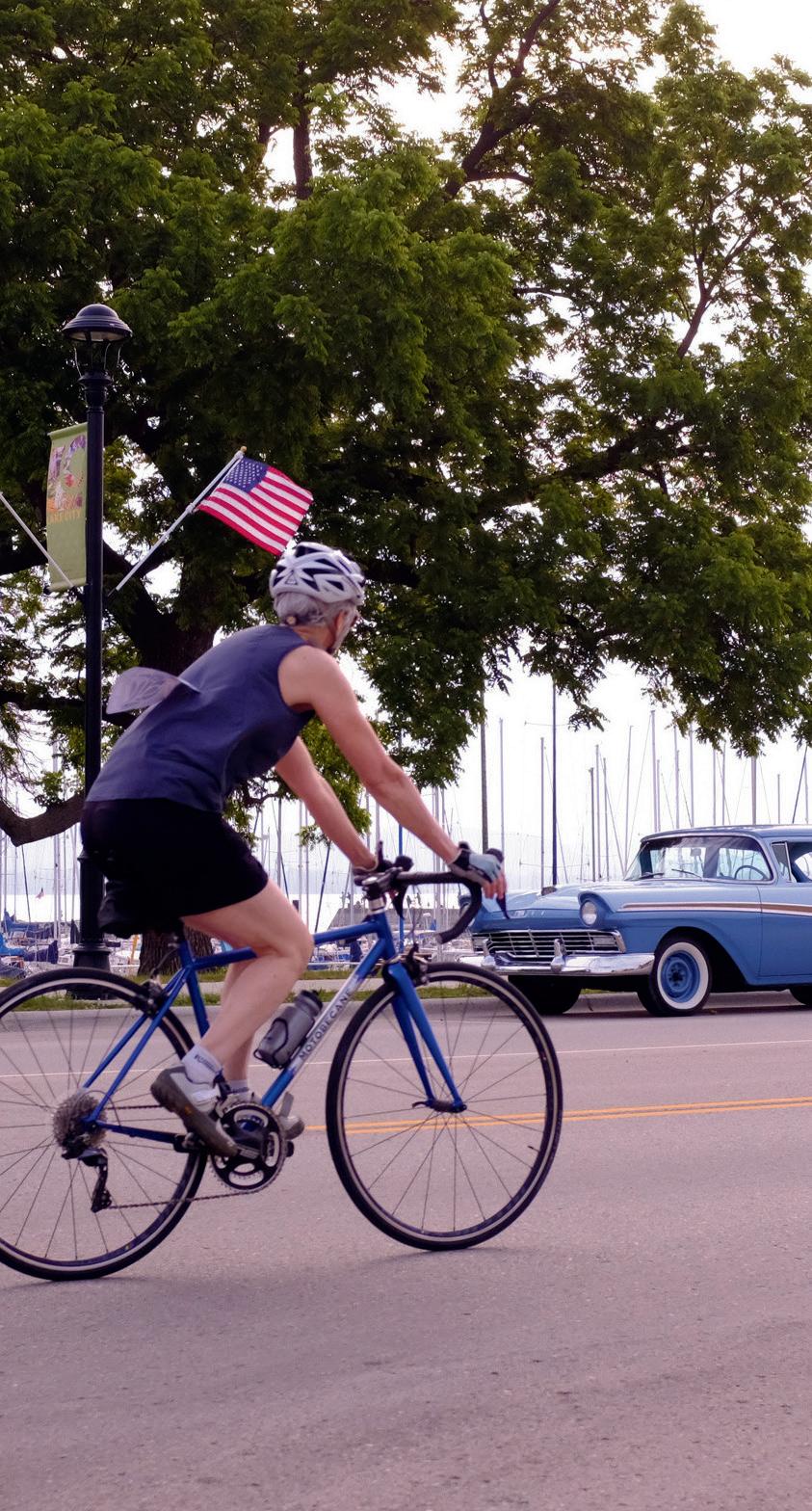







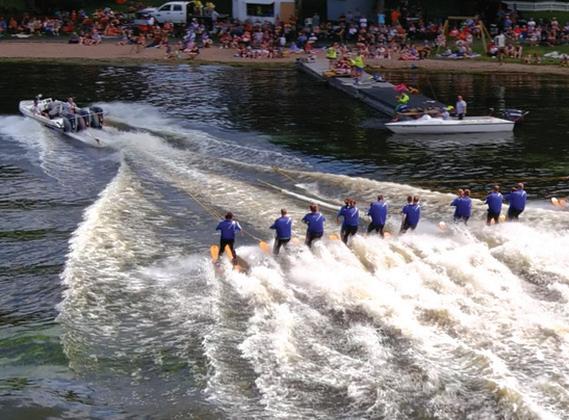



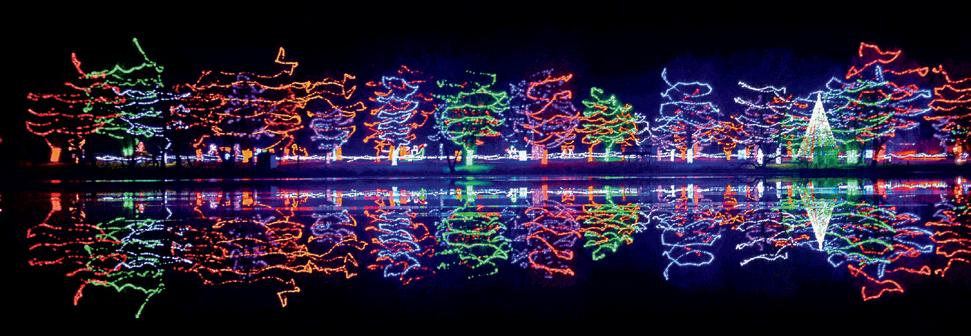

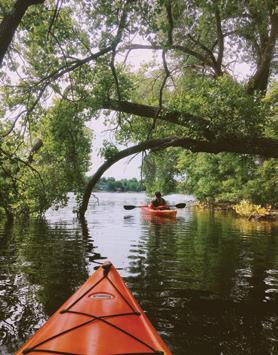
The Willmar Lakes Area is known for being “Where the Lakes Begin” in West Central Minnesota. Just 90 minutes west of the Twin Cities, this beautiful lake country is a hub of activity. Sibley State Park, one of Minnesota’s most popular State Parks, is open year-round for biking, hiking, snowmobiling, cross-country skiing, and snowshoeing. During the summer months, enjoy the award-winning Little Crow Water Ski Team show in New London.


Dickerson’s Lake Florida Resort in Spicer is a fourth-generation family-owned Minnesota resort celebrating its 100th anniversary this year. The resort is known for its location on a clean glacial lake, as well as its great beach, beautiful sunsets, and hospitality. Dickerson’s has 13 lakefront cabins, a beautiful sand beach, and all the amenities to enjoy life on the water, such as kayaks, paddleboards, a water trampoline, hydro-bikes, canoes, and more.
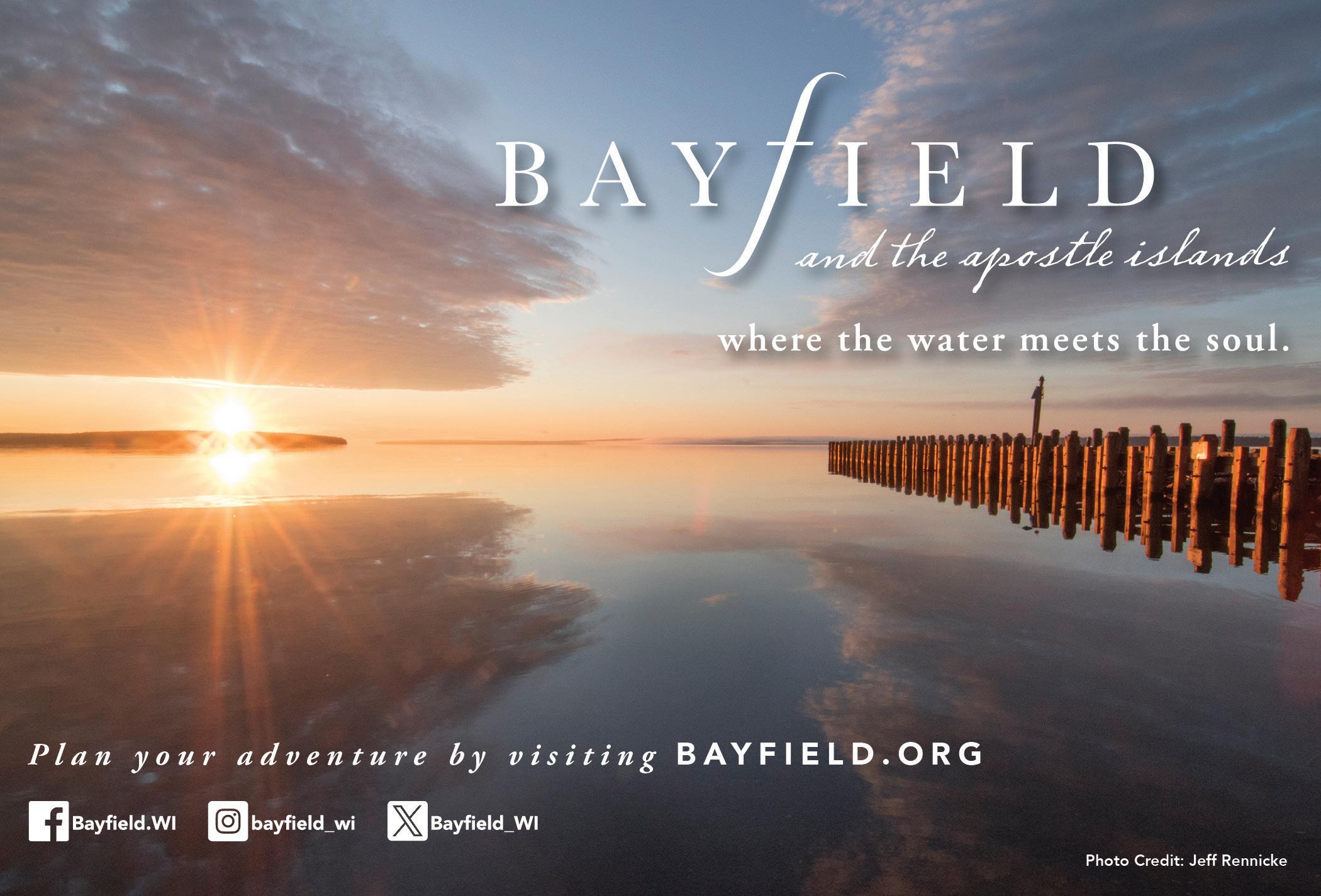

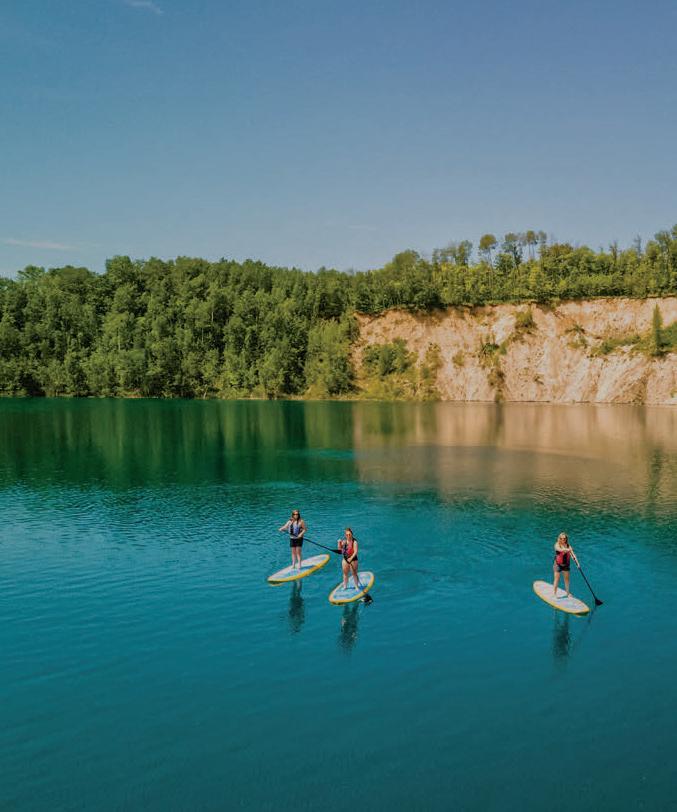




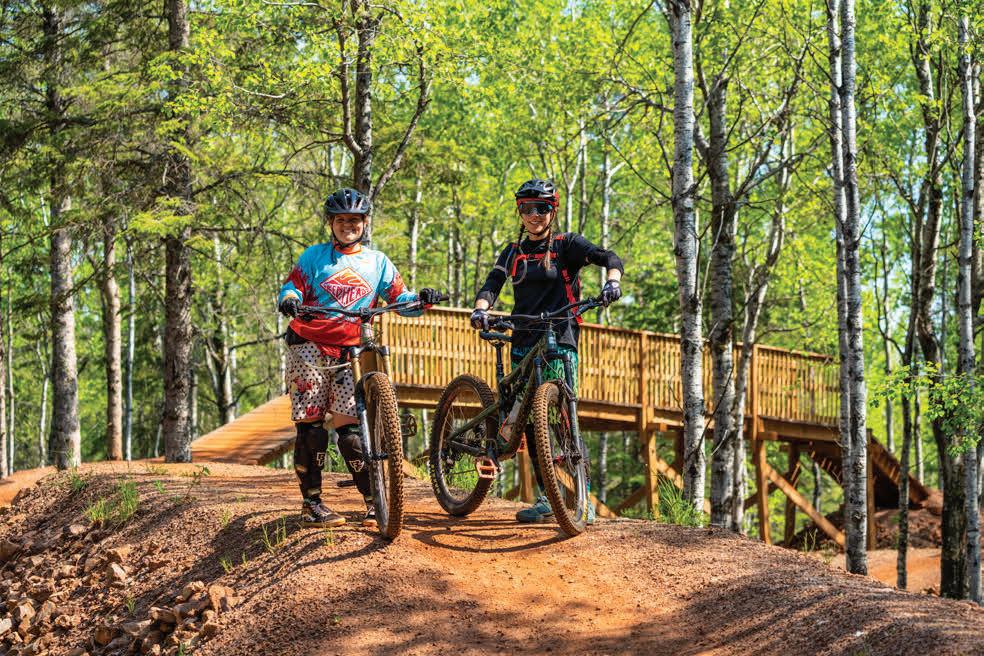
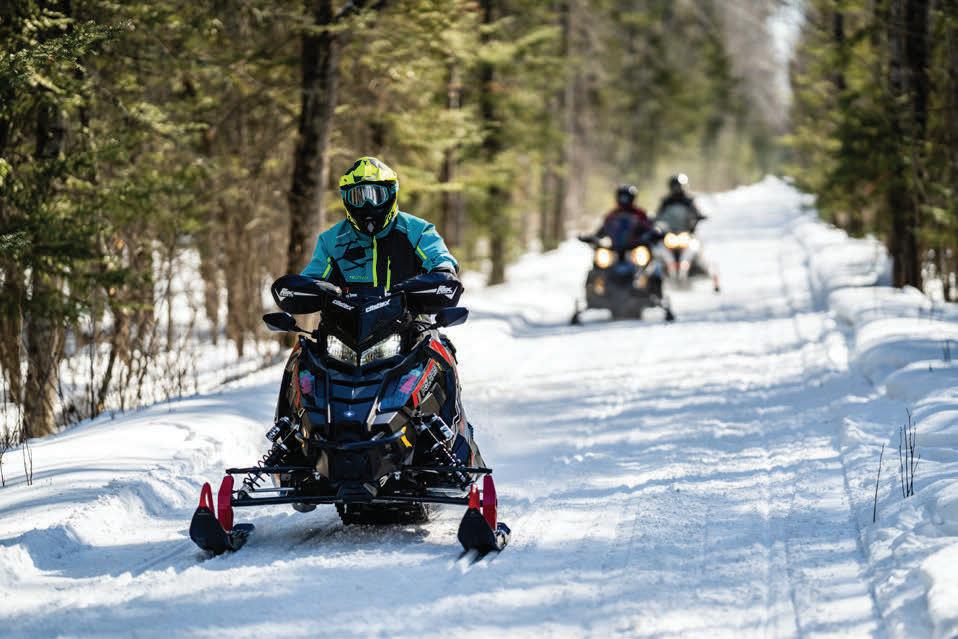






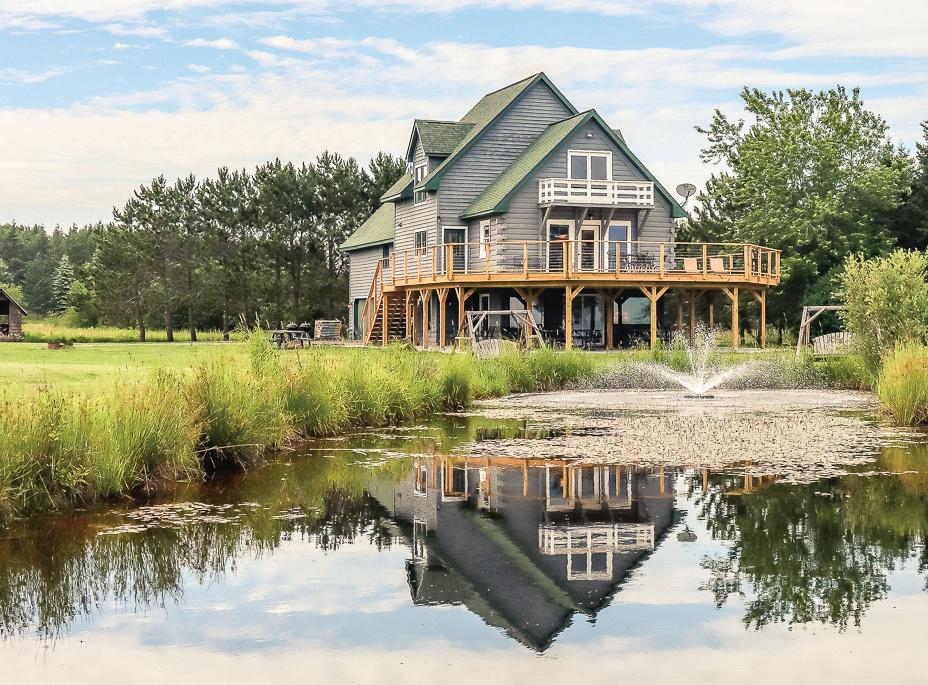





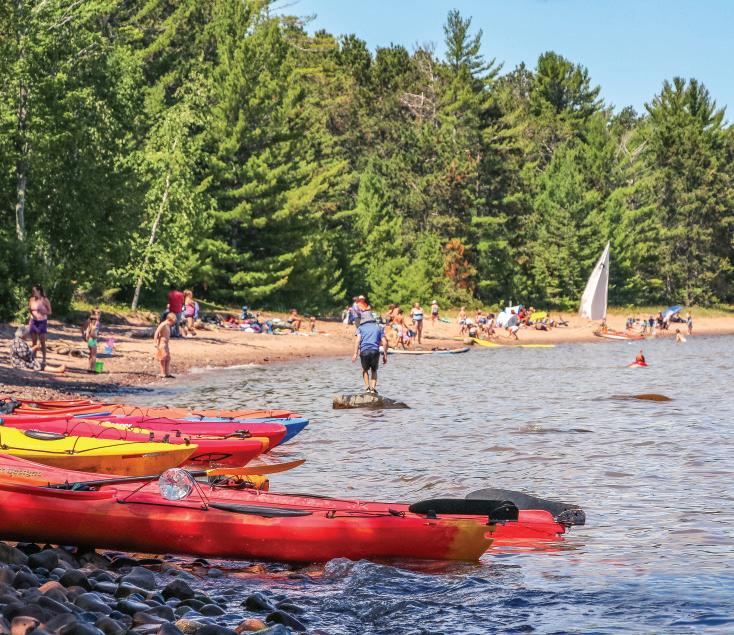

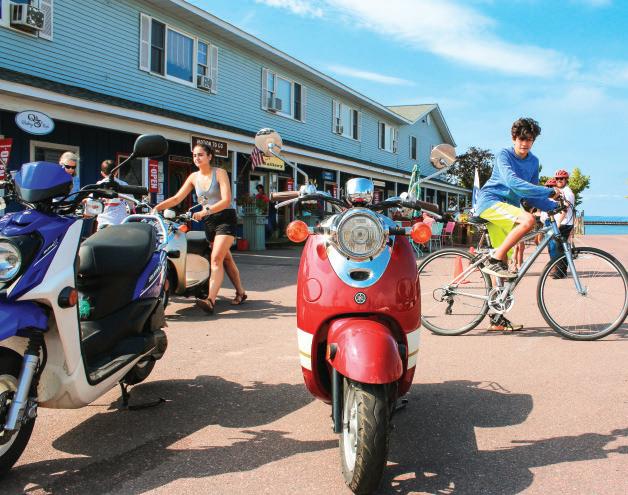

Home to five beautiful lakes, four of which are connected by channels, Fairmont is the ideal destination for water activities such as fishing, boating, ice fi shing, hockey, kayaking, and more. Martin County, where Fairmont is located, is known as Bacon Capital USA. It is the top pork producing county in Minnesota, and the “Going Hog Wild” art installation, featuring more than 100 concrete hog statues across the area, spotlights local businesses, artists, and residents involved in the pork industry.



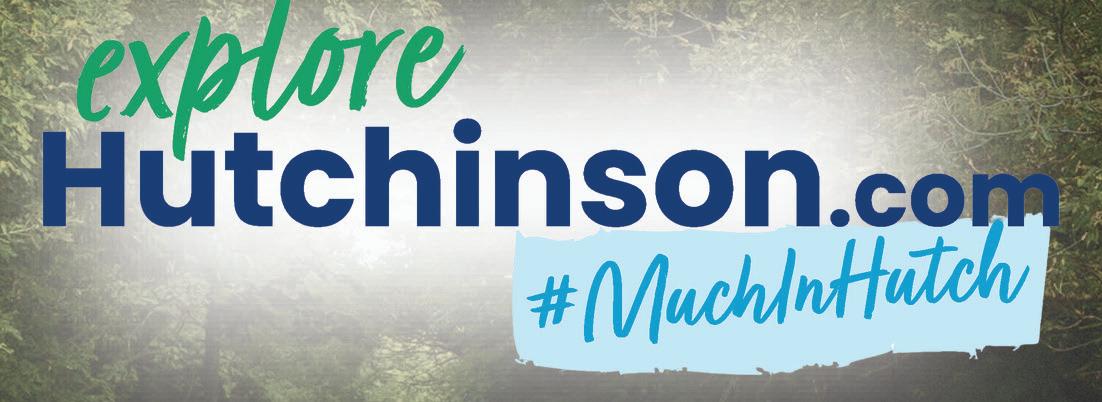
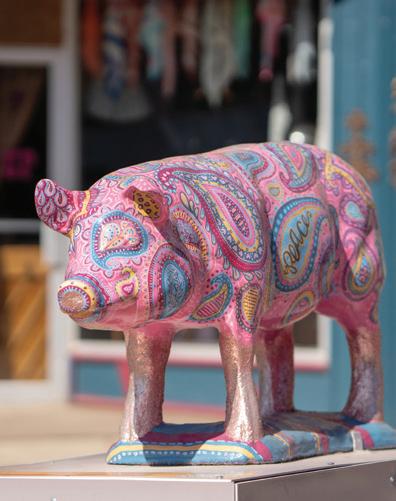
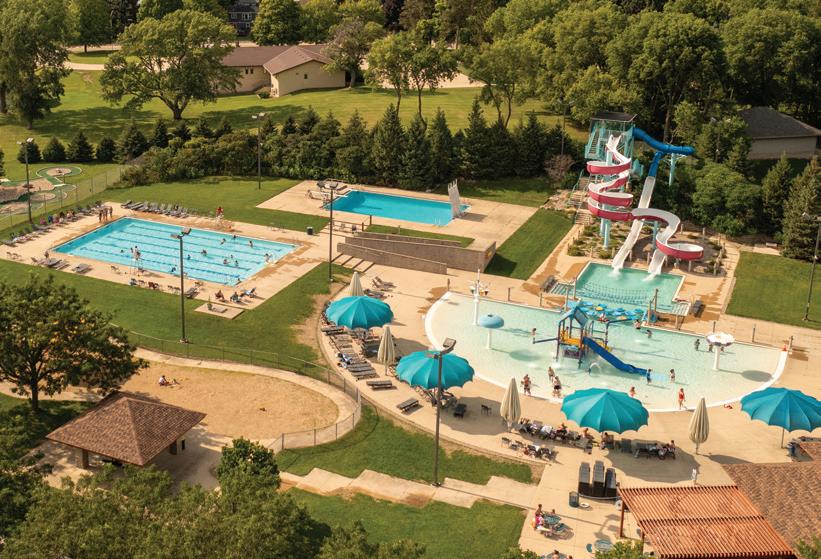




















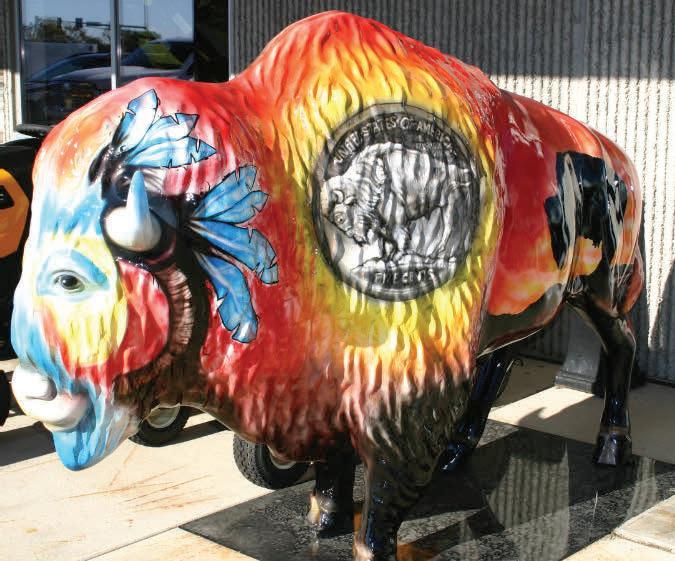

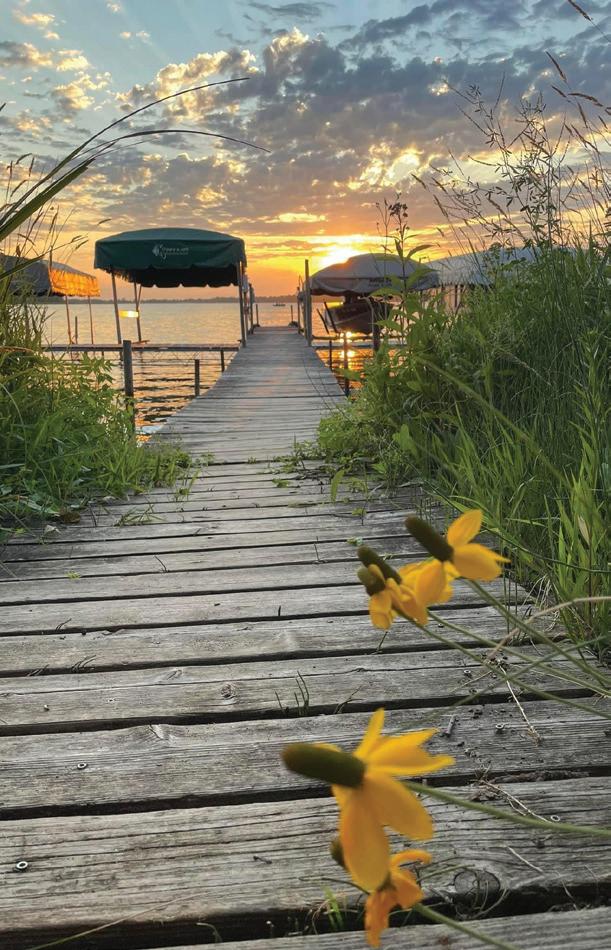

LCentrally located in Otter Tail County and home to more 1,000 lakes—more than any other county in the United States— Perham offers large-city amenities with a small-town charm. This year is the 40th year of Turtle Fest, an annual summer celebration, and Perham also boasts the In Their Own Words Veterans Museum. Visitors can experience the outdoors by golfing, fishing, biking, hiking, walking, swimming, and more.


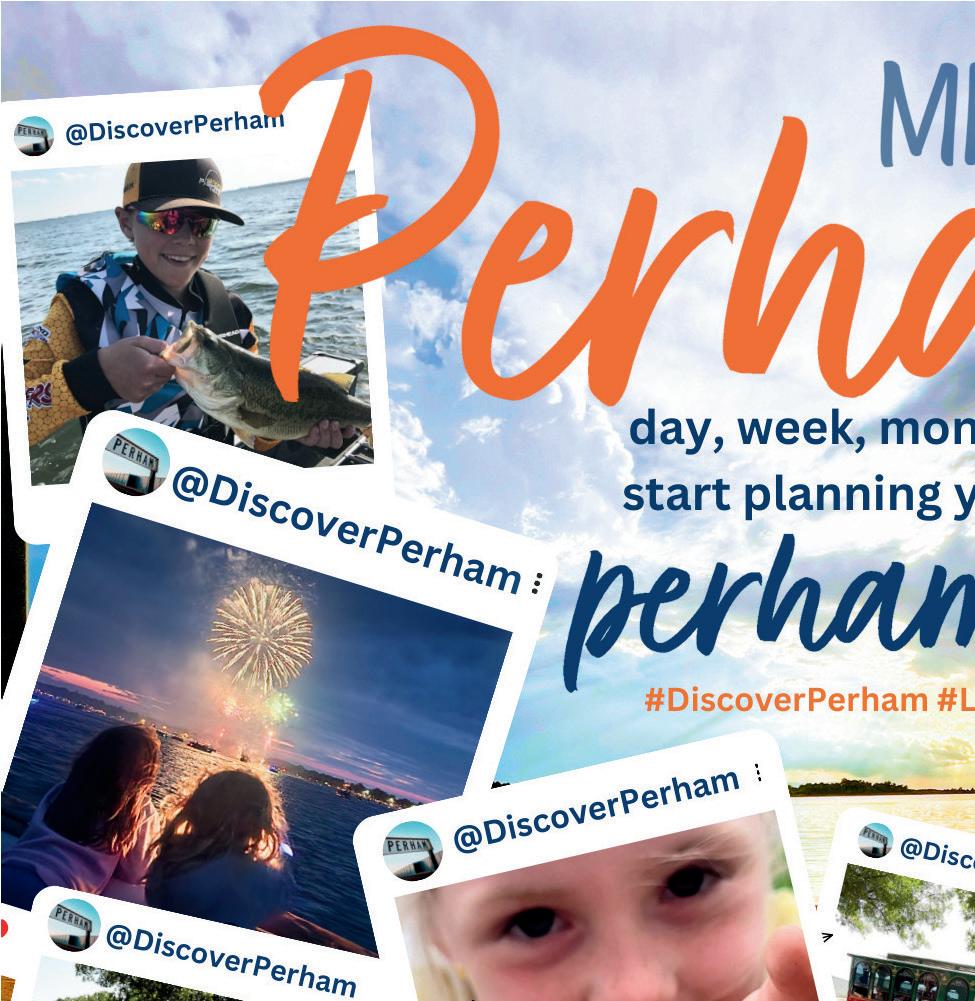




































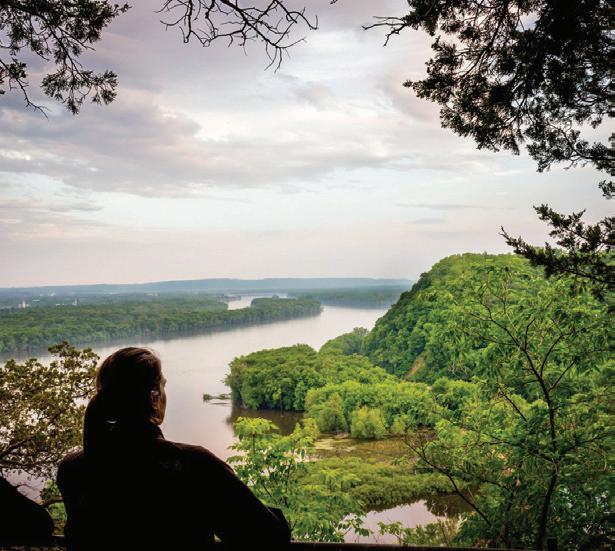
Iowa has something for everyone—including beautiful scenic spots in the Driftless Area, lakes to enjoy in the northwestern region, or famous sites and architecture in the state’s center.







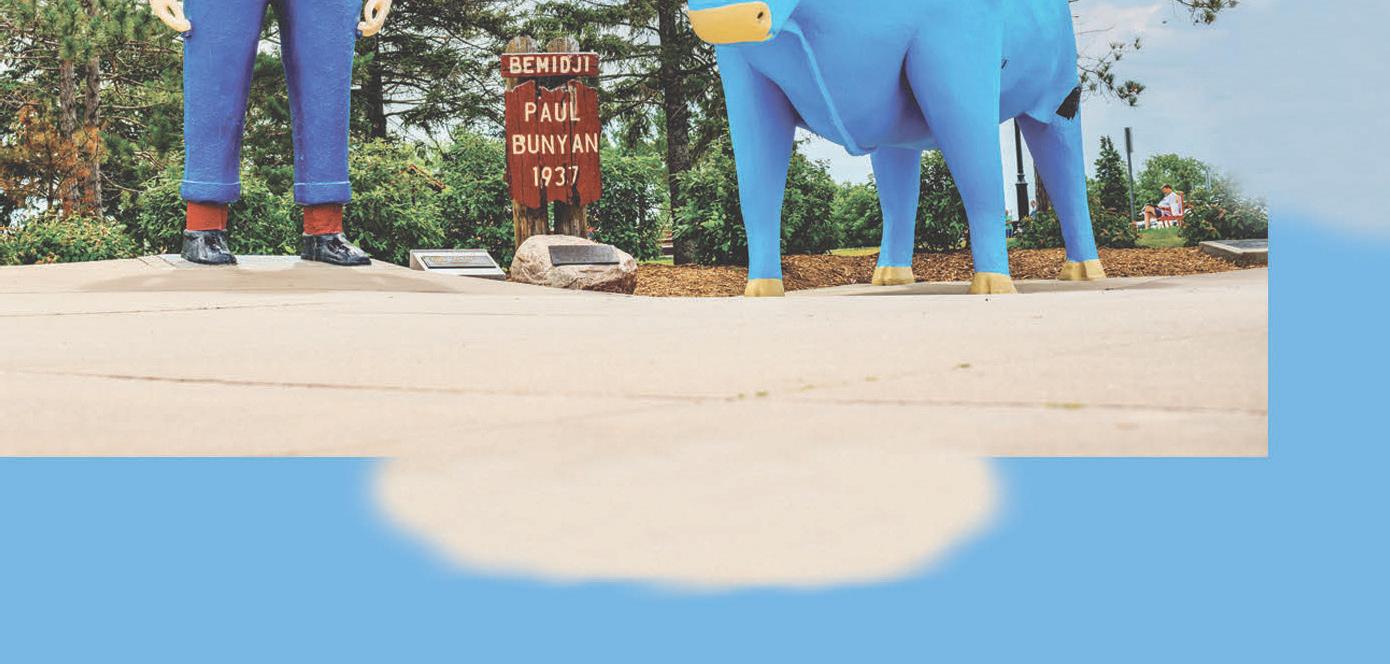

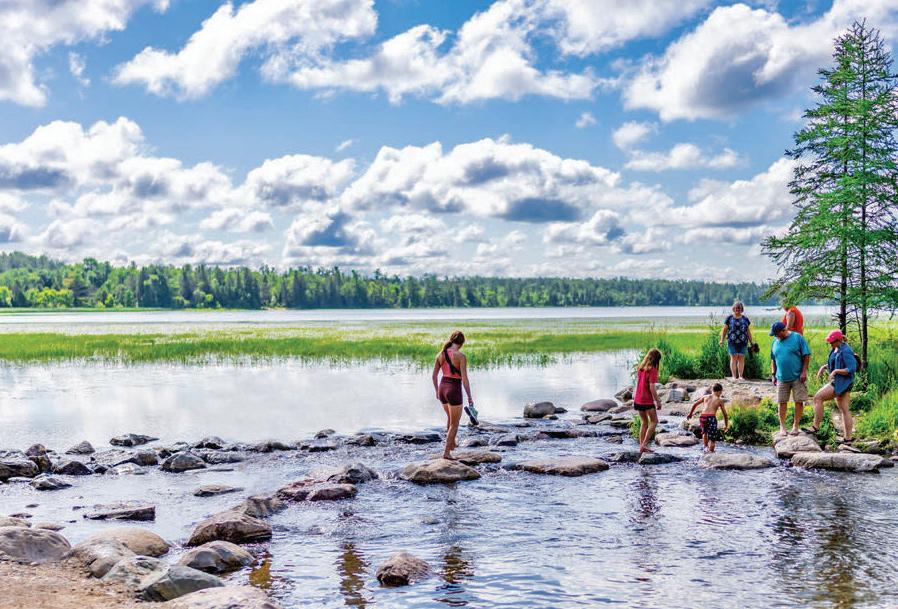
See incredible views of the river valley at Hawks View Cottages in Fountain City, Wisconsin. With choices between blu -side cottages, ridge-top lodges, or downtown suites, Hawks View properties o er weekend escapes to a beautiful area. Be sure to stop by Hawks View’s Seven Hawks Vineyards and Tasting Room, too, for food or a drink.
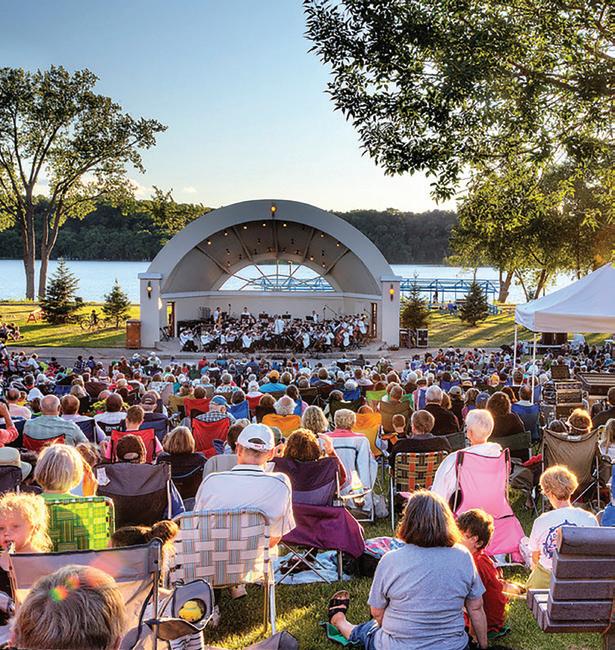


Just across the border, Hudson, Wisconsin , welcomes nature enthusiasts to its many parks, including the beautiful Willow River State Park. After a hike or swim, swing back into town to enjoy a meal on the patio at one of the excellent restaurants. Don’t forget the free summer concert series in the park that runs all summer long and enjoy fall foliage along the river with great views of the river valley. Don’t miss the annual Hudson Hot Air A air balloon festival every February as well.



Grab your suitcase; it’s always the perfect time to escape to Hawk’s View Cottages!
Cozy up and relax in utmost comfort at one of our nine distinct cottages. Our cottages and lodges are crafted high up onto steep wooded bluffs, with hawk’s eye views of the Mississippi River and Old Foutain City, Wisconsin









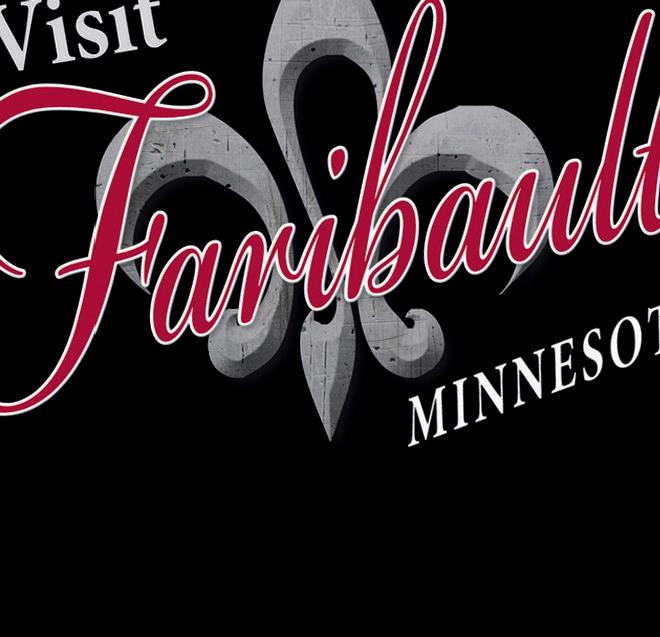
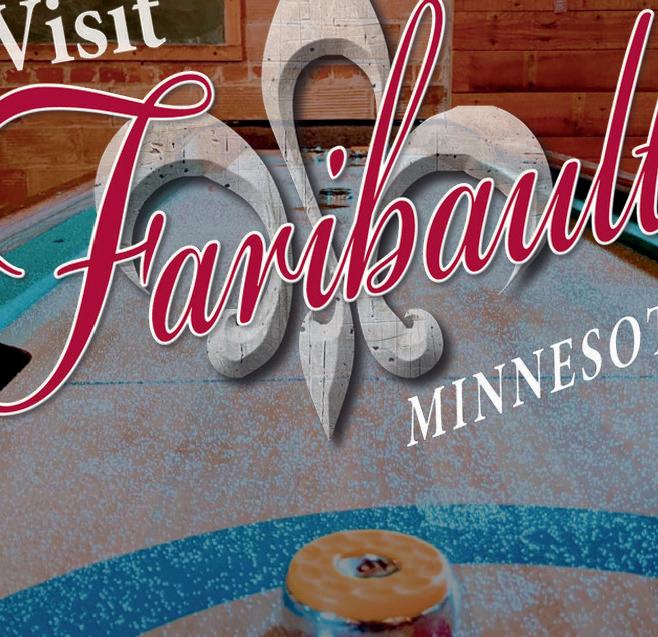










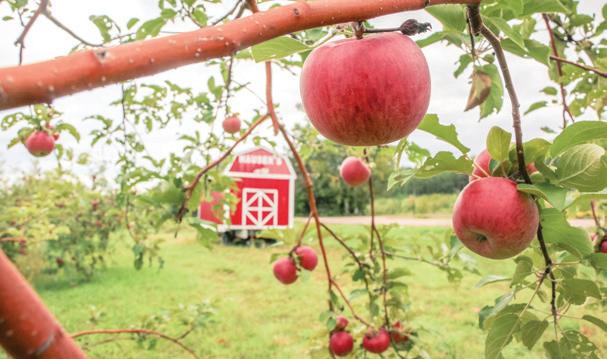



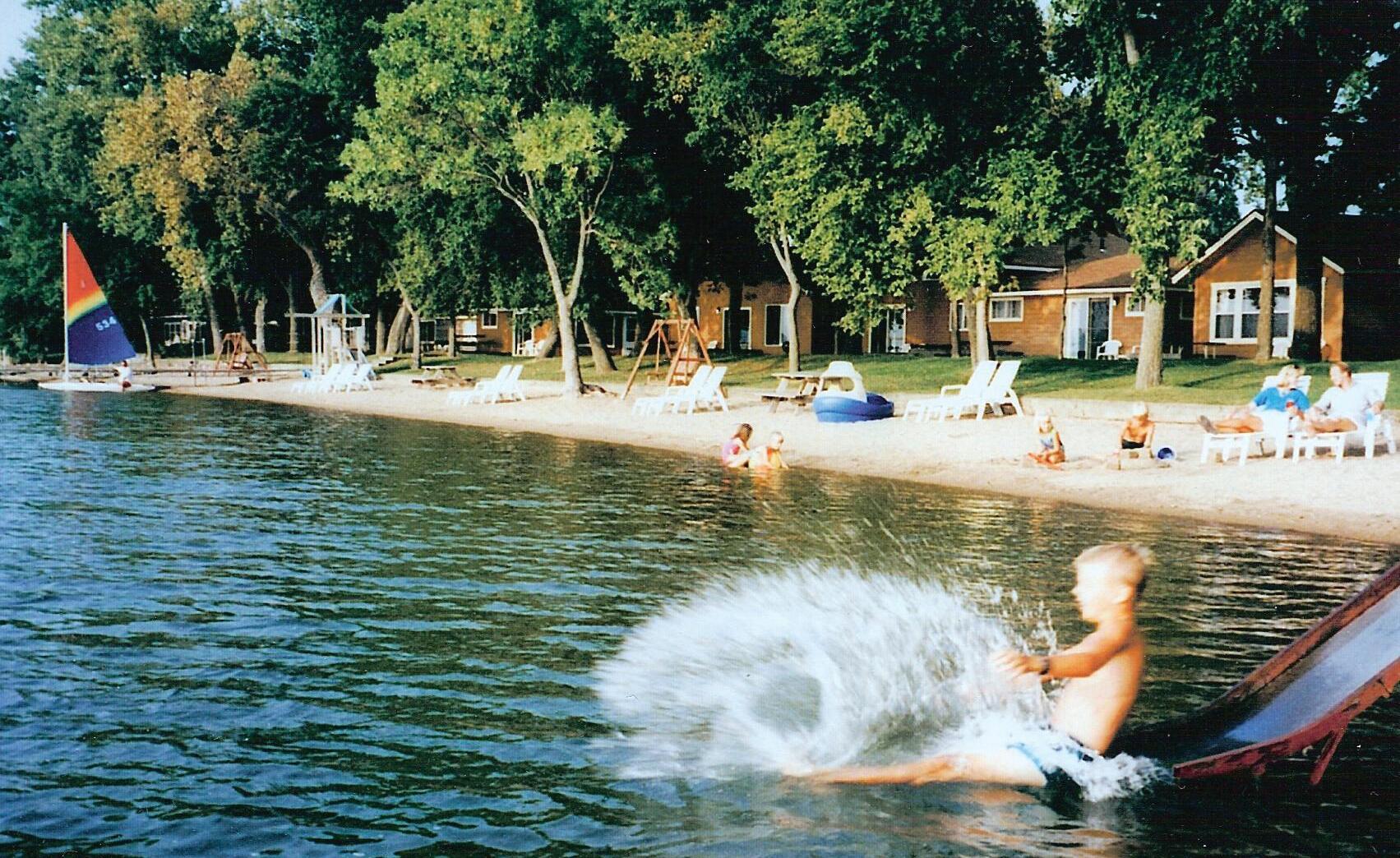
Bayfield, Wisconsin , is the gateway to the Apostle Islands National Lakeshore. It’s also the smallest city in the state on the northernmost tip of Wisconsin. This historic fishing village sits along the south shore of Lake Superior with 22 islands scattered just o the Bayfield peninsula, making the area a mecca for outdoor enthusiasts year-round.

Drop your cares on the mainland and board the ferry for your island getaway in northern Wisconsin. Madeline Island is just across the bay—but a world away. Stroll sandy beaches and relax to the rhythm of the waves. Shop the galleries or cultivate your artistic spirit at the museum, or get outside to hike, bike, kayak, canoe, golf, nap, read, or just relax.
“North of Normal”—it is an attitude and a way of doing things that’s different and unexpected, here in Fargo. Check out these places in the area that you might not find in any other destination, or ones you wouldn’t expect in a Midwest city of Fargo’s size—North of Normal places, if you will.

Yes, we know we’re known for the movie Fargo, and even though the film doesn’t accurately depict what the Fargo metro area looks like, we do like to celebrate the movie with our name. The Woodchipper is available for free photos whenever the visitors center is open.
Like the cows in Chicago, Fargo has a herd of fiberglass statues of bison that roam the city. Each bison was painted by a local artist and placed in various locations around the metro.
Downtown Fargo comes alive during the Folkway’s Night Bazaars. With themed evenings like carnival or retro night and lines of vendors selling their wares, it’s a great way to support local artisans and hang out with the community.
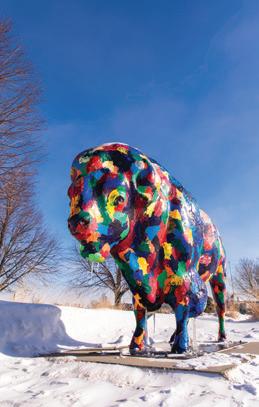


Every Thursday is Pie Day at the Sons of Norway—get there early because the homemade pie goes fast. This is quite an authentic experience right in urban Downtown Fargo.
The Moorhead Dairy Queen is the original location where the delicious Dilly Bar was invented. Visit this walkup location to snap a photo with the 16-foot-tall statue to commemorate the occasion.


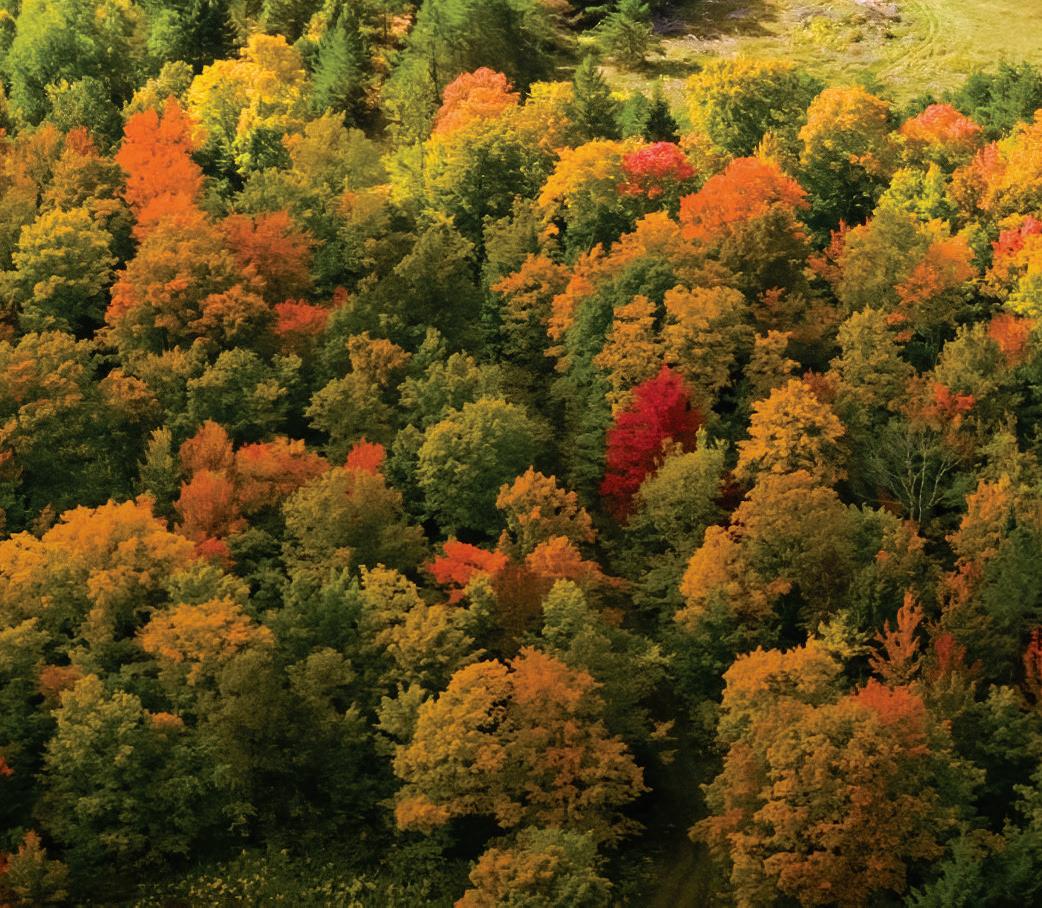
Explore the diverse landscapes and cultural treasures beyond Minnesota’s borders with these curated travel itineraries. From the sunny shores of California to the beauty of Canada and the charming landscapes of North Dakota and Wisconsin, embark on unforgettable journeys and discover new adventures.


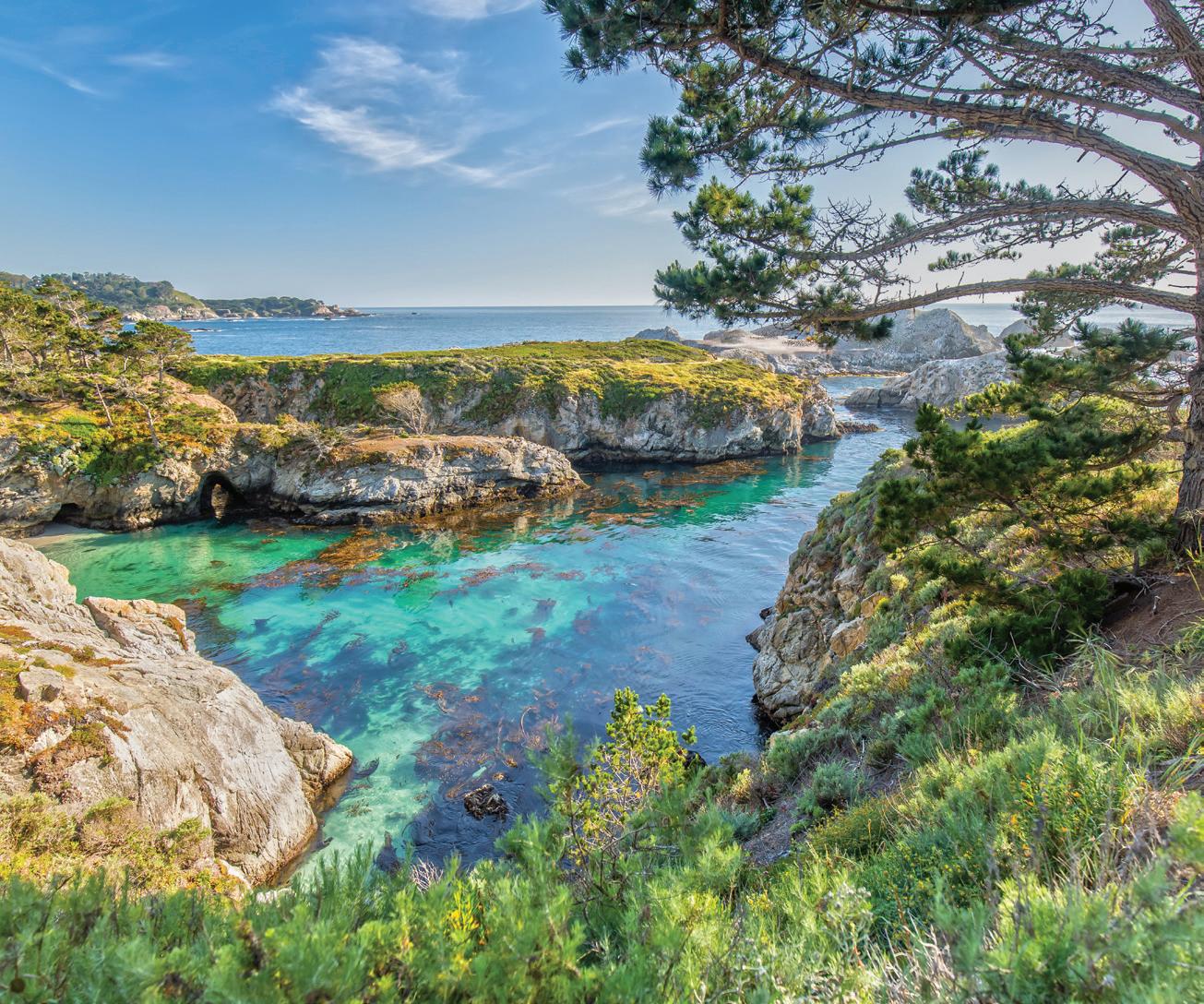
Discover the rich cultural heritage of Monterey County, California, where the rugged coastline meets charming seaside towns and iconic attractions await exploration
Visitors to Monterey County will not be short on discovering iconic landmarks, a storied history, sustainable and diverse culinary o erings, top-notch vineyards and wineries, varied landscapes from scenic coastal views to rugged terrain, world-class art, and more.
DAY 1: Land in Monterey and take in the views of Monterey Bay upon landing. Head to downtown Monterey and check in to one of the many hotels—from budget-friendly to splurge-worthy. Take an evening stroll down Alvarado Street for dinner and drinks or make your way to Old Fisherman’s Wharf for a famous clam chowder bread bowl.
Starting Aug. 8, direct nonstop flights available from Minneapolis-St. Paul International Airport (MSP) to Monterey Airport (MRY)!
DAY 2: Stretch your legs with a stroll down the Monterey Bay Coastal Recreation Trail to Cannery Row. As you walk along the coast, you’ll see
colossal sand dunes standing across the bay along the coastline of Marina, Seaside, and Sand City, perfect for exploring hidden gems and local restaurants. On your walk, you’ll also catch glimpses of marine life such as seals, sea o ers, and dolphins. Make your way through the heart of Cannery Row, made famous by John Steinbeck’s novel “Cannery Row,” featuring restaurants, hotels, specialty shops, galleries, and wine-tasting rooms. At the end of Cannery Row is the world-famous Monterey Bay Aquarium. Once you’ve finished at the aquarium, hop onto the famed Highway 1 down to the storybook village of Carmel-by-the-Sea for dinner at one of 60 restaurants in one square mile. e town’s charming eateries feature a full range of international, regional, and local cuisines—plus, it’s a top-rated wine-tasting destination.
DAY 3: Start your day in Pebble Beach, home to the world famous Pebble Beach Golf Links. Can’t get a tee time? No problem. Try one of the many other courses within the famed gates, including e Hay, a short course recently reimagined by Tiger Woods. For non-golfers, Pebble Beach o ers a number of restaurants, and the famed “17-mile Drive” is a great way to spend
the morning. For more breathtaking coastal scenery, Point Lobos State Natural Reserve is just a few more miles down Highway 1. With hiking trails for all levels and epic views from every trail, Point Lobos is known as “the greatest meeting of land and sea.” From there, continue on to world-famous Big Sur, stopping at local favorite Garrapata State Park or finding your way to the village of Big Sur for a bite to eat and more great views.
DAY 4: Head inland for some under-the-radar exploring. For wine lovers, Monterey County is one of California’s primary viticultural regions. Because of the county’s unusual geography and climate, it has a phenomenal nine American Viticultural Areas within its borders. Head inland on Carmel Valley Road to Carmel Valley Village, home of nine wine tasting rooms all within walking distance of each other. For the adventurous, follow the very scenic Carmel Valley Road out to Arroyo Seco Road and River Road in Salinas Valley for another 10 wine-tasting rooms. For those looking for more adventure, visit one of the U.S.’s newest national parks, Pinnacles National Park. e 26,000-acre playground is home to an array of wildlife and diverse landscapes with hiking trails winding through chaparral, oak woodlands, and canyon bo oms. Rock climbing, bird watching, and cave exploration are also popular activities within the park. On your way back to Monterey, stop in Salinas for authentic Mexican food and local flavor along Main Street.
See Monterey seemonterey.com

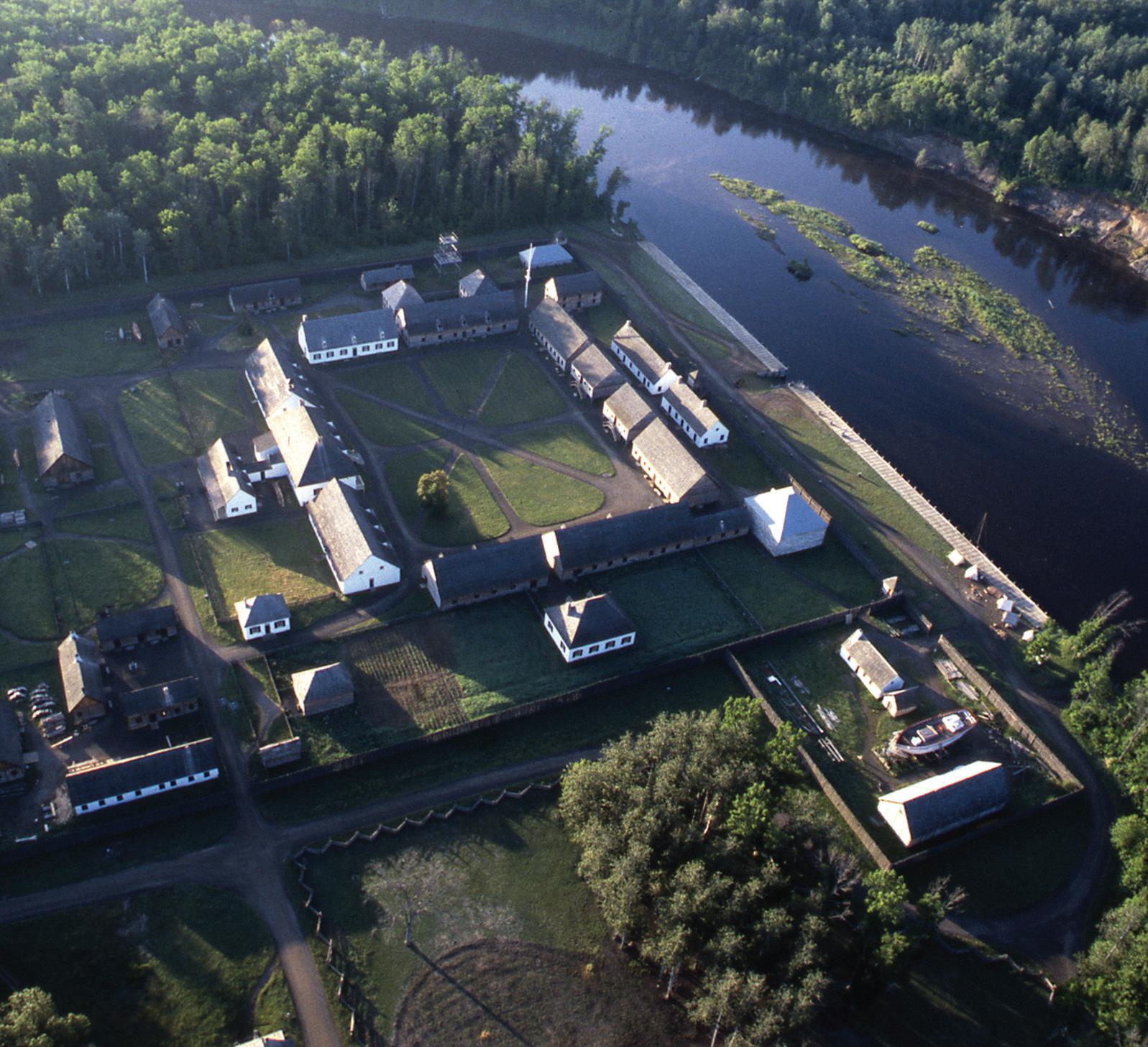

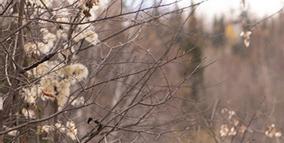


Embark on a journey through time and experience the rich history of Canada at Fort William Historical Park in Thunder Bay, Ontario
Fort William Historical Park features Fort William, one of North America’s largest living history museums, and the state-ofthe-art David ompson Astronomical Observatory, home to one of the largest telescopes in Central Canada. Fort William Historic Park also o ers year-round festivals and events, an RV and tent campground, and in-person, virtual and overnight educational programs.
Discover Fort William e year is 1815, the place is Fort William. is is the inland headquarters of the North West Co.,
the world’s largest fur trading enterprise. is is a place where cultures meet, and relationships are forged between Indigenous Peoples and non-Indigenous newcomers.
Fort William stands on the traditional territory of the Anishinaabe, the Indigenous people who have lived in harmony with the land for generations, and whose traditions, technologies, and customs reflect their relationships with the forests, rivers, and animals around them.
The Anishinaabe share their invaluable knowledge and skills with their European partners and trade furs for European goods. Each
summer, French-Canadian voyageurs, Sco ish businessmen, Indigenous Peoples, and others from around the world gather at Fort William for the Great Rendezvous to discuss business, share news, and renew friendships.
Experience this unique place and time in Canadian history through the eyes of peoples past, who lived and worked around Fort William.
Fort William Historical Park fwhp.ca
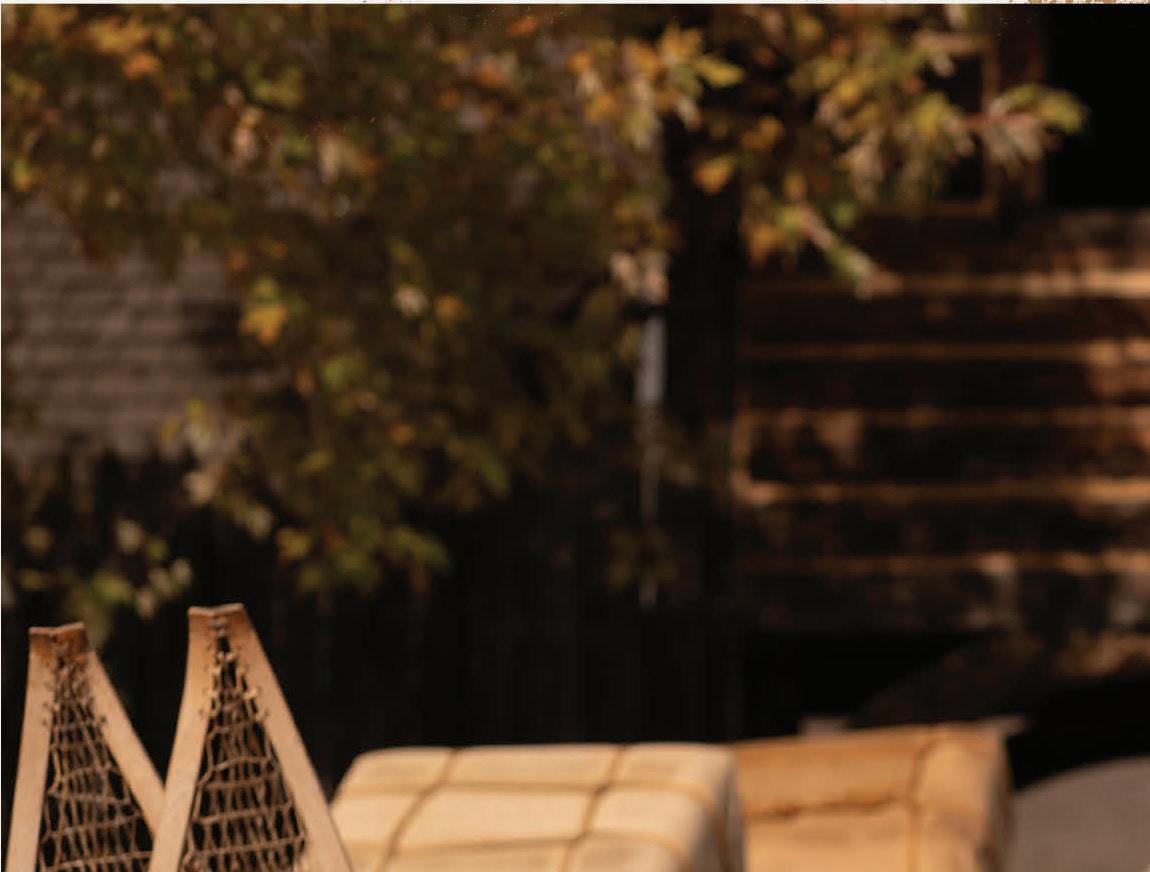









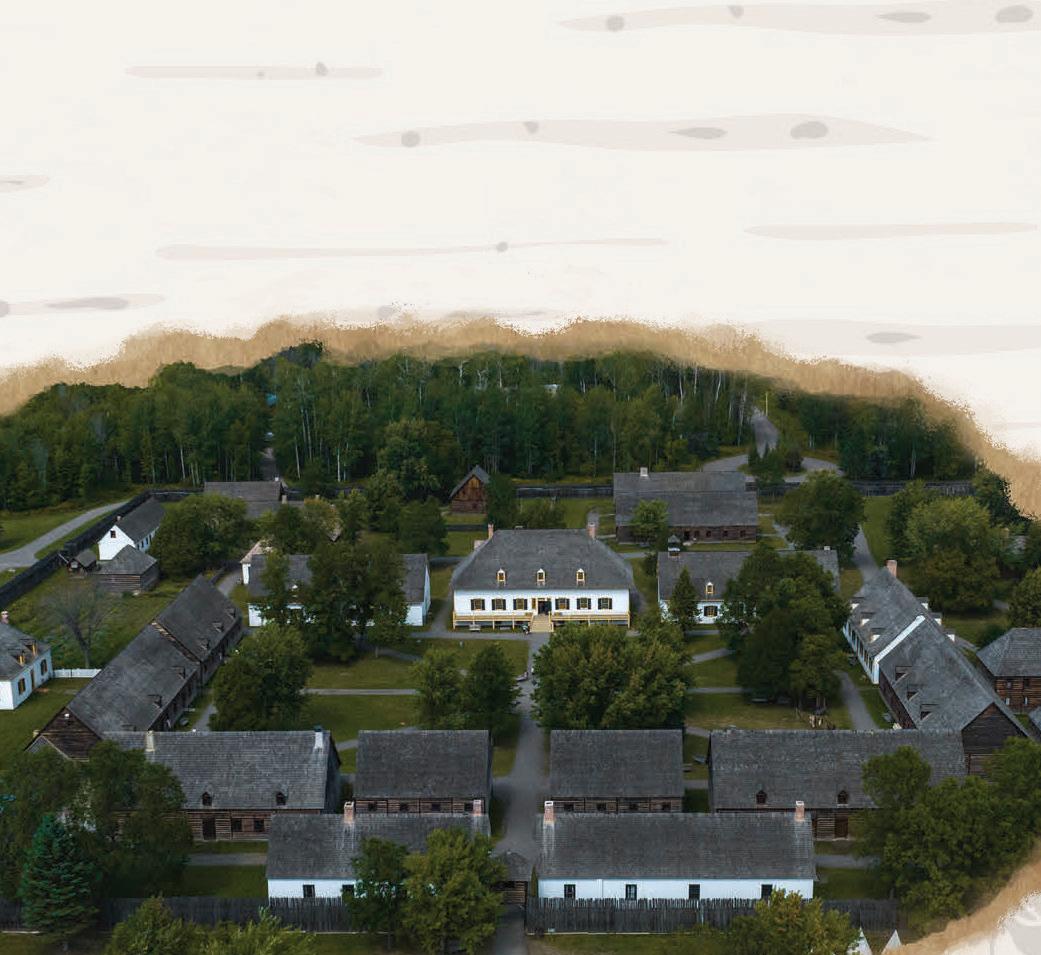


The year is 1815 and the place is Fort William. This is the inland headquarters of the North West Company, the worldʼs largest fur trading enterprise with posts reaching across North America. Fort William stands on the traditional territory of the Anishinaabeg, the Indigenous People who live in harmony with Mother Earth (Nimaamaa Aki).
The Anishinaabeg share their invaluable knowledge, technologies, and skills with Europeans, exchanging furs and other natural goods for European goods. Through their strong relationship with Creator, Ancestors and Mother Earth, the Anishinaabeg ensure their physical, spiritual, and cultural survival.



Embark on a journey to North Dakota and discover a land of wide-open spaces, where the sky stretches endlessly above you. In the summer, immerse yourself in the mesmerizing sunflower bloom, a sea of golden petals under the sun. Experience unique places to stay, from cozy cabins to historic lodges, each o ering a glimpse into the state’s rich heritage. Be awestruck by breathtaking vistas that unfold before your eyes, showcasing the natural beauty of this unspoiled land. As night falls, witness the enchanting spectacle of the Northern Lights painting the sky with vibrant hues. roughout your journey, encounter the warmth and hospitality of North Dakota’s friendly people, making your visit truly unforge able.
A popular road trip from Minnesota through North Dakota follows Interstate 94, taking you through some of our largest cities, as well as smaller communities with dining, lodging, and fun activities for the whole family—and for every budget.
Start east in Fargo where you can grab a bite at 701 Eateries, Rosewild, or Brewhalla. While you’re


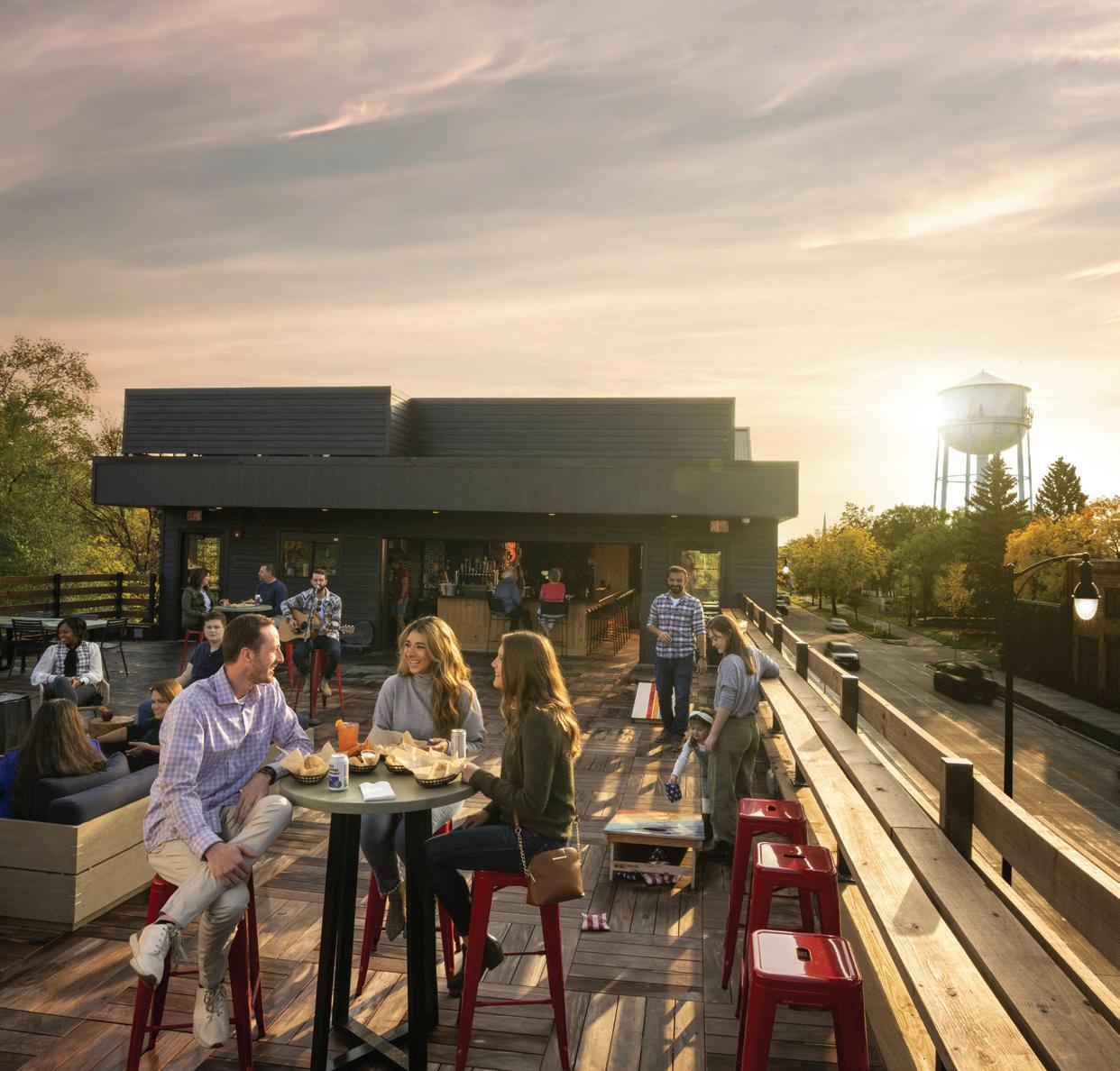
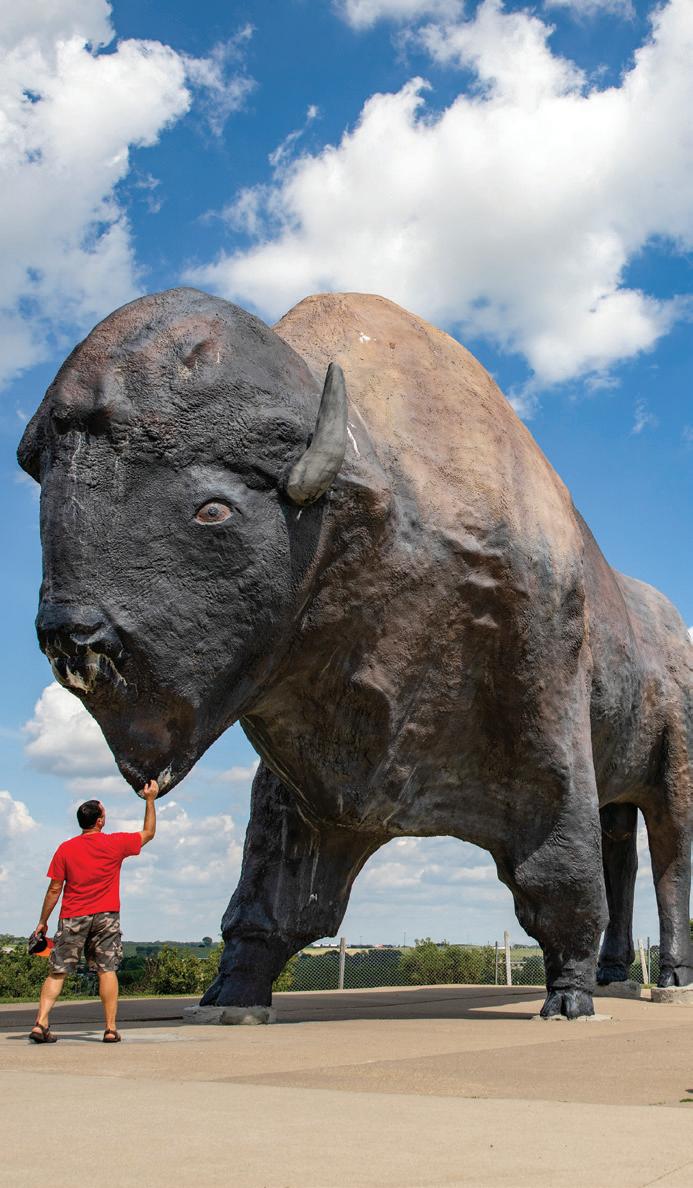
TOP FAMILY-FRIENDLY ATTRACTIONS:
For an unforgettable adventure, discover the hidden gems of North Dakota’s diverse and captivating landscapes
there, catch a game with the Fargo-Moorhead RedHawks or check out the Fargo Air Museum. If you’re looking for a place to stay, e Jasper Hotel is a modern and unique experience for the whole family!
As you’re traveling west, don’t forget to stop in Jamestown to see the World’s Largest Bu alo. In Bismarck, you’ll find the North Dakota Heritage Center and State Museum and the Lewis & Clark Riverboat. Stop for lunch at Huckleberry House, Stonehome Brewing, or Anima Cucina.
Traveling west, stop for photo opportunities at some of the world’s largest roadside a ractions— a Holstein cow named Salem Sue, as well as metal sculptures on the Enchanted Highway. Continue on to the Badlands Dinosaur Museum in Dickinson, then finally the uncrowded eodore Roosevelt National Park near Medora.
North Dakota Tourism HelloND.com

■ Chahinkapa Zoo (Wahpeton)
■ Fargo Air Museum (Fargo)
■ World’s Largest Buffalo (Jamestown)
■ Heritage Center & State Museum (Bismarck)
■ Lewis & Clark Riverboat (Bismarck)
■ Badlands Dinosaur Museum (Dickinson)
■ Enchanted Highway
■ Medora Musical (Medora)
■ Theodore Roosevelt National Park
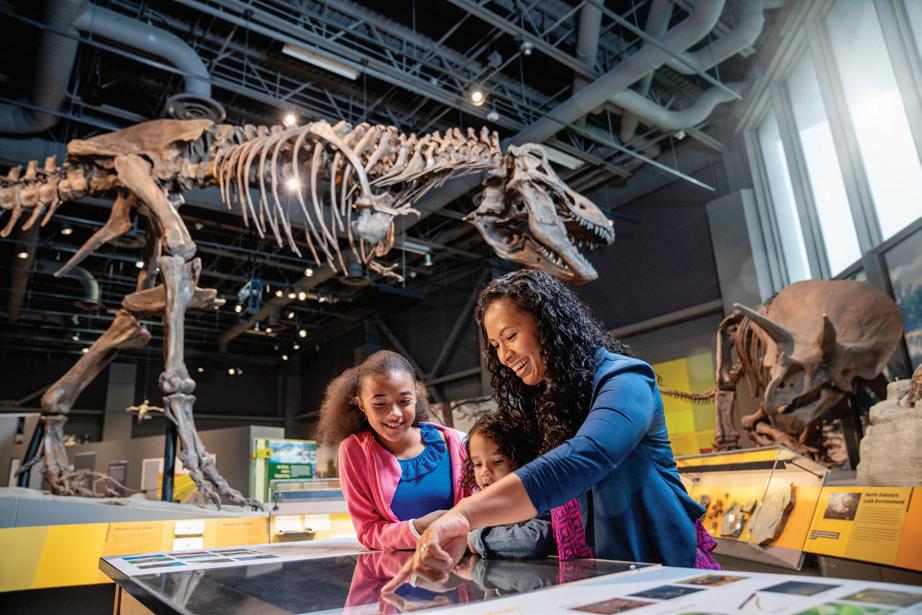
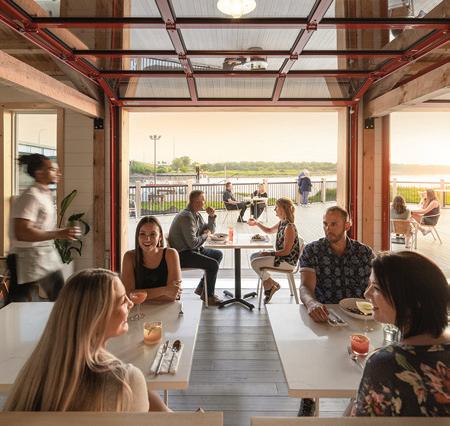


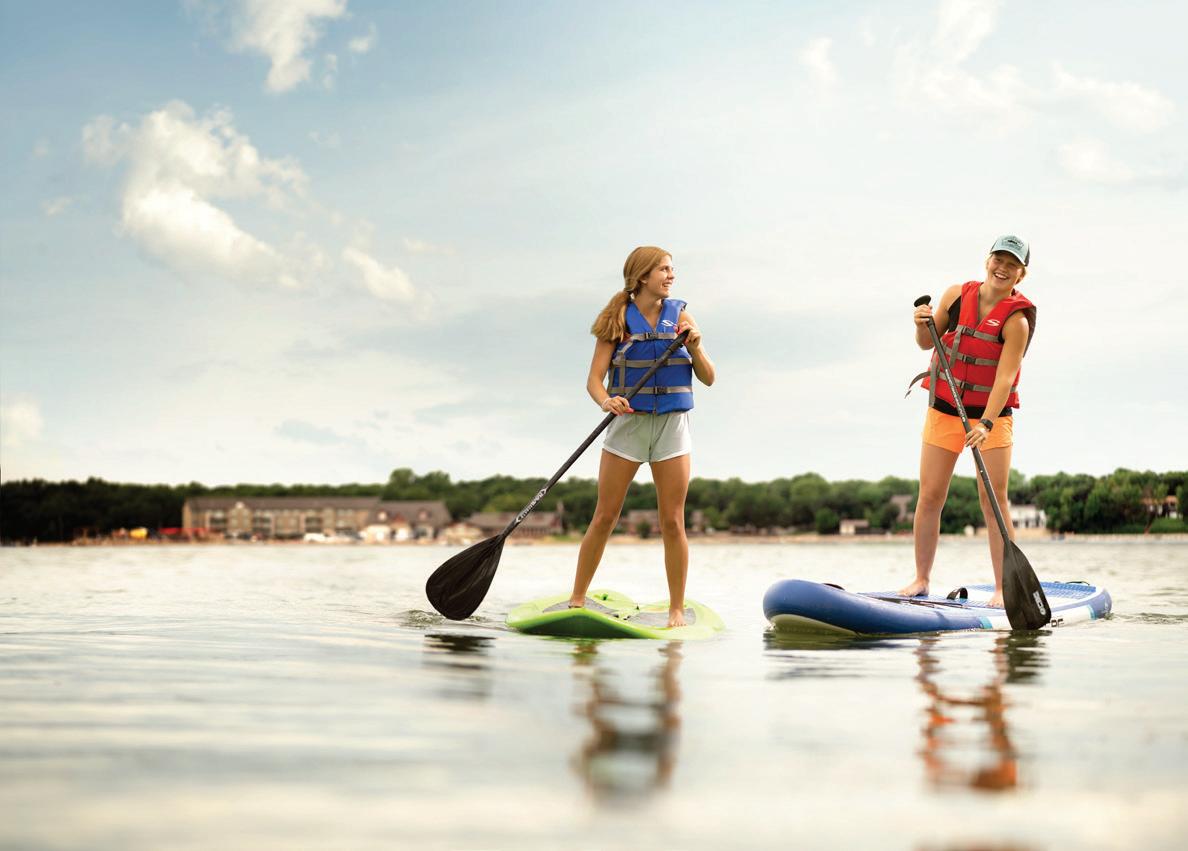








Pack your bags! It’s a great time to hit the open roads. North Dakota is full of unforgettable, affordable adventure. From can’t miss Theodore Roosevelt National Park, to larger-than-life roadside attractions and fun urban escapes, come see why we love it here.

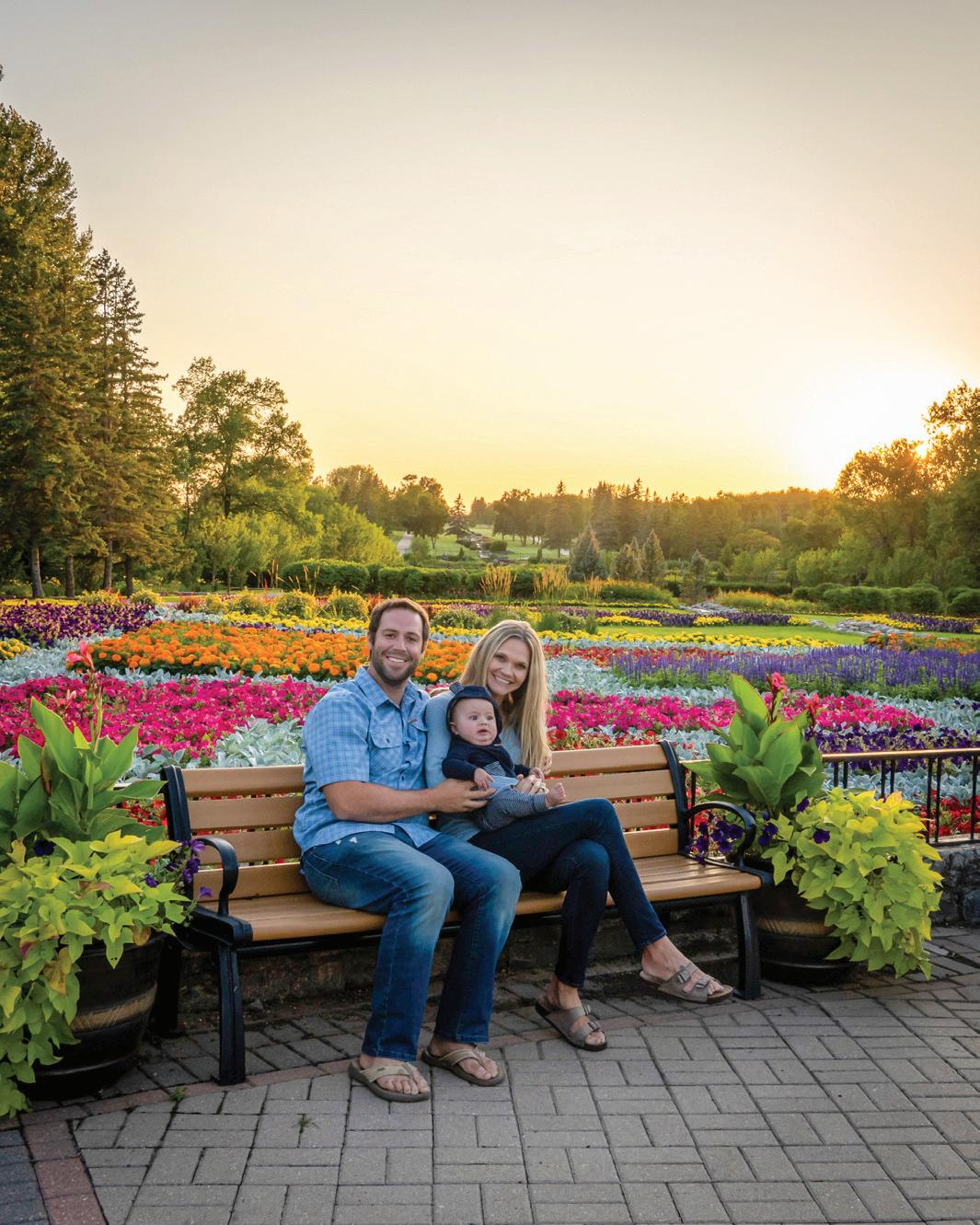


Cradled by towering bluffs on one side and the Mississippi River on the other, Winona is just two hours southeast of the Twin Cities
Start your day with a maple long john or chocolate cake donut at Bloedow Bakery, a family-owned bakery that opened in 1924 and has been dubbed one of the 50 best doughnut shops in the country. Work o your pastries with a hike up a path to the Garvin Heights Overlook or the base of Sugar Loaf Blu to get a panoramic view of the river valley. For an extra workout, hire a local climbing guide (or bring your own gear) to scale Sugar Loaf, Winona’s iconic rock pinnacle that soars more than 500 feet above the city. If visiting in the winter, that blu becomes the country’s second-largest ice park.
Enjoy Winona’s Lake Park—a 1,000-acre playground right in the city where you can rent bicycles or various watercra at Lake Lodge to take the beauty of Lake Winona and its glorious surrounding green spaces. For lunch, order a Sugarloaf Mountain burger and a frosty mug of homemade root beer at Lakeview Drive-Inn, an iconic car-hop-style restaurant that sits on the park’s edge. And if hiking and biking are your thing, Winona’s blu s are crisscrossed with trails that range from easy to exhilarating, depending on what you desire.
Do not miss Winona’s jewel—the Minnesota Marine Art Museum, a stunning museum rimmed by prairie gardens that features world-class artworks inspired by water. A stroll downtown will lead visitors through Winona’s storied past
as a wealthy lumber-baron town—with entire swaths of the opulent central shopping district listed on the National Historic Register. While there, marvel at the breathtaking stained glass in many of our historic buildings, and pop into the Winona County History Center for an up-close look at how this city took shape. History lovers will also enjoy the Watkins Museum and Store, which celebrates 150 years of internationally loved seasoning and home products, and the Kashubian Cultural Institute and Polish Museum, where the lives of some of the city’s earliest European se lers are chronicled.
Stroll to the edge of downtown and find the Windom Park Historic District where a historic park is surrounded by lovely Victorian-era homes. ere, enjoy bright perennial gardens, a gazebo, and a fantastic sculptural fountain which is a turn-of-the-century bronze statue of legendary Princess Wenonah, a Dakota chief’s daughter and Winona’s namesake.
If you time your visit right, take in plays by the Great River Shakespeare Co.—a nationally cast theater company that sets up residence in Winona each summer, or the Minnesota Beethoven Festival, which brings to town classical musicians from around the world.
PLACES TO STAY:
■ Alexander Mansion, a Victorian-era luxuriously restored masterpiece
■ AmericInn by Wyndham, a new property with a heated swimming pool and hearty free breakfast
■ Fairfield Inn & Suites, a lodging favorite offering a view of Sugar Loaf Bluff
NOTEWORTHY DINING:
■ Nosh Scratch Kitchen, Mediterranean-influenced American cuisine
■ Heirloom Seasonal Bistro, a farm-to-table wonder
■ Sapori di Sicilia, serving up authentic Italian fare
■ Muddled Thyme, featuring brick-oven pizza and inventive craft cocktails
■ Backwater BBQ, a variety of savory, mouthwatering barbeque goodness
■ Bloedow Bakery, celebrating 100 years of legendary doughnuts
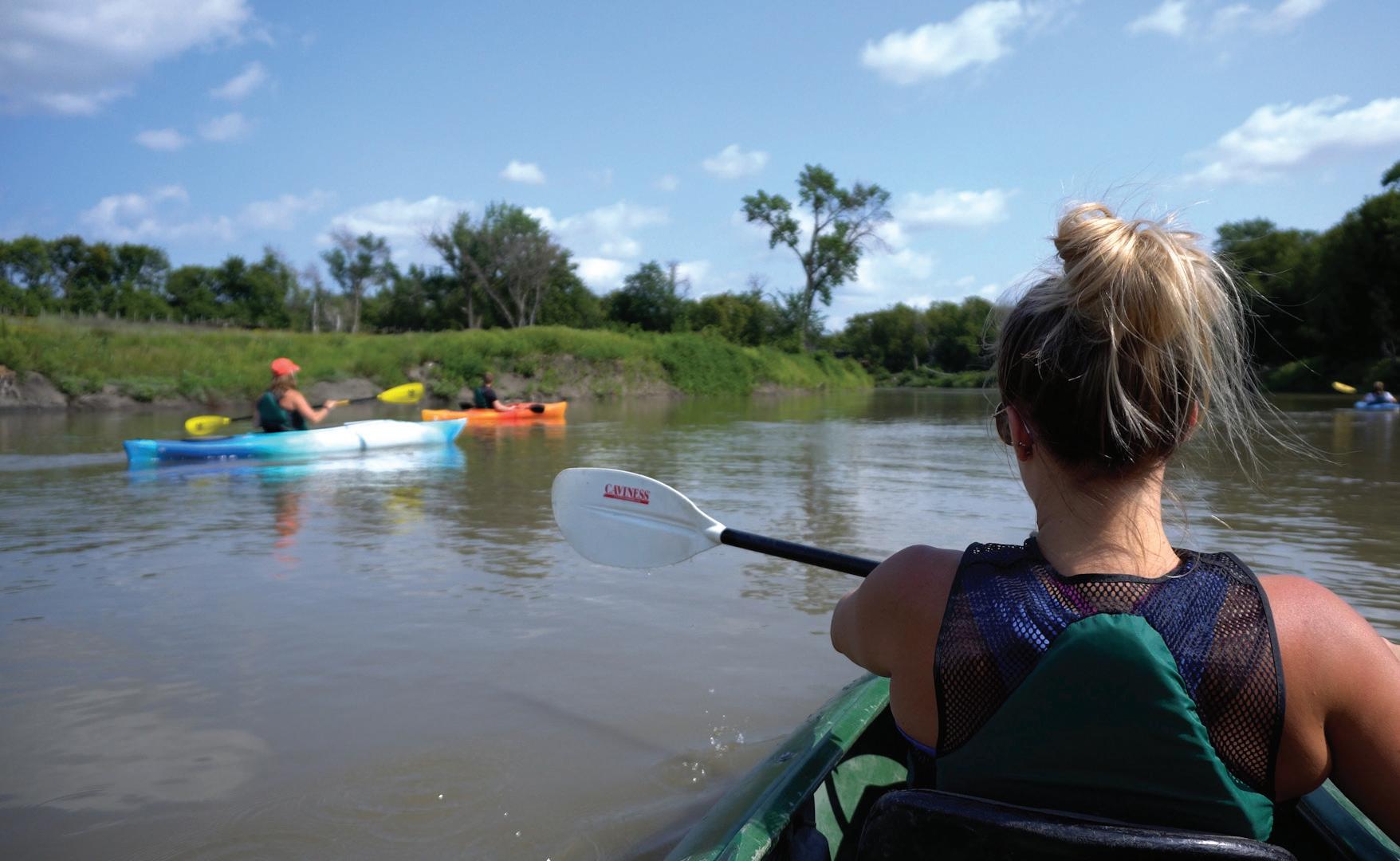
Explore the vibrant culture and rich history of Fargo-Moorhead, where urban excitement meets Midwestern charm in a dynamic blend of art, entertainment, and outdoor experiences
Stay at the Jasper Hotel, downtown Fargo’s newest luxury hotel. e Jasper has unique touches that highlight the history and spirit of the Fargo metro area. With its location in the heart of downtown Fargo, adjacent to Broadway Square, the Jasper is the perfect place to call home during your stay in Fargo.
BONANZAVILLE: Fargo has prairie roots—pioneers around the railroad built it. A stop at this pioneer village and museum makes you feel like you’ve stepped back into the 1800s. Wander through original structures relocated here from across the region, including Fargo’s first house, a schoolhouse, a saloon and hotel, a church, and a fully-stocked mercantile store.
Within the next few years, Fargo will be home to a state-of-the-art FargoMoorhead Science Museum and The Wave Waterpark, connected to a hotel, conveniently located for the entire family.
BREWHALLA: e Brewhalla Market is full of vendors like the Mangata Wine & Raw Bar, Unglued Market, and Livin’ the Dream Po ery. Not to mention, Brewhalla is connected to Drekker Brewing Co. and serves Drekker beers throughout the market.
HJEMKOMST CENTER: Pronounced YEM-komst, your next stop needs to
be the Scandinavian culture center across the bridge in Fargo’s sister city, Moorhead. e area has a rich Scandinavian history, and many locals’ ancestry can be traced back to Norway and Sweden (you’ll notice a lot of fair-haired folks around town!).
PLAINS ART MUSEUM: e largest art museum in the state, which houses Native American artist exhibits and highlights of regional arts. Take a guided, 60-minute tour for $4/person, led by an experienced guide. Reservations are required for the tours, but you can also take a self-guided gander through the Plains Art Museum’s three main exhibitions.
MOORHEAD DAIRY QUEEN: is historic landmark has been a local favorite since it opened in the late 1940s. Try one of the hand-dipped Dilly Bars (invented at this shop!) and take your photo by the 16-foot-tall Dilly Bar statue.
TATI’S MEDITERRANEAN: Located within the Lights on Sheyenne, Tati’s serves Mediterranean favorites like meat, cheese, spinach pies, falafel, shawarma, grape leaves, kebabs, and more.
MARGE’S DINER: Serving breakfast, brunch, and lunch in the heart of Downtown Fargo, Marge’s Diner is decorated using the Midwest Grandma aesthetic while serving up hearty comfort food dishes alongside a salad bar for a great and healthy lunch option.
PRAIRIE KITCHEN/CAMP LONE TREE: Celebrate our heritage of the Midwest in a funky, cozy Nordic kitchen. Stay with a classic like Swedish meatballs, or try something truly Nordic like their relish tray, lefse pla er, or their hotdish of the moment.
ROSEWILD: Located within the Jasper Hotel in the heart of downtown Fargo, you can expect everything at Rosewild to be made with Fargo traditions in mind. From the farm-to-table options on the menu to the handmade plates by a local artist, this unique spot is bound to be your new favorite.
KINGPINZ: Kingpinz Social is a Family Entertainment Center featuring HyperBowling, a new way to play! HyperBowling is great for all ages, whether you’re a pro or have never been bowling—this high-tech way to play levels the playing field for all.
RED RIVER ZOO: Fargo’s zoo features both native and exotic animals found in climate conditions similar to those in the Red River Valley. ey specialize in caring for and breeding some of the rarest cold climate species on earth.
SUITE SHOTS: is Top Golf-like facility has 60 climate-controlled suites powered by Toptracer Ranger so ware and five indoor simulation rooms.
SPLASH PADS: Broadway Square in downtown Fargo and e Lights on Sheyenne in West Fargo have great splash pads for kids to enjoy during events like the Red River Market or a concert on the big stage.
Visit Fargo-Moorhead fargomoorhead.org


Experience the serene beauty and unique charm of Madeline Island, where Lake Superior’s tranquil waters, pristine beaches, and rich cultural heritage await exploration
When you visit Madeline Island, you are sure to be amazed by the variety of dining options available to you. From vegan and vegetarian (locally sourced when possible) to classic Wisconsin supper club fare and local bistro offerings, hot dogs, and hamburgers to pizza and salad, sandwiches, and snacks to go, breakfast, lunch, dinner and in between, you’ll find it all here. en, sail into the sunset or canoe and kayak the lagoon at Big Bay Town Park. Visit pristine beaches—both small
and large—and view your toes through crystal clear waters or simply beach-comb for sea glass and Lake Superior agates. Join a guided kayak tour and view the sandstone shores at Big Bay State Park and take in all that is Lake Superior, the Apostle Islands, and surrounding sea caves. Forget the clock—you’re on island time!
Madeline Island Chamber of Commerce madelineisland.com
Explore the picturesque charm and natural beauty of Bayfield, Wisconsin, nestled along the scenic shores of Lake Superior
Start your day with a co ee from Wonderstate Co ee in the heart of downtown Bayfield or Antler Coffee from the St. James Social. You’ll need plenty of fuel for the rest of your adventure. Book a kayak sea caves tour (June–August) with an experienced outfitter like Lost Creek Adventures or Trek & Trail. You’ll paddle in and around sandstone caves and cli s that paint the Apostle Islands Shoreline. Book a trip around the Apostle Islands aboard the Apostle Islands Cruise. is narrated tour will give you views of sea caves, lighthouses, and wildlife. A er your adventure, have lunch overlooking the Bayfield Harbor at the Deck at
the Bayfield Inn or Pier Plaza. For dinner, make a reservation at Good yme or the Fat Radish, which features dishes with farm-to-table ingredients.
Hike the Apostle Islands National Lakeshore Trail from Meyers Beach, which offers sweeping views of the mainland sea caves from above. Or discover the Big Ravine Trail in the heart of Downtown Bayfield. is trail is just steps from shopping and dining.
Stay at the Queen’s View Bed and Breakfast or Seagull Bay Motel, which boasts Superior Views from comfortable suites. Find your sanctuary at Wild Rice Retreat or stay in a tree house among orchards and berry farms along the Bayfield Fruit Loop.
MADELINE ISLAND’S TOP 10:
1. Wisconsin’s hidden gem: the 22 Apostle Islands
2. Miles of sandy beaches, hiking, and biking
3. Cottages and camping on the shores of Lake Superior
4. Explore by kayak, canoe, sailboat, or fishing boat
5. Robert Trent Jones Sr.designed golf course
6. Voted one of the “Coolest Small Towns in the U.S.”
7. Unique local shopping
8. Fine dining and cocktails
9. History
10. Arts
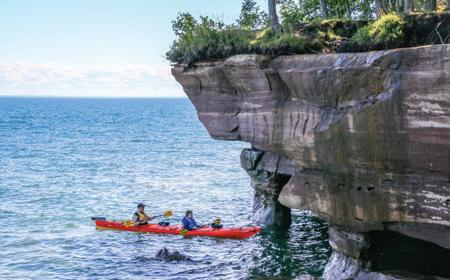
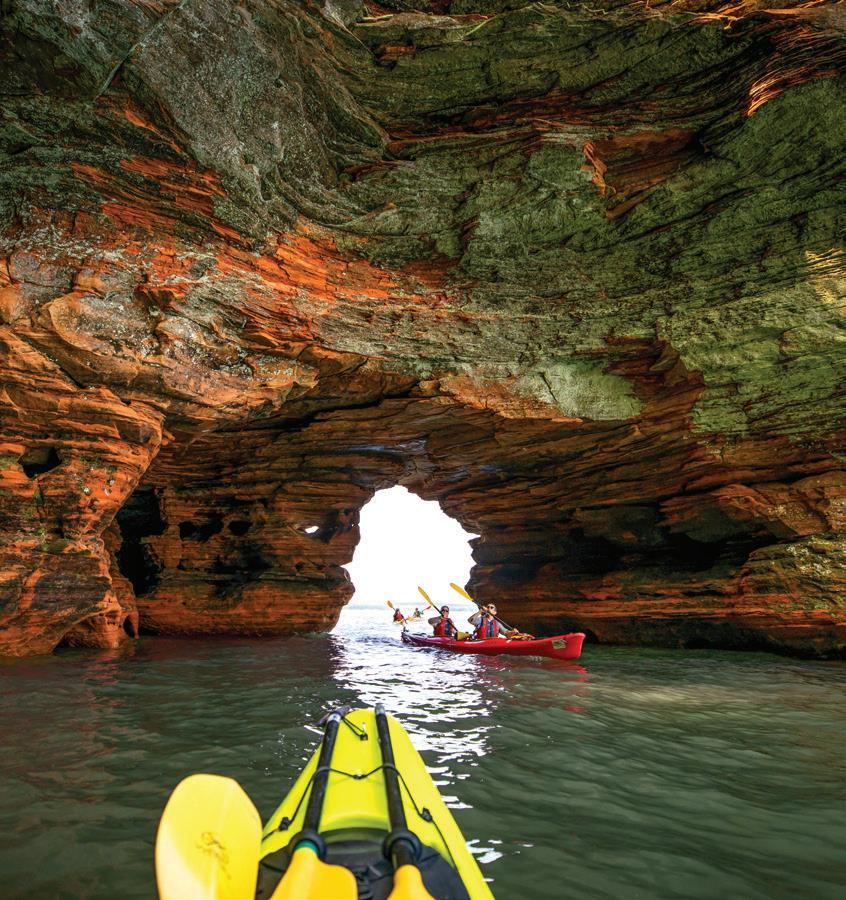
Make your way to Copper Crow Distillery, the first Indigenous-owned distillery in North America. ese spirits are made from whey, a byproduct of cheese distilled to perfection. If
beer is more your thing, check out Adventure Club Brewing, a fun microbrewery with quality beer and quality company.
Bayfield Chamber and Visitor Bureau bayfield.org
Nestled along the majestic Mississippi River, visiting La Crosse promises a delightful blend of scenic beauty, outdoor activities, and vibrant cultural experiences
Escape to the La Crosse Region, a vibrant destination where adventure awaits around every bend of the Mississippi River. Set against the backdrop of ancient blu s, this charming river town promises an array of experiences tailor made for every member of your crew.
Embark on a journey filled with savory delights, cultural marvels, and unforge able festivals that redefine summer fun. Summer is the prime time for epic festivals. Dive into the heart of the action with Moon Tunes, a ursday evening extravaganza boasting live tunes echoing through Riverside Park, accompanied by an enticing lineup of food trucks. Don’t miss
the chance to wander through the enchanting International Friendship Gardens, a haven brimming with captivating sculptures, exotic flora, and even a tranquil coy pond—a true family treasure trove.
Delve deeper into the charm of Historic Downtown La Crosse during Artspire, where vibrant chalk masterpieces line the streets and local artisans showcase their talents, drawing crowds of all ages. But the fun doesn’t end there! Whether you’re unleashing your inner artist with po ery painting or bonding with furry friends on a farm, there’s no shortage of hands-on, sentimental activities. For some genuine laughter, indulge in some goat yoga between rolling blu s or set sail on a riverboat pizza cruise, all before treating yourself to a scoop of homemade Wisconsin ice cream.

dearest, and prepare to create memories with those that ma er most. Spirited adventure for all—it’s in our nature!
Pack your bags, gather your nearest and
Explore La Crosse explorelacrosse.com










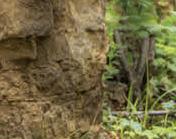




The La Crosse Region bursts with inspired adventure as unique as each explorer. Discover exciting flavors, charming history, vibrant views, and epic outdoor recreation just a road trip away!

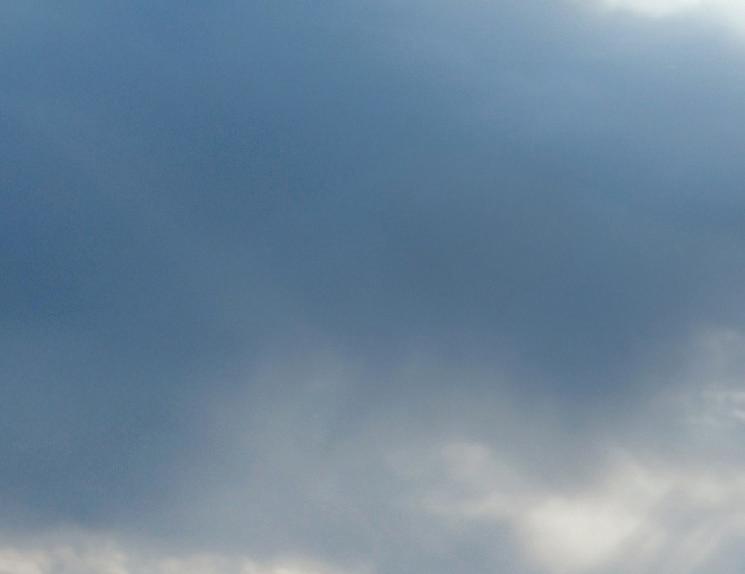



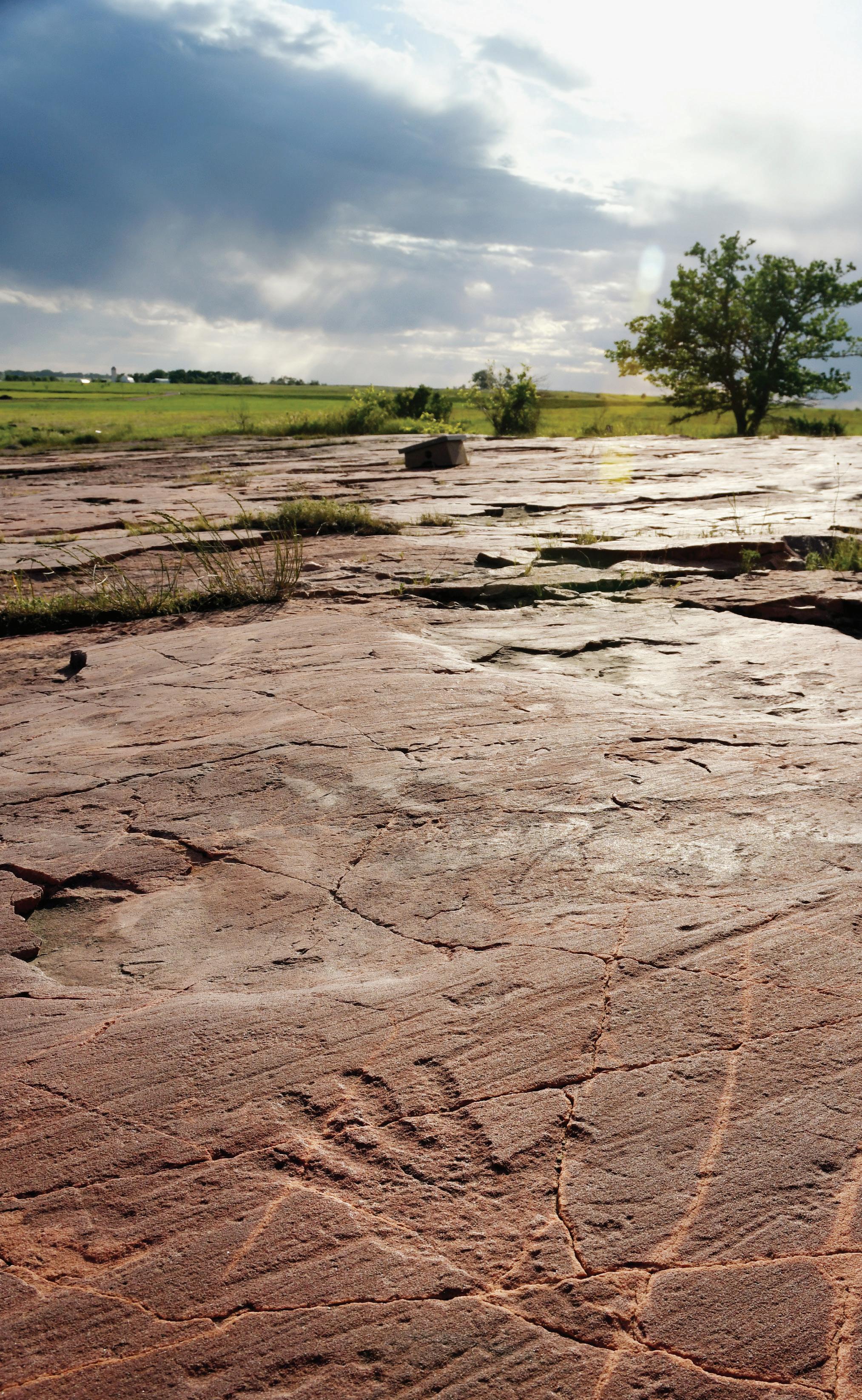

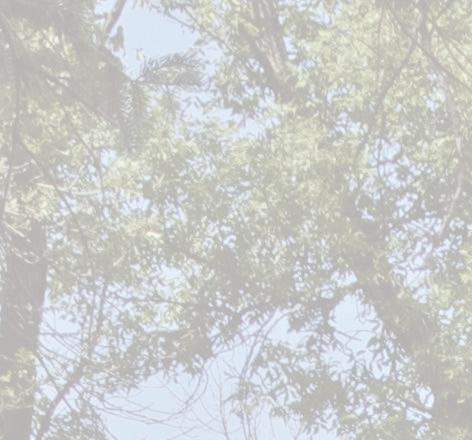 From le : A hand print in the foreground at the Je ers Petroglyphs; a gathering at the Lower Sioux Indian Community in Morton
From le : A hand print in the foreground at the Je ers Petroglyphs; a gathering at the Lower Sioux Indian Community in Morton


as more than one interpretive sign dotting the many historical trails throughout southwestern Minnesota reminds visitors, tallgrass prairie used to cover a third of the state’s land.
Today, less than 1% of that prairie remains. Much of it can be found in this corner of the state, between the Minnesota River Valley and the South Dakota border.
That’s not all the native history to be found here. From ancient geological events to more recent human conflicts, southwestern Minnesota has been the site of massive upheavals easily belied by its current, placid vibe of flat twolane highways curving through cornfields and wind turbines.
If you know where to look, history still reverberates through windows that offer glimpses to the region’s past, both distant and near. Think ancient (still active) sacred pilgrimage sites for North America’s Indigenous people; key locations in the U.S.-Dakota War of 1862; and modern-day Dakota communities that welcome visitors to celebrate their culture and heritage.
These are destinations where visitors can root themselves in history while letting their imaginations soar. They’re easy to
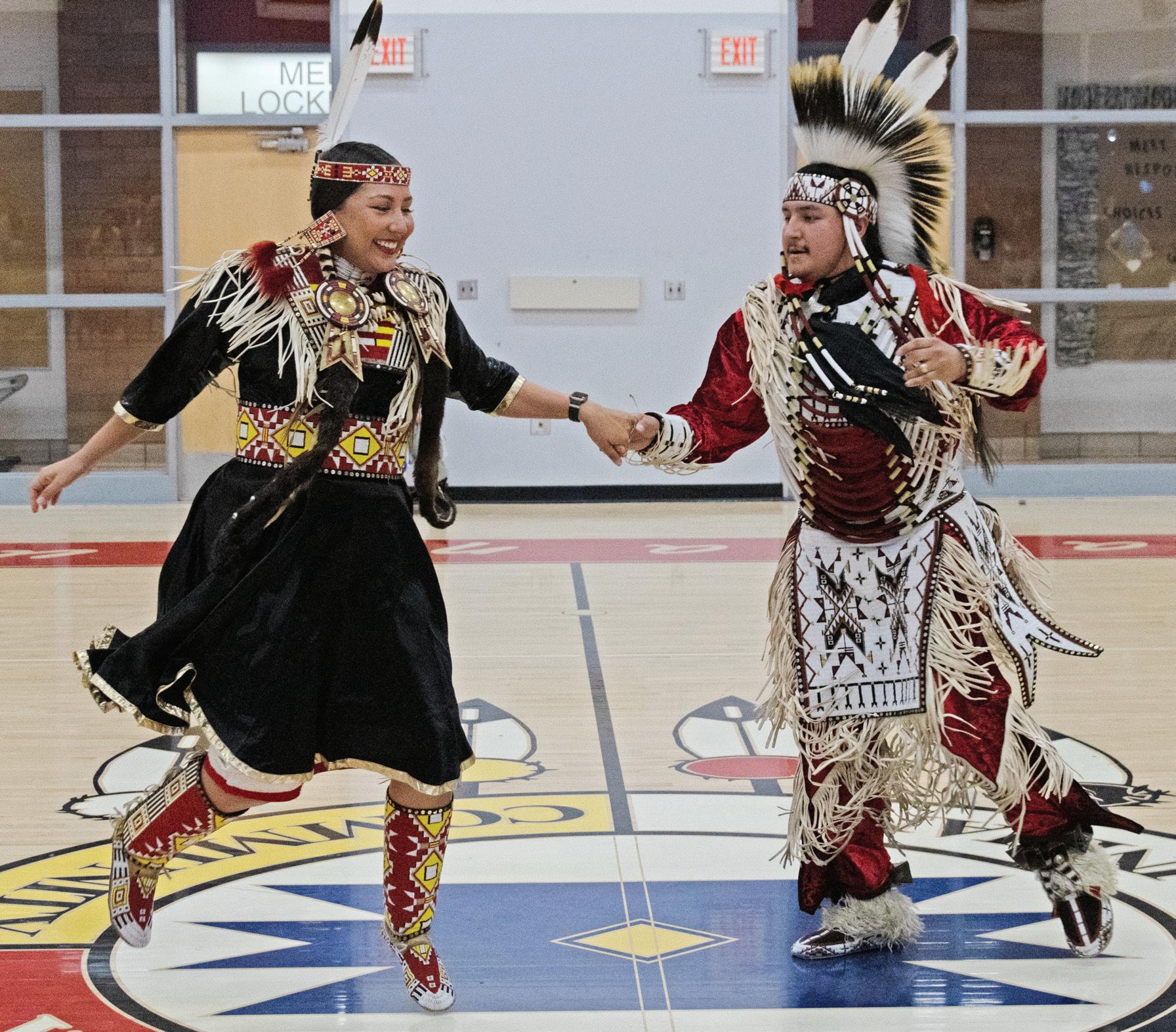
History still reverberates through windows that offer glimpses to the region’s past, both distant and near.
bundle together on a long weekend’s road trip from the Twin Cities. This sample itinerary offers a mix of solemn reverence, awe, outdoor adventure, cross-cultural celebration, and important lessons on di cult aspects of our state’s history.
Our first set of stops o ers insights into the U.S.-Dakota War of 1862, as well as the opportunity to visit the Lower Sioux Indian Community, where roughly 145 families live on 1,743 acres of Tribal land. It is near Morton and also known as the Mdewakanton Tribal Reservation.
Listed on the National Register of Historic Places and operated by the Lower Sioux Indian Community, the Lower Sioux Agency Historic Site was where fighting first took place in the U.S.-Dakota War. The seeds of the conflict were sown in 1851, when the Dakota ceded 24 million acres of land to the U.S. govern -
ment under pressure and were moved to two adjoining reservations along the Minnesota River.
Under the terms of the treaty, the Dakota were to receive annual payments of goods and money. But as the United States edged closer to civil war, commitments to the Dakota tribes were neglected. Conditions on the reservations grew desperate as crop failures, poor hunting, and postponed payments led to extreme hunger.
On the sweltering morning of Aug. 18, 1862, Dakota warriors attacked the Lower Sioux Agency, the government’s seat of operations for managing the reservation. Fighting raged for six weeks as the Dakota sought to reclaim their homeland up and down the Minnesota River Valley. Nearly 500 white settlers lost their lives, as well as an unknown but significant number of Dakota, including 38 men who were hanged in Mankato in the largest mass execution in U.S. history.
Today, visitors to the Lower Sioux Agency Historic Site can learn much of this painful history directly from knowledgeable staff and informative videos. They also can explore a Dakota history exhibit, a restored 1861 U.S. government building, scenic trails along the Minnesota River, and a museum store featuring Native American books and gifts. Weekend programs feature hands-on lessons on Dakota life, crop cultivation methods, and relationship with nature.
The Lower Sioux Indian Community is hosting their annual wacipi, or powwow, on June 14-16 this year. All are welcome at the event, which attracts dancers from Tribal communities across the United States and Canada and also features a golf tournament and fun runs.
Next, stop in the town of Morton to check out the Renville County Historical Museum. Executive director Nicole Elzenga is a fount of knowledge about the county’s history and can usher visitors through exhibits on early Native American history and artifacts, as well as pioneer life and more recent town history.
Then head a couple miles down the road to the Birch Coulee Battlefield State Historic Site. A self-guided trail with interpretive signs tells the story of the 36-hour battle between U.S. soldiers and Dakota akicita (warriors) that took place here. The story is told from the perspectives of U.S. Army Captain Joseph Anderson and Waŋbdí Táŋka (Big Eagle), a Mdewakanton Dakota chief. Re-created prairie makes it easy to visualize the tall
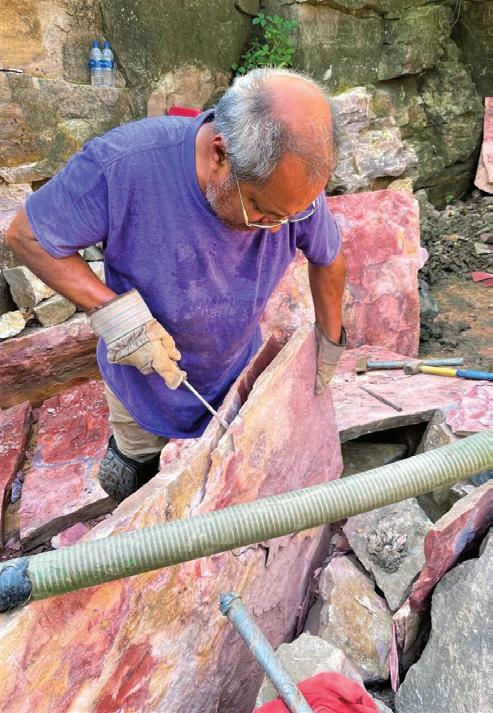
grasses that hid the warriors during the battle. Guideposts mark the spots where soldiers camped, as well as positions the Dakota took when surrounding them.
Whether you want to camp in the area or just check out the largest municipal park in Minnesota, Ramsey Park/ Cansayapi in Redwood Falls is your next stop. The 219-acre park, also known as the “Little Yellowstone of Minnesota,” features multiple waterfalls, campground facilities, shelter houses, 4 miles of paved hiking trails, a trout stream, scenic overlooks, and a zoo. It’s also a sacred Dakota site—Cansayapi means “the place where they painted the trees red.”
Ninety minutes southwest of Redwood Falls, less than 10 miles from the South Dakota border, State Highway 23 opens onto the welcome oasis of Pipestone. The commercial historic district boasts stately brick buildings that o er everything from murder-mystery dinner-theater shows to a county museum to thrifting and dining.
Pipestone also serves as a gateway to one of the state’s two national monuments. Pipestone National Monument was recognized by the federal government in 1937, but its importance to Indigenous people dates back much further.
The area’s significance springs from its geology. A red rock called Sioux quartzite snakes across southwestern Minnesota. Deposited an estimated 1.4 billion years ago as coastline sediment,
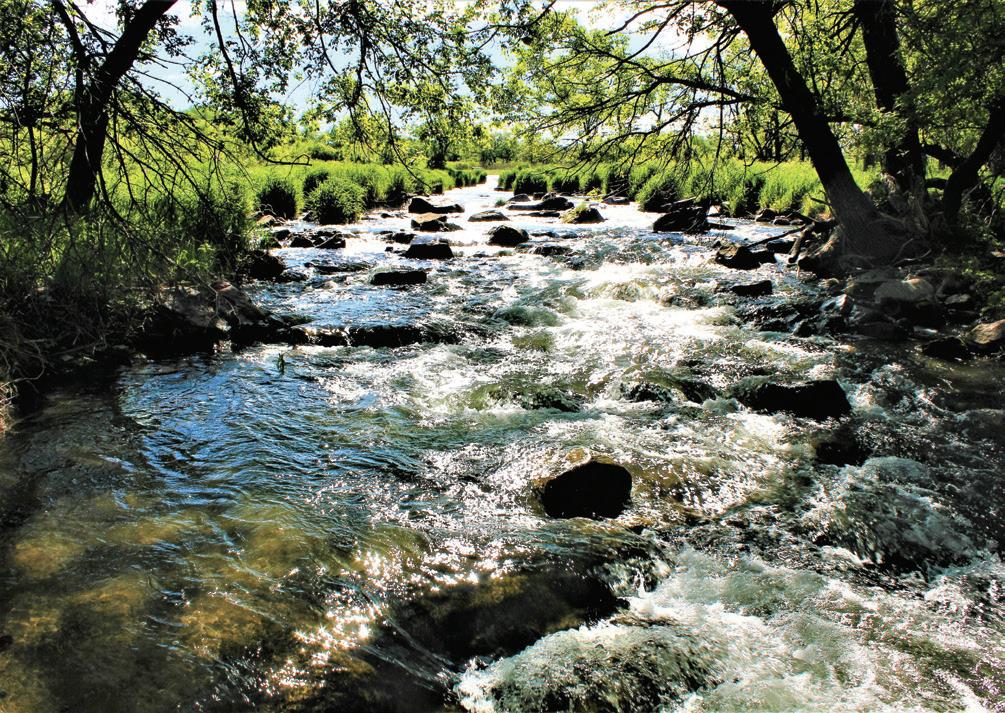
The “Li le Yellowstone of Minnesota” features multiple waterfalls, campground facilities, hiking trails, and a zoo. It’s also a sacred Dakota site.

The rock face at Jeffers sports more than 5,000 petroglyphs. Some are more than 7,000 years old, making this one of the oldest continuously used sacred sites in the world.
the rock is buried in beds a mile and a half thick in Pipestone County, marking the landscape with pink-, red-, and purplehued outcroppings.
As professor and historian Joseph Amato writes in “Pipestone and the Red Rock: Inventing Peoples and Towns,” “[The quartzite beds] form waterfalls, gorges, and palisades. They furnished cli s o which, legend has it, Indian hunters drove buffalo to their deaths. They thwarted even the greediest plow and o ered captivating building materials out of which magical towns were erected.”
Long before they helped build magical towns, the rock beds provided materials for the making of sacred ceremonial pipes for Indigenous people, who have been quarrying here for more than 3,000 years. Beneath the thick layers of quartzite lies a layer of similarly composed but much softer pipestone—a workable clay suited to carving and shaping. Pipes made of this red stone have been found across North America, a testament to the extensive trade networks of Native people.
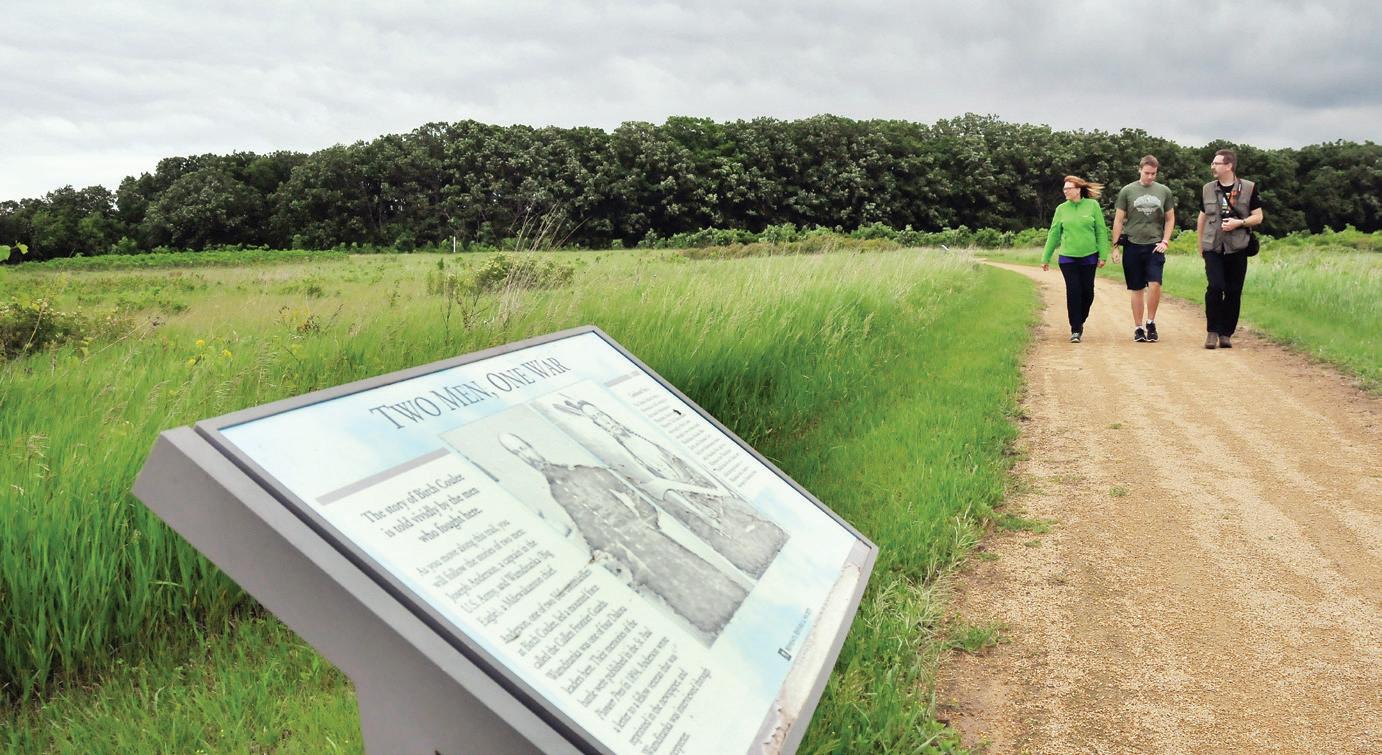
Exhibits at the monument’s visitor center detail the history of the site, which is still actively quarried by Tribal members today. Cultural demonstrators carve pipes on-site, and visitors can walk the three-quarter-mile Circle Trail through tallgrass prairie, past a striking waterfall, and along ancient quarry beds. Colorful strips of cloth tied to branches along the trail, representing visitors’ prayers and o erings, speak to the site’s enduring sacred nature.
When you’re ready for a bite and a nightcap, the excellent Stonehouse & Quarry Lounge in downtown Pipestone is the perfect spot to enjoy a small-town supper-club vibe with a surprisingly robust tap list and top-notch fare. If you’re ready to trade in your camping tent for a hotel bed, the GrandStay Hotel & Suites o ers pet-friendly comfort to spare, along with an indoor pool and hot tub.
Now we turn back east, motoring 70 flat miles—all horizon, fields, and wind turbines—to Je ers. Here, the Sioux quartzite surfaces again, forming a great, sloping slate where ancestors of modern Native Americans gathered to share stories and carve messages for future generations.
The rock face at Jeffers sports more than 5,000 petroglyphs. Some are more than 7,000 years old, making this one of the oldest continuously used sacred sites in the world. Oral histories and archaeological research suggest this area was inhabited and visited by multiple Tribal nations, including the Ioway, Otoe, Cheyenne, and Dakota.
Images of buffalo, turtles, thunderbirds, weapons, mythical beasts, and
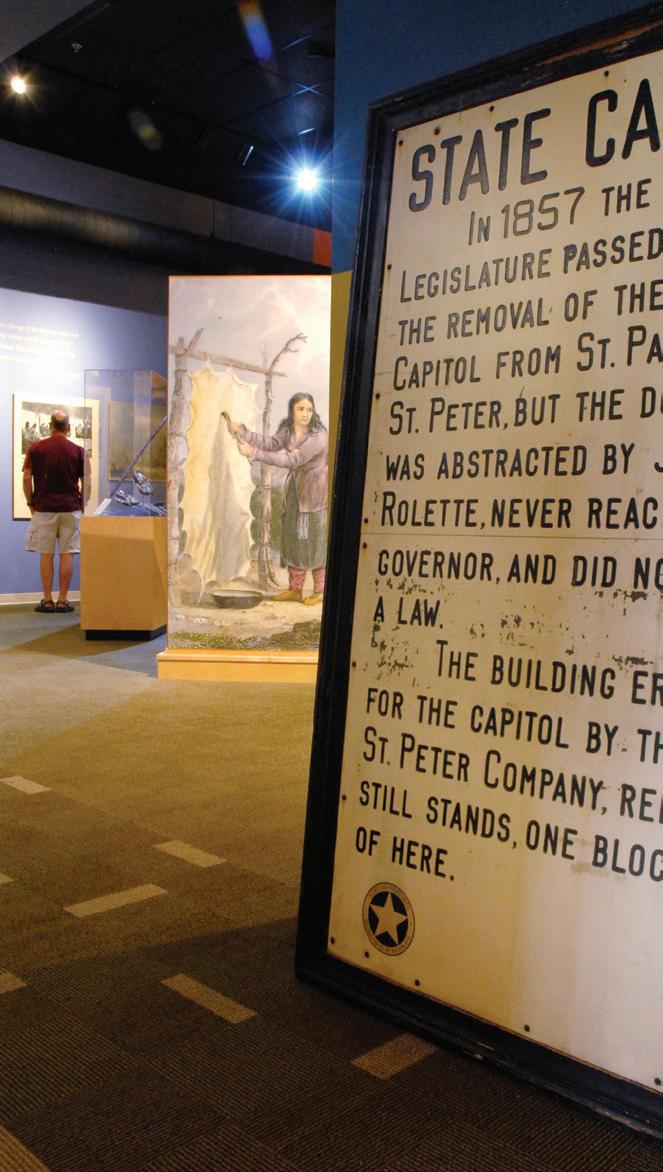
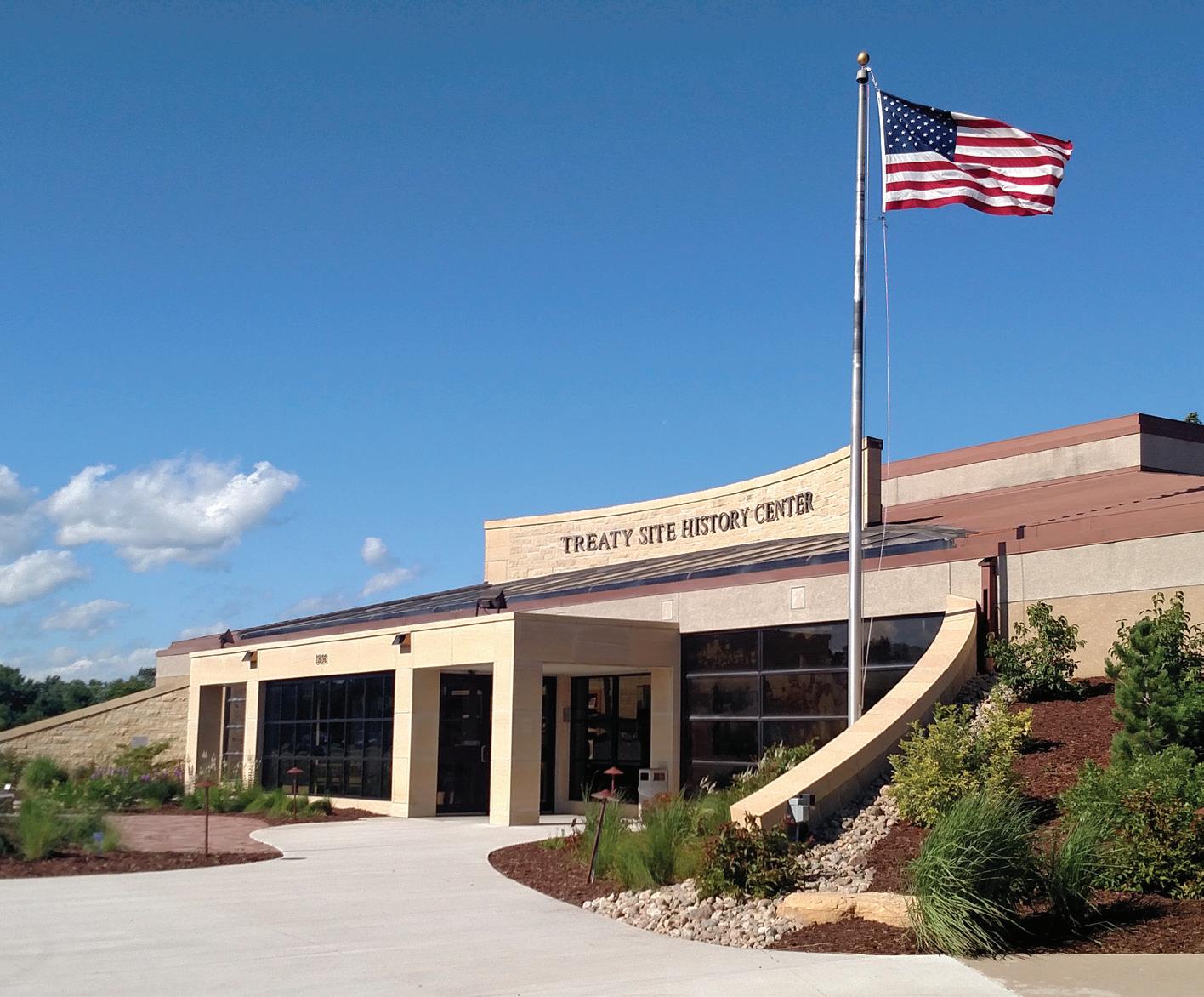
humans document historic events, spiritual beliefs, and practical teachings from across the continent—an ancient encyclopedia. “This was probably the first university,” says site manager David Briese. “People made long pilgrimages here to share information, goods, and stories.”
Native American elders have worked closely with archaeologists at Jeffers to interpret the petroglyphs’ meaning and significance. Guides share these insights with visitors on hourly tours throughout the summer. Still, plenty of mysteries remain.
Contemplate them while learning how to make your own atlatl, or spear-throwing tool, in one of the many hands-on educational programs. Or marvel at the natural parallel cracks in the rock (marked with petroglyphs) that perfectly channel the beams of the rising sun on the summer solstice, slowly illuminating a story that unfolds on the surrounding rock.
Take in the 33 acres of native prairie and 127 acres of restored prairie, featuring more than 300 species of colorful flowers and grasses. Did you know prickly pear cactus grows in Minnesota? You’ll find it here. The same big bluestem and Indian grass prairie that dominates the site today once covered all of southwestern Minnesota.
Close your eyes, listen to the breeze, and sense the lingering presence of thousands of years’ worth of reverent visitors to this magical place—a generationspanning group that now includes you.
About halfway back to the Twin Cities from Jeffers, we rejoin the Minnesota River in St. Peter for our final two stops. The Treaty Site Historical Center has exhibits on the Dakota people and their interactions with the area’s settlers and traders, which led to the signing of the 1851 Treaty of Traverse des Sioux.
For a more visceral sense of that history, visit the adjacent Traverse des Sioux Historic Site, the centuries-old river crossing where the treaty itself was signed—and where the Dakota lived and worked for thousands of years before that. Walk the trails used by generations of Dakota and early French fur traders and read the interpretive signs detailing the site’s rich and complex history.
Finally, head home with a new understanding and respect for our state’s first people, the land they stewarded for millennia, the darker aspects of our shared history, and the spirit and resilience that flourish today.
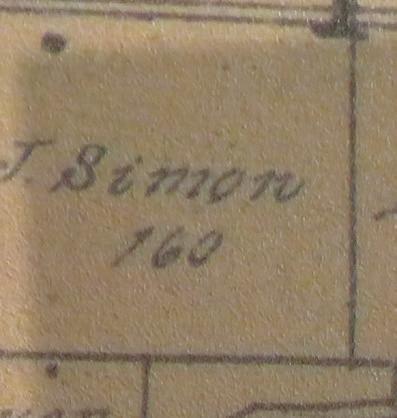
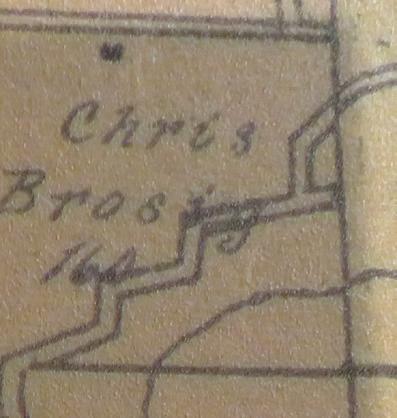


















 by ANGELA BURGESS
by ANGELA BURGESS
s my family’s genealogist, I don’t just want to document the facts of my ancestors’ lives: I want their life stories to be remembered and retold. I am always looking for ways to communicate my findings to my family in a way that will really stick. My siblings and I are all Boomers, and we hear the clock ticking: We realize now is the time to get our children interested in their ancestors. But first we ourselves must learn the stories—and only the most devoted of us are willing to spend hundreds of hours poring over documents to uncover them. The size of our family (16 living siblings) makes us an extreme example of a challenge all families face sooner or later: Which stories have meaning, and how will we pass them down?
Last summer, I came upon a powerful technique to breathe life into old



stories and captivate even the most history-averse of my family. I invited my siblings to join me on a tour of my maternal grandmother’s hometown of Winona. We spent two days reconnecting with long-lost relatives, exploring the old parts of town, and visiting the places where she and her family lived and died. At the end of the trip, I have no doubt that my siblings passed along the story of my grandmother’s life in Winona to their children. Success!
Starting about six months before the tour, I set up a group chat to share my planning with siblings. I chose a narrow focus: We would explore the lives of my grandmother’s family, in Winona, from 1880 to 1920. None of us had been to Winona, but we all had met my grandma and had a few photos of her and her family there. I sent a short biography of my grandma to the group chat.





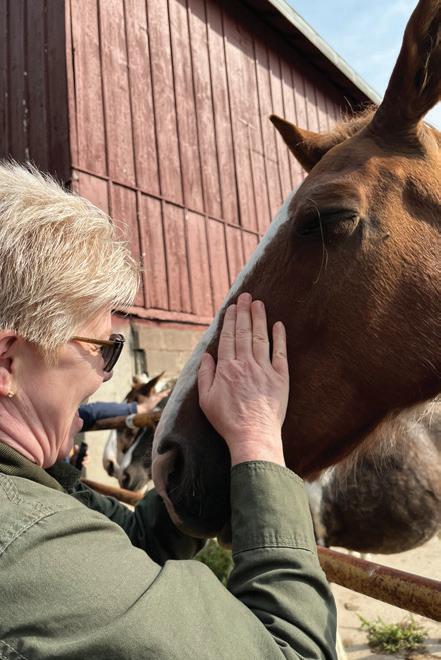
To learn about turn-of-the-century Winona, I scanned a few general histories from sites like Family Search, which has an impressive free collection of history books. I read material from the local historical society and watched a few YouTube videos. But to develop a tour, I had to connect the town history to my grandma’s history, and I had to place locations on a map. After a bit of digging online, I found a street map of Winona from 1900 with the markings of a bygone town: the streetcar line, the railroad depots, the steamboat landing, the old town square. I began by plotting our family’s landmarks on the map, places like their home address from the U.S. Census and their burial sites.
On Ancestry.com, I came upon a fantastic resource, a database of old phone directories. Here I found my grandma’s family listed across several years. Next to
my great-grandfather’s name was his job title and his employer, something census records don’t provide. The business directory told me more about his employer and its location. The directories also had guides to the region’s civic and religious life, which helped me discover that my family attended the German-Catholic church and school. The map was starting to fill in as I continually sent updates to the group chat.
With this new information, I then turned to newspapers.com. Newspapers used to publish the smallest bits of family news. Sometimes the only way to learn about ancestors’ social lives, especially in the case of women, is to find notices of their church or school activities. Young men will show up in the sports pages or in wartime draft announcements. Through newspaper accounts, I discovered our family’s deep involvement in the Winona volunteer fire department. And that one of my ancestors was arrested for murder— but that’s another tale.
family farm really got people excited. Our dad was a farmer, too, but he lost his northwest Iowa farm in the 1950s, and most of us ended up leaving the Midwest. Now we live all over the United States, mostly in urban areas. A chance to revisit our farming roots was irresistible.
Standing in front of landmarks and touring the farm, our entire extended family joined us as we uncovered our deep Minnesota roots.
I started to put the trip together. I booked an Airbnb within the perimeters of the 1900 street map. I called ahead to the cemetery to get the exact location of our ancestors’ plot (cemeteries will happily email you a map). I made sure the excellent Winona County History Center’s museum would be open when we visited. I returned to research mode and documented our family relationship with our farm cousins. I drafted a schedule revolving around the precious few hours we would have at our cousin’s farm.
Historical Marker Database website helped ensure I didn’t overlook important things such as the town’s war memorial. Like most families, we have many veterans in our tree. I even identified a few Winona landmarks and worked backward to see if we had any family connection to them. Incredibly, it turned out a cousin once owned the town’s historic bakery, Bloedow, so that got added to the tour. I spent so much time visualizing old Winona that when I finally turned o the highway to the town, I half expected it to be in sepia tone.
As I plotted the locations of activities and shared new discoveries, interest among my siblings grew, but what happened next really made the trip come together. A photo from 1962 showed my family with seven cousins at a picnic in Mankato. We knew they were a farm family in the Winona area, but we’d had no contact with them since the 1990s. Were they still there? Could we reconnect? I found a lead on Facebook and sent a blind message into the ether, attaching the picture: “Remember us?” A couple of weeks later, I got the nicest, warmest reply: “Yes, we’re still here, come see us!”
I scoured the internet for old pictures. The Minnesota Digital Library had the best collection. I found my grandma’s church and school and her dad’s workplace. The
Instead, the eight of us who traveled from Virginia, Maryland, Idaho, Iowa, and California were treated to technicolor fall foliage in a spectacular setting, with tall bluffs and rolling hills and crystal blue skies. (Don’t miss Gavin Heights, the best overlook.) We visited just after Labor Day, and Winona was lively with college students but not too crowded. Everyone we encountered was nice and curious about what we were up to. At the museum, we were thrilled to see a large sign for Winona Wagons, my great-grandpa’s employer, plus an antique fire engine and plenty of Winona merchandise.



The timing was perfect. We were two months out from the trip. The prospect of visiting our cousins on their historic

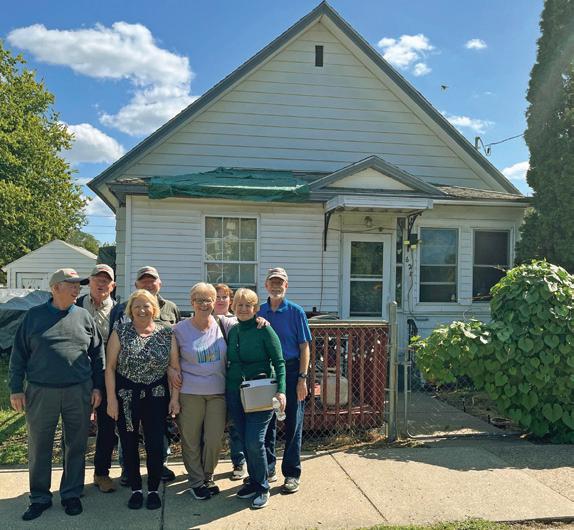



At the cemetery, we said a prayer of thanks.

The farm visit was one of the most rewarding experiences any of us had had in a long time.


As we shared photos to our family Facebook group, standing in front of landmarks and touring the farm, our entire extended family joined us as we uncovered our deep Minnesota roots.
Where you grow up impacts who you become.
If you want to know your ancestors, go to where they came from. A part of you is still there.












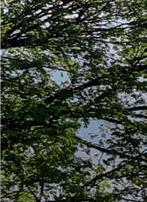


























wNashville is a burgeoning travel destination asserting its hallowed place on the map of U.S. cultureby ERIK TORMOEN
e don’t know who singer-songwriter Victoria Shaw is, singer-songwriter Victoria Shaw tells us. We’re seated, bottle neck to wine stem, in Nashville’s quaint-in-style, heavyweight-in-renown Bluebird Cafe, a twinkle-lights bar between a barber shop and a hair salon in a rinky-dink strip mall. The lights are low. Tacked to a post, a Tennessee license plate spells out, “SHHH,” apprising patrons of the venue’s famously strict no-talking policy. It’s the height of intimacy, performance-wise. Young songwriters sometimes get discovered here, including, as legend tells it, Garth Brooks and a teenage Taylor Swift.
On a tiny stage, Shaw continues. If we don’t know her, we at least know her stu : John Michael Montgomery’s “I Love the Way You Love Me,” Doug Johnson’s “Too Busy Being in Love,” Brooks’ “The River.” The co-writer of four No. 1 singles is commanding and even a little demanding—the type of stage presence so confident that roles reverse and it’s the audience anxious for the performer’s approval. Between deftly brandished songs, Shaw shares industry tales. She once vouched for her bona fides via simple, emailed decree: “Google me!”
This is pure Nashville: a “Google me!” city aware of its worth. Songwriters’ songwriters and would-be superstars fill out the fast-expanding metro.
Teary and agog, we were a group of journalists on a trip hosted by a public relations firm, tasked to spread word to readers, including you, that Nashville should dot your vacation vision board. YouGov, a United Kingdom-based data analytics firm, ranked Nashville the most popular U.S. city to visit last year, based on positive opinions surveyed. After four days, I’ll add that Nashville proves most interesting for the history seeping through its nightlife and musical identity. Shaw embodied something essential: sharp hospitality, fun-loving hustle, and, as she invited singer-songwriter mentees onstage, a flair for room-making.
From a visitor’s perspective, what is Nashville’s imprint?
There’s Southern identity, of course. A fl ight attendant suggested we smile while deplaning. But think beyond yee-haw culture and bachelorette parties. If those Insta-adorned pink cowboy hats add something legitimate to Nashville’s
intricate, honey-drizzled, hickory-dappled appeal, a city tourism representative nonetheless estimated bachelorette parties account for 2-3% of business. Don’t forget the sonorous hills of Tennessee antiquity. Everywhere, everything is more storied than it may seem.
In the 1990s, the city had “family-fun summer escape” going for it. But its big theme park, the tuneful Opryland, shuttered in 1997. Then, 9/11 impacted tourism. Nashville appeared to lack a working identity. So, it bu ed its laurels, with the convention and visitors bureau promoting “Music City.” Legend ascribes the epithet to an unlikely source: Queen Victoria. In fact, it starts with Fisk University. The Nashville institution, founded just after the Civil War, educated freed, formerly enslaved people. A nine-member student chorus, organized to raise funds for the school, toured Great Britain in 1873. After hearing the Fisk Jubilee Singers, the queen said they had to be from “the Music City of the United States,” according to the Musicians Hall of Fame and Museum in downtown Nashville.
Around town, you may catch snippets of the city’s rebranding: live music at the airport, songs streaming from tra c boxes, and signs indicating which eateries and venues host live music (about 180 of them—so, many).
Music aside, what’s on residents’ minds? Possibly the new soccer stadium. Maybe the 350 new restaurants that have opened since 2020. Or the 98 newcomers who arrived per day in 2022, as per the Census Bureau, making Nashville the 10th fastest growing U.S. metro area with a population of at least a million (in this case: over 2 million). Many flocked from California, New York, and Chicago for a ordability, according to a tourism bureau representative.
For lodging, our blogging coterie experienced two vibes. The first seemed to suit families, corporate parties, young adults raised on immersive theme-park vacations, and anyone who loves a good water feature: It’s the mazy, 9-acre(!), 2,800-room(!!), 50,000-plant-species(!!!) Gaylord Opryland Resort & Convention Center, where a small boat gently burbles along an indoor stream and where shops, eateries, a waterpark, and a spa conjure artificial-township charm under one grand array of glass roofs. Then, we stayed in the new Four Seasons hotel downtown. Complete swank. Forty stories. Spa and rooftop bar. A polished, gastronomically artful restaurant, Mimo. Exacting attention to detail (Gibson guitars in upper-crust suites, Tennessee walnut furnishings). And proximity to honky-tonk central.
When you hit the streets for cocktails, seek out Willie Nelson’s old tour bus perched semi-perilously along the edge of a downtown hotel.
It took three cranes to lift this spacious tin caravan 10 stories up the Bobby Hotel, according to a bartender there. Inside, windows frame downtown sunsets the way the biggest star in outlaw country—whose genre willfully thumbed Nashville’s sheen—might’ve seen them. The rest of the rooftop bar opens up to skyscraping views. We landed amid a winter-meets-summer-camp theme: Wes-Anderson charm and rooftop igloos. Not far from Bobby, another themed pop-up slings kitschy drinks in the Dream Nashville hotel: Chocolate shot glasses, thick as Easter bunnies, complemented “Willy Wonka & the Chocolate Factory” decor in Parlour Bar.
Don’t worry about finding patios, rooftops, or speakeasies for cocktails. And for staying out all night, the most livewire strip is quintessential: Honky Tonk Highway. It carries the vaguest whi of Times Square or Las Vegas, given the larger-than-life celebrity placements. There’s Blake Shelton’s honky tonk, and Kid Rock’s, and Miranda Lambert’s. Jon Bon Jovi’s was set to open in spring.



At the end of a long day, these rowdy, saloon-style haunts—more than 30 of them, open until 3 a.m.—pump waves up Lower Broadway. There are no cover charges. Performers expect tips, though. Eyes glazed, I watched a relatively older crowd churn through Legends Corner when, suddenly, the singer who had just owned the corner stage materialized before me: Francelle, a “petite powerhouse,” per her website, whose Canadian origins bely her Southern twang and high-beam smile. She lofted a hefty tip bucket over her head. I fumbled for cash.
Party people “shop around,” idling before honky tonks, as the bands have posted up near open windows. Music crashes over the street.

Don’t worry about fnding patios, rooftops, or speakeasies for cocktails. For staying out all night, the most livewire strip is quintessential: Honky Tonk Highway.

Nearby, another convivial strip is Printers Alley. At one point, over a dozen publishers made this place synonymous with newspapers. Speakeasies carved up the area during Prohibition. Nightclubs electrified the ’40s. The Supremes, Hank Williams, and Jimi Hendrix have rolled through. As in any great city, going out in Nashville means bumping elbows with the ghosts of parties past.
Francelle invoked Dolly, as did another band that night—and all over town: Dolly, Dolly, Dolly. Modern country music keeps its traditions, and Parton alone could power Nashville for a century. But for every five Parton refer-
ences, I’ll raise you a Jimi Hendrix or a Little Richard. To track its complex musical history, the city has multiple whole museums.
You might start with downtown’s Country Music Hall of Fame & Museum. It’s enormous, with a $100 million expansion doubling its size to 350,000 square feet a decade ago. That space is put to epic use by an exhibit ribboning across two stories and chronicling the genre’s development. “Sing Me Back Home: Folk Roots to the Present” progresses gradually enough to induce whiplash only at the end, when you realize Kacey Musgraves’ gem-studded mini-dress bookends one end while a traditional African banjo bookends the other, with Elvis’s gold-plated Cadillac somewhere between. A lot has happened in 200 years. (Beyoncé’s new album could supplement this experience, too.)
The National Museum of African American Music, also downtown, gets more immersive. Exhibits span considerable ground, from the “1761-1807: Revolution and Slavery” section to the visitations of gospel, jazz, and hip-hop. Touchscreens pull visitors in. I could have spent all day connecting chains of artistic influence, a la Wikipedia link-hopping: Before a big screen, I tapped bubbles—Cab Calloway,
There is no venue like this one. Sacred, communal vibes beft the so-called “mother church” of country music.
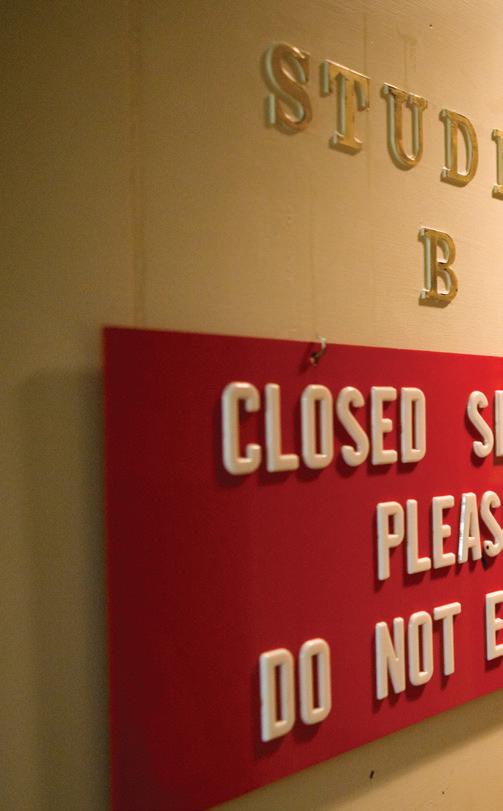

Little Richard—to get to Prince. The less shy can freestyle in one of the neonlit recording booths. Nerds can break down a Motown hit, layering beats with arrangements. These activities lift song-making out of musty documentation and within literal reach. The Musicians Hall of Fame and Museum works similarly, with chances to sing or play instruments—plus, hokily, jets of curling steam meant to resemble cannabis smoke spewing over attendees’ heads before a secret door unlatches to a Jimi Hendrix exhibit.
Tangentially related: The Country Music Hall of Fame & Museum includes Hatch Show Print, a working letterpress shop demonstrating the steps behind so many iconic music posters. Most notably, think of the one with Elvis mid-yelp, mid-strum, legs akimbo. They’re all over. Several flanked Shaw onstage. Guests can hand-print their own small souvenir, too.
Even more tangentially related: If you think Andrew Jackson’s Hermitage couldn’t involve music, you’d be wrong. A driveway winds toward the seventh president’s home in the voluptuous shape of a guitar. Nothing anachronistic is allowed on display across these 1,000-plus acres. Hushed, sealed, the property’s small
details tell stories. Jackson, ever-frugal, had the home’s columns made of wood, painted to resemble stone. Since the 1970s, archaeologists have worked to uncover the lives of the enslaved people who had homes on the land, which visitors can also see, and have found more than 600,000 related artifacts.
You’ll want your barbecue and hot-chicken fix, but consider other options that probably boosted Nashville onto recent lists of U.S. “foodie” cities.
A few examples I tried: SweetMilk has Southern comfort food—biscuits, Bennys, a “Big Ol’ Cinnamon Roll” with pecans—all based on the

The raw tuna on grilled seaweed sourdough proved an immediate favorite, but we loved everything.
For barbecue-as-cherished-tradition, Martin’s Bar-B-Que Joint has six locations, including one five minutes northwest of Present Tense. This place does it whole-hog, a 24-hour West Tennessee process of hickory wood, house-made charcoal, and North Carolina hogs hoisted into giant ovens—all of which are (sorry if this is gruesome) female for leaner, sweeter meat, the pitmaster told us while demonstrating how it’s done.
It’s practically impossible to misstep with whiskey, given the reputation here. For a recent story, Nashville Barrel Company is a bootstrapping operation launched by three friends in 2018. It nets many folks on layovers, located between downtown and the airport. For enthusiasts, the 122.5-proof Tennessee Whiskey is something else. (In the same vein, Jack Daniel’s Distillery is iconic, although my leg of the journey didn’t stop there. There are also whiskey tours to consider.)

From top: RCA Studio B; Lane Museum; Nashville’s skyline from the Cumberland River
co-founder’s family recipes. For hot chicken, Scoreboard Bar & Grill does it classically, while Jane’s Hideaway re-invents country cooking, pairing juicy fried chicken with sweet-potato puree and bacon jam. Sere bouquets dangled, in a Havishamesque heap, over the entrance, and a local band rocked a small stage.
In a historic neighborhood southeast of downtown, you might spot some nouveauNashville celebrities at Present Tense, a chicly monastic restaurant inspired by Japanese minimalism, where everything from chef and owner Ryan Costanza richly reflects the izakaya style of after-work dining: as satisfying as snacks yet as memorable as the prices imply.
Less traditional, Diskin Cider, Nashville’s first and only cidery, supplies gluten-free drinks all over town, the owner told us. The day we dropped in for samples, the capacious space, a former trucking garage, was hosting a chill “Harry Potter” screening. It’s a welcoming, somewhat millennial-coded place. Diskin blocked out the expansive windows and continued to host drag shows during Tennessee’s ban on the queer artform, the owner said.
Especially for those towing kids, there’s a prime sweet-tooth option downtown. The Goo Goo Cluster originated in Nashville, dubbed the nation’s first combination candy bar, and you can make your own in a back room of the chocolate shop. I thought mine would crashland, taste-wise, but it somehow hit the spot: dark chocolate pearls, pretzels, whiskey caramel.
Another tip for parents: The Adventure Science Center has the only “star ball” projector in the country, which spangles the planetarium with 6.5 million stars, versus the 2,400 of the machine’s predecessor.
Finally, country fans must visit what is a key contributor to Nashville’s “Music City” reputation. There is no venue like this one. Sacred, communal vibes befit the so-called “mother church” of country music—although it also sells drinks and merchandise. It’s an enormous live recording studio where stars mingle backstage and inductees blanch before a mythic spotlight. It is the Opry House, which hosts radio’s most enduring music program: the Grand Ole Opry.
The mega-building in Music Valley, northeast of downtown, isn’t the original, though. The church pews in Ryman Auditorium, across from downtown’s National Museum of African American Music, date back to the late 1800s. This place began as an actual church, and then, repurposed as a stained-glass concert hall, it housed the Grand Ole Opry from the 1940s through the ’70s. It still hosts big names— Lizzo, Ed Sheeran, Janelle Monae—and is worth a pilgrimage if you’re in the area.
We joined the faithful droves one night at the modern-day venue. Reba McEntire smirked up to the spotlight with that double-sighted second nature only legends possess. She spun ballads, o ered warm banter, then retracted. Did she cry, as she claimed onstage she might? I don’t think so. It made me wonder if Reba has fully separated from us mortals.
Somehow, Victoria Shaw—a redhead of similar hue, coincidentally—had seemed equally dauntless on the much tinier Bluebird stage. If Reba has already ascended, it makes sense she’d touch down, with pride and humility mixed, in the same city.
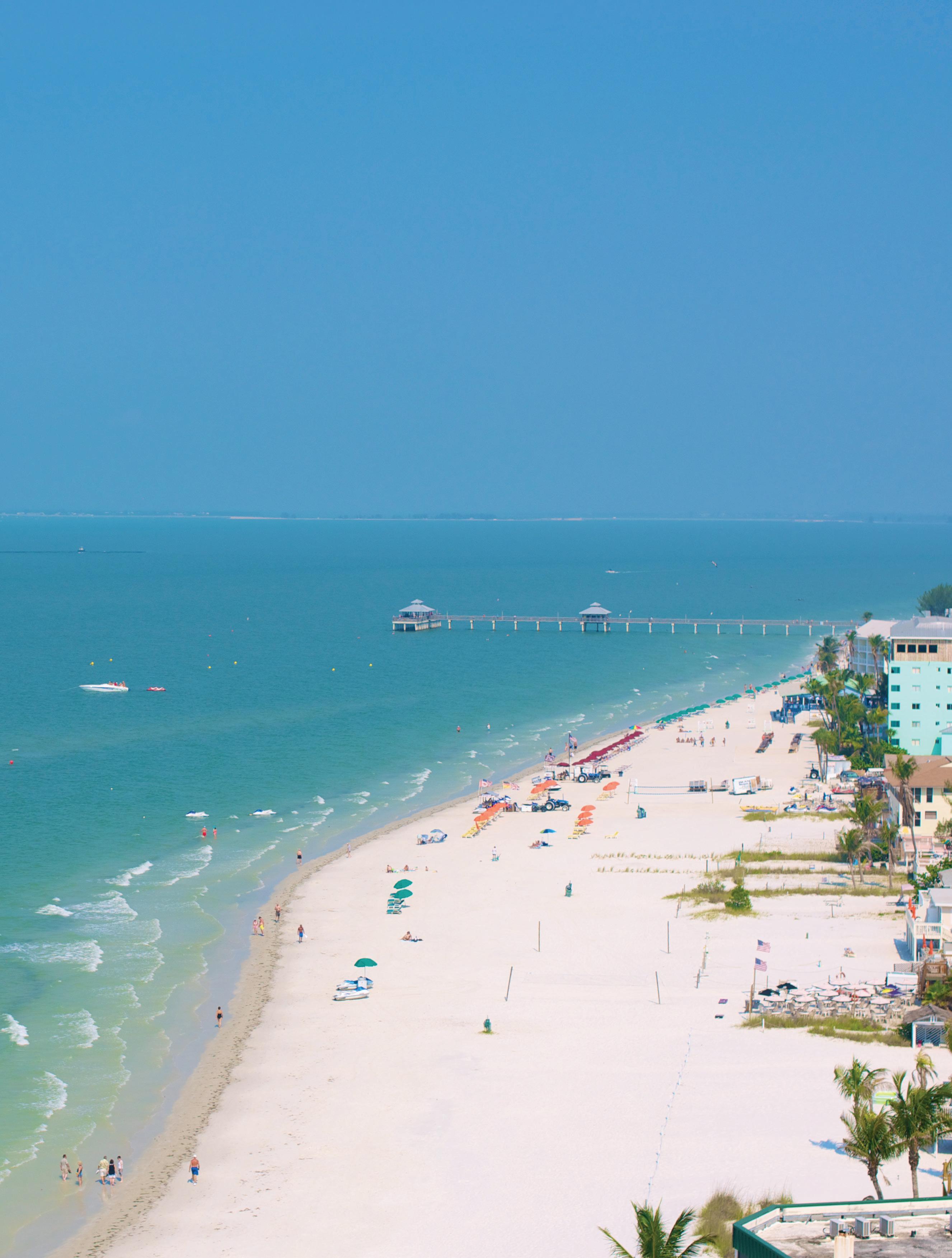
Minnesotans flock to Fort Myers for sunshine, white sand, and a li le taste of home away from home
by EMMA ENEBAKMinnesotans love Fort Myers. This I was vaguely aware of before stepping on a plane from Minneapolis to southwest Florida in late February. I primed myself for my trip with some quick research, which revealed no less. According to the Lee County Tourist Development Council’s 2023 report to the industry, the county’s highest percentage of visitors that year (just over 6%) came from the Minneapolis-St. Paul area.
This certainly appeared to hold true when we arrived. Although, from our little corner of the newly opened Margaritaville resort on Fort Myers Beach, the count felt much higher than 6%. Finding a Minnesotan in Fort Myers is like finding a tiki bar o the shores of Fort Myers Beach— you won’t make it very far without encountering one or the other.

On the first night of our trip, I encountered both. During a quick happy hour at the Lighthouse Island Resort’s Tiki Bar & Grill, I struck up a conversation with a woman wearing a Twins T-shirt—a Minnesotan named Pam Johnson. Johnson and her family come to Fort Myers every year. For them, it feels like a little slice of home, “minus the shoveling.”
“This side of the Gulf Coast is total Midwest,” Johnson told me. “See all these TVs?” she gestured to the flat screens situated above the tiki bar, one of which was blaring the Minnesota Wild game. I was inclined to believe her when she added, with a glimmer in her eye, “you’ve gotta come during football season.”
As it turns out, Fort Myers loves Minnesotans right back. In fact, the Margaritaville resort where I stayed, a project which one local credits with having “saved the island,” was the work of Torgerson Properties Inc. a Minnesota-based hospitality company.
“We love our Minnesotans over here,” a local jet

ski guide shared with me. “They’re a big part of the reason we’re still here. We’re grateful they decided to come down and give Fort Myers Beach a chance.”
Of course, this hopeful sentiment can only be understood in the context of a less-than-hopeful event. Hurricane Ian, a deadly Category 4 hurricane, made landfall in southwest Florida in September 2022. The storm had devastating effects on Fort Myers Beach and its neighboring islands, which were hit by a storm surge as high as 15 feet.
Evidence of the storm will be hard for visitors to miss across the steadily recovering island. But the community’s resilience is just as evident. Many business owners have resourcefully adapted, moving their shops aboard wheels as they find the means to rebuild storefronts. Tourism carries on as entrepreneurs find unique ways to engage visitors with the beauty of the island, from dolphin tours to tiki boat cruises to pirate ship adventures. And, of course, Margaritaville’s opening in late 2023 served as a new beacon of hope, with its 254 guest rooms, six restaurants, and 365,000-gallon outdoor pool.
One tiki cruise captain, a Minnesota transplant no less, couldn’t help but express his admiration. “It doesn’t matter if you’re a local or a snowbird,” he said. “Everyone has a really strong sense of community here.”
Checking into Margaritaville the night we arrived, I could tell how meaningful the project was for the Fort Myers community, intended by Torgerson Properties to be an oasis not just for out-of-town visitors but for all of Lee County. Every minute detail, from the dolphin-tail faucet knobs in the suite bathrooms to
the slideshows featuring snaps from the late Jimmy Buffett’s Instagram page, seemed intentionally designed to lift the island’s spirits.
After dropping our bags in our room, we promptly stopped at the 5 o’Clock Somewhere Bar & Grill, a flamingo-pink painted hut at the base of the outdoor pool. I began a silent count of how many Jimmy Bu ett lyrics I could spot within that bar alone, my favorite of which was a subtle sign above the liquor wall that said nothing more than “lost shaker of salt.”
When the sun began to sink over the Gulf of Mexico, I was startled by the trumpeting of conch shell horns, which signaled that Margaritaville’s nightly sunset celebration was about to begin. I would later find that celebrating the sunset is not just a ritual at Margaritaville but all over Fort Myers, usually accompanied by conch shell horns or cow bells, cheering, dancing, and, of course, another margarita.

As a journalist, I was about to begin three days of planned excursions across Fort Myers, hosted by the Lee County Visitor & Convention Bureau. Together, my plus-one and I would traverse the many contrasts of Lee County, from the 7 miles of white sand across Fort Myers Beach to the upscale drinkeries and fresh seafood restaurants that populate downtown. Across just three sun-soaked February days, the hottest of which climbed up to 80 degrees, I eventually lost count of how many fellow Minnesotans I encountered on the way.

Thankfully, I didn’t need to go far to find a quality cold brew my first morning at Margaritaville. The resort’s second floor harbors the Coconut Telegraph cafe, which serves local favorite Chocolattés Co ee, a family-owned and -operated coffee shop that has served Fort Myers since 2004. Margaritaville has made it a priority to source locally, something that, in the context of Hurricane Ian, feels even more meaningful.
Once I got my vanilla cold brew with a splash of oat milk, we strolled leisurely along the beach until we reached our first activity of the day, a two-hour guided jet-ski dolphin tour with All Island Watersports. Aboard a double jet ski, we followed our knowledgeable guide from Fort Myers Beach all the way down to Little Hickory Island in Bonita Springs. Dolphins populate these waters all year round and are certainly not shy. We hadn’t even left the beach when we spotted our first one, which was floating lazily in the shallow waters near shore.
Later, as we cut through Big Carlos Pass, we got lucky enough to spot a pod of eight. We waded nearby and watched as they leapt and nosedived in the clear waters of the inlet.
Just as magical as our dolphin sightings was the chance to explore the string of neighboring islands trailing down from Fort Myers Beach. As we cut into New Pass between Black Island and Big Hickory Island, I took in the relaxing scenes of island life on either side of me: fishermen casting o white sandy shores, a yellow parasail floating in the sky, and dogs running across a small, tucked-away beach. Noticing my admiration, our guide alerted us that this was called Dog Beach, the only beach in the county where dogs can roam freely without leashes.
Many of the wide inlets we passed through had been narrow channels before Hurricane Ian. It became clear how the islands had been forced to adapt around harshly redrawn shorelines. As we weaved between islands, our guide helped us picture the actual geographical lines that existed before the storm and how far they had come in such a short time.
After our tour, we returned to Bonita Springs—this time by rental car—to have lunch at Coconut Jack’s Waterfront Grille. Famous for fresh, locally caught seafood, Coconut Jack’s is a perfect slice of southwest Florida, with a sun-drenched patio extending to Back Bay near Bonita Beach. We started with an appetizer of coconut shrimp, served with raspberry Melba and mango Coulis. Considered a specialty of the area, shrimp is a great source of pride in Lee County. Often referred to as “pink gold,” the gulf shrimp caught by the area’s shrimping fleet is considered among the freshest and tastiest in the world. And it did not disappoint—especially with the tropical twist o ered by the coconut, mango, and raspberry.
!When the sun began to sink over the Gulf of Mexico, I was startled by the trumpeting of conch shell horns, which signaled that Margaritaville’s nightly sunset celebration was about to begin.
My two lunch companions enjoyed the mahi tacos, which were dressed up with a pineapple cilantro salsa and key lime aioli, while I ventured to try the special of the day, a chili lime redfish po’ boy. Redfish, which I had not tried, is another local specialty, only found in specific areas of the Atlantic Ocean, including the Gulf of Mexico. The freshness was unmistakable, and the tropical Florida flair given to both dishes set Coconut Jack’s apart as a true local gem. Apparently, others agree, as it was recently voted the best waterfront restaurant in Bonita Springs.
Full from our lunch and nursing fresh sunburns, we hopped in our rental car and drove 5 miles to our next attraction, the Wonder Gardens in Bonita Springs. The animal sanctuary is home to over 300 rescued, rehabilitated, and non-releasable birds and reptiles, as well as a lush botanical garden.
While now registered as a nonprofit pledged to wildlife conservation, the Wonder Gardens has a long history as a dazzling roadside attraction of southwest Florida, established in 1936 and sitting alongside the newly built Tamiami trail, which used to be the main route between Tampa and Miami.
Visitors would stop along their journey to witness the history and wonder of Old Florida, featuring the mesmerizing flora and fauna of the Everglades. Today, the site is revered not just for its charitable work but as a historical icon and one of the last relics of Old Florida.
After absorbing this history, we strolled through the serene gardens to see for ourselves. We were quickly enchanted by the vibrant orchid garden, which showcased species from as far as tropical Asia, including the moth orchid and the nun’s head orchid. We soon arrived at the foreboding “alligator bridge,” which extended over a swamp of Florida alligators bathing in the sun. A sign at the bridge informs visitors of the Wonder Gardens’ diligent care of these reptiles, declaring “gone are the days of the overcrowded ’gator pit where alligators often harm each other in dirty water. We have happy ’gators.”
In my favorite exhibit, bright pink flamingos waded steadily through shallow waters at the base of a cascading waterfall, nothing separating us from them but a low hanging rope. Per the Wonder Gardens’ educational sign, the two flamingos before us had hatched on-site in the 1960s and were now considered geriatric. It was a testament to how well the sanctuary looks after its animals, having now seen these flamingos through an entire lifespan, even as the Wonder Gardens itself went through significant changes.
By the time we made it back to Margaritaville, it was time to prepare for our sunset cruise, which was a sixminute walk from the resort. Docked in Matanzas Pass, we were welcomed aboard Nautical Tiki Cruises by Captain Kip, a fellow Minnesotan who recently made the full-time move to Fort Myers as a yacht broker. While we were scheduled for a private ride, Captain Kip had invited two friends aboard to keep us company—uncoincidentally, two more Minnesotans. That made five total, floating aboard a Tiki bar in the Gulf of Mexico—while the forecast back home predicted snow.

Captain Kip is an experienced, U.S. coastguardcertified captain, who, ironically, got his sea legs on the less rocky waters of Lake Minnetonka.
He shared memories of “captaining” his dad’s 44-foot boat to Lord Fletcher’s when he was just 8 years old, part of a childhood that primed him for captaincy on the Gulf of Mexico.
We cruised down through Matanzas Pass, passing by Fort Myers’ famous shrimping fleet as well as the Key West Express, a high-speed catamaran that takes passengers from Fort Myers Beach down to Key West in less than three hours. When we cruised by a lovely modern house with a backyard pool, Captain Kip shared the tale of its owner, Monica Lynn, whom locals refer to as “the dolphin lady.” Over the past seven years, Lynn has managed to befriend the dolphins that play in the waters in front of her home and can be seen on her kayak every day capturing photos of them, which she shares to her Facebook page, called “Fairy Podmother.”

We later ran into this famous dolphin lady, who was passing us aboard her kayak just before sunset. She stopped for a moment to share her new initiative with us, an organization called Pod Protectors that aims to educate boaters on proper behavior around dolphins. “We are so blessed to have them,” she shared of the waters’ flourishing dolphin population.
When the sun finally started dipping below the horizon, we stopped to watch its descent as a few dolphins splashed on the horizon. Folks on a nearby tiki boat initiated the celebration, ringing cowbells, cheering, and dancing aboard their spinning ship after the orange sun had fully disappeared.
Our second morning was spent enjoying the paradisical amenities at Margaritaville, which included a dip in the heated pool and a snack at the beachside Lah De Dah Beach Bar & Grill. After relishing yet another basket of coconut shrimp, it was time to don our Twins gear
for our big event of the day—the Minnesota Twins training game at the Lee Health Sports Complex.
Along our 30-minute drive inland toward the stadium, we stopped for something sweet at Sun Harvest Citrus, a massive citrus market with farmfresh treats. We browsed the colorful rows of freshsqueezed juices, canned salsas, fresh-cut fruit, and homemade marmalades before zeroing in on the soft-serve ice cream, opting for the orange vanilla twist. As we were checking out, one of the workers commented on my friend’s Twins T-shirt, which was a relic of their 1987 World Series win.
“I bet you weren’t even alive for that,” she laughed. We weren’t. But this woman was—a fellow Minnesotan who was lucky enough to be at the game in person. She regaled us with the tale and wished us safe flights home. (She was a transplant and, thus, staying behind in the sunshine state.)
When we arrived at the stadium, a giant banner made one thing clear from the get-go: “Lee County is Twins territory.” And it certainly was (although we tied the Philadelphia Phillies 3-3), with diehard fans packing the stadium, many of whom had made the trip from Minnesota solely to support their home team. At one point, two young brothers from Minnesota, shown on the jumbotron, engaged in a hula-hooping contest.
“It’s negative-2 degrees where these two are from right now, so they’re very happy to be here with us,” the announcer said.

Among the foods, which included classic ballpark favorites like hot dogs, pizza, and Philly cheesesteaks, I quickly spotted a Minnesota name. Bomba Grill serves walking tacos, a Midwest favorite. The ballpark later announced a chance for lucky attendees to score discounts at yet another Minnesota favorite—Rooster’s Barn & Grill, which now has a location in Fort Myers.
We had attended the Twins’ fourth game out of their 18 on the Grapefruit League schedule, which would wrap up on March 26. Though it ended in an anti-climactic tie, the game had a special energy to it, vibrating with preseason excitement as loyal fans got a sneak peek at what’s to come in 2024.

was some of the “best seafood they’ve ever had.” We began scouring the menu, hoping to prove them right.
Leaving the ballpark, we geared up for an evening in downtown Fort Myers, situated along the Caloosahatchee River, about a 40-minute drive northeast from Fort Myers Beach. A maze of bricklined streets flanked by palm trees, downtown o ered us an urban escape from beach life, with charming boutiques, upscale drinkeries, and inviting cafes. Our first stop was the Luminary Hotel, where we rode up to the 12th story to sip drinks at its rooftop bar, Beacon Social Drinkery. I enjoyed an impeccably shaken lychee martini from the drinkery’s Asianthemed menu as I admired the sweeping views of Fort Myers’ downtown. The Caloosahatchee River glistened below us, a tidal river of salt water that runs 67 miles before emptying into San Carlos Bay near Fort Myers Beach. As the sun began to set over the view, I prepared myself for my third sunset celebration of the trip, a ritual I silently promised to uphold even after leaving southwest Florida behind.
!
I never thought seafood could truly melt in your mouth until I tasted this dish. It was delicate, bu ery, and intensely flavorful…
In the end, we both landed on the butterfish piccata, which featured fresh-caught butterfish on a bed of risotto, accompanied by asparagus and a lemon caper sauce. I never thought seafood could truly melt in your mouth until I tasted this dish. It was delicate, buttery, and intensely flavorful, the piccata a perfect accompaniment to the rich, full-bodied butterfish. Only after did I discover that U.S. wild-caught butterfish (also known as black cod) is actually a sustainable seafood choice, as the species is among those sustainably managed and responsibly harvested under U.S. regulations.
On our way to dinner, we took in more of downtown, passing ice cream shops, a secondhand boutique, and, of course, the World Famous Cigar Bar, a staple of Lee County. We soon arrived at Izzy’s Fish & Oyster, a streetside gem that serves fresh local seafood inspired by classic New England fare. A couple back at the Luminary shared with us that it
Our final day in the sunshine state was short-lived, with a flight home set to take off around 3:30, but we managed to squeeze in a delicious brunch and some outdoor exploration. Checking out of Margaritaville at 9 a.m., we made our way inland along the Caloosahatchee River, passing through the palm tree-lined communities of McGregor and Whiskey Creek on our way to the historic McGregor Cafe.
Originally known as the Bilmart Restaurant, the charming, quaint cafe first opened in the early ’50s and has run continuously as a restaurant ever since, becoming Betty’s, Market Cafe, and, eventually, McGregor Cafe. The white cottage-style building is

dressed with red shuttered windows accompanied by red-, green-, and blue-striped awnings, which evoke a colonial, Old Florida feel. On its spacious patio, we lounged in the sun and enjoyed “The Benny,” McGregor Cafe’s take on the classic eggs Benedict, with a choice of smoked salmon or lobster cakes. For my final day seaside, I chose to indulge in the lobster-cake variation, which was every bit as good as it sounds.

After finishing off the last of my coffee, we hopped in the car and drove 20 minutes east toward the Six Mile Cypress Slough, a 3,500-acre nature preserve that is free and open to the public.
The slough is one of Lee County’s earliest protected conservation areas, purchased in 1976 after county voters approved the land’s status as a preserve and wildlife habitat, an initiative led by a group of Lee County high school students. For those unfamiliar (as I was upon arrival), a slough is a type of wetland composed of slow-moving freshwater. The water from Six Mile Cypress Slough eventually flows all the way into Estero Bay and then the Gulf of Mexico.
paused to appreciate a forest of bald cypress trees rising up through the shallow wetlands of the slough. These trees cycle through seasonal transformations, their green needles turning an orange-brown color in the fall and shedding completely in the winter. As we approached Gator Lake, we ran into a volunteer named Carol Bumbaca, who was an expert on the preserve. For Bumbaca, the slough is a tranquil space to connect with nature. “Volunteering has been a really great experience because I get to help the public learn more about this amazing park,” she said.
!Our brief stint of endless summer may have been coming to an end, but images of sailboats, vibrant sunsets, and pastel-painted houses still danced in my memory.
The preserve is home to abundant southern Florida wildlife, including river otters, alligators, brown pelicans, and white ibis, plus enchanting plant life. As we strolled along the 1.2-mile boardwalk trail, we
As we made our way back to the Southwest Florida International Airport, we stopped behind a Nissan bearing quite possibly my favorite variation of the Florida license plate: a sunset-tinted horizon featuring the stark silhouette of a surfer, accompanied by the tagline “endless summer.” Our brief stint of endless summer may have been coming to an end, but images of sailboats, vibrant sunsets, and pastel-painted houses still danced in my memory.
I also felt, underscoring this dreamy imagery, a deep sense of appreciation for the community of Lee County, which I had come to see as a tight-knit group of people committed to protecting and restoring the place they call home. Whether it be Fairy Podmother watching over the dolphins who populate her bay or Bumbaca volunteering to educate the public, this mentality extends to visitors as a warm and welcoming embrace. It’s no wonder Minnesotans feel so drawn here. I can think of few places that reflect this sense of belonging as well as Minnesota itself.






SParis, France, is preparing for record crowds and record-se ing Olympic Games this summer
by AMY NELSONo, you have a flight to the City of Light this summer. Fantastic— but you’re not alone. Voted the New York Times’ No. 2 place to go in 2024 (behind the “place” that is chasing the total solar eclipse across North America in April), a visit to Paris for the Olympics is a bucket-list trip for millions this year.







France already is the world’s most visited country by international travelers, and several global and French government agencies expect 11 to 15 million visitors for the Olympic Games this summer. The events run July 26 to Aug. 11, with the Paralympics occurring Aug. 28 to Sept. 8. The o cial Paris 2024 Olympics website calls it the “biggest
event ever organized in France.” That seems surprising for a popular tourist city that hosts the fi nale of the Tour de France along the Champs-Élysées, annual Fashion Week events, and worldrenowned art and food expos. Like football fans who flocked to Minneapolis when it hosted the Super Bowl in 2018, many visitors may not have tickets to
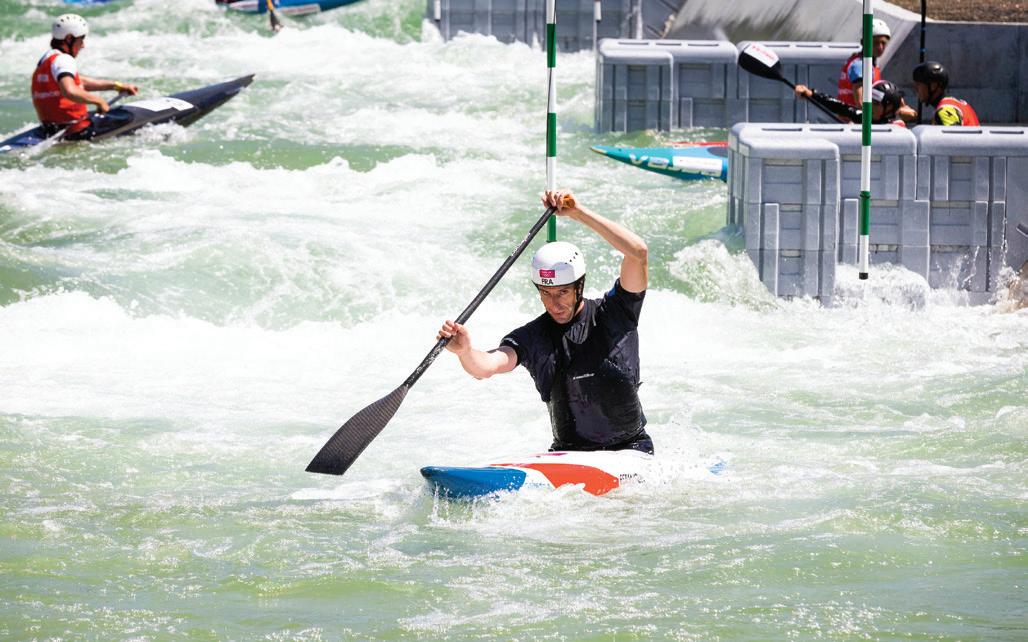

the actual Olympic events. Still, they will have activities to attend in the area—while aspiring to rub elbows with the athletes, cheering on favorite qualifiers, or just celebrating the spirit of the event.
My daughter once lived in Paris as an exchange student, so I’ve become a frequent visitor (I was there in July and November last year). I also was a one-time attendee of the Paralympics, in London in 2012. So, I’m here to o er some


travel tips. Overall, know that Paris will be hot (air-conditioning is an amenity, not the norm), crowded (see attendance expectations), and expensive (reports of price gouging are rampant). You’ll also want to book all tours and excursions in advance because many are timed entries for crowd control. That may not sound like a foundation for a gold-medal experience, but it helps level-set expectations. The first must-see is the River Seine,
which cuts through the city and divides the north and south sides, or Right and Left Banks. There are 20 neighborhoods, called arrondissements. The Seine circles around, a bit like the way the Mississippi River complicates St. Paul and Minneapolis, but makes navigating the city easier. For lodging, dining, or attractions, be aware of which arrondissement it’s in. They aren’t sequential and don’t make much geographical sense; instead, they’re spiral-


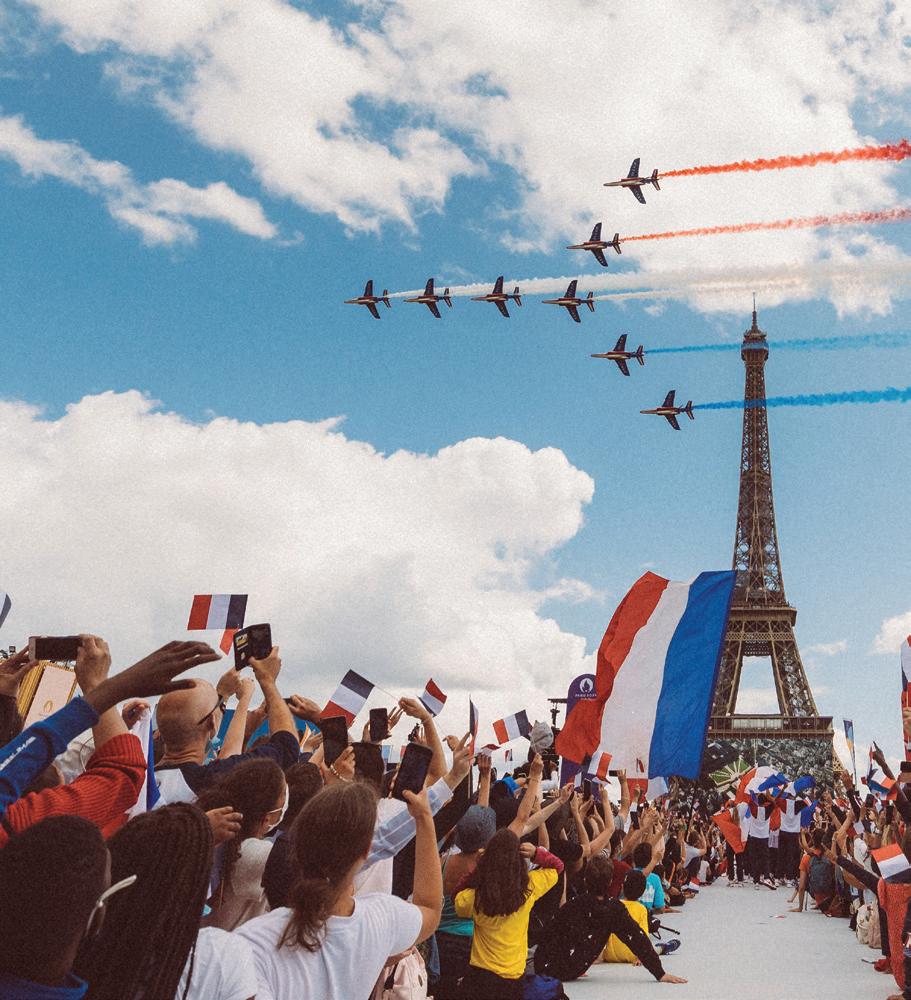






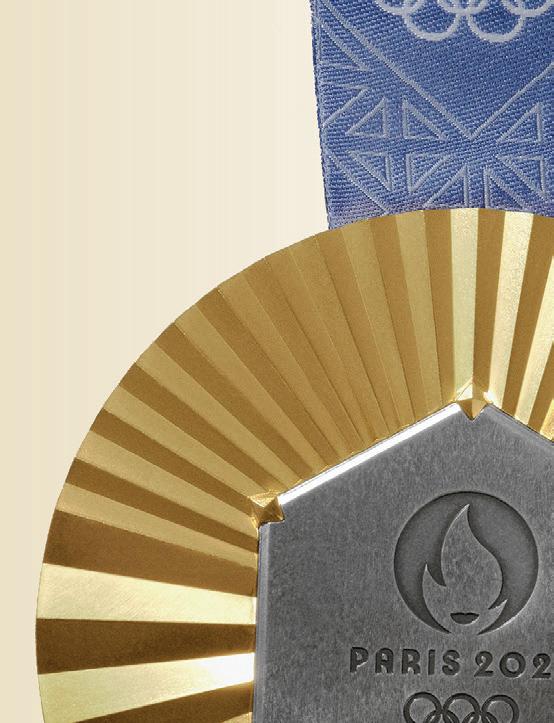

shaped and numbered, ba ingly, starting in the middle. The Right Bank has 14 of the 20 arrondissements, including the Notre Dame Cathedral, Louvre Museum, and the Sacré-Cœur Basilica in Montmartre. The Left Bank consists of the other six and includes the Ei el Tower and Latin Quarter. For lodging, the first arrondissement, near the Louvre, is my favorite. Meanwhile, the Olympic Village is outside of Paris, to the north in Saint-Denis.

The Seine will be the star of the opening ceremonies on July 26. For the first time in modern Olympics history, the ceremonies will be outdoors and (mostly) free to spectators. Boats carrying the athletes will fl oat down the Seine past the Ei el Tower. Fans are invited to line the banks to cheer them on. For observing the spec-

tacle, a few of the city’s many bridges that connect the banks will require tickets.
Other Paris landmarks are getting in on the Olympics action too. The glass dome of the Grand Palais will be on display for fencing and taekwondo competitions, and Versailles, a short drive or train trip outside of Paris, will host equestrian events in its famous gardens. Paris’ largest public square, the Place de la Concorde—where the guillotine executions occurred during
Our associate editor Emma Enebak is also a Francophile, and here are some picks from her:
1 La Favorite: This spot has become TikTok-famous for its vibrant floral exterior—it’s hard to miss!
2 Gardens and home of Claude Monet: This is a li le ways out of Paris but easy to reach by train. Here, you can enter the private sanctuary of Claude Monet and stroll through the gardens that inspired some of his most famous paintings.
3 Shakespeare & Co. bookstore: On the banks of the Seine, this English-language bookstore has a long history as a center for expat literary life in Paris.
4 Le Marais: In my opinion, this is the best district for shopping, especially for second-hand finds at curated vintage stores, which are around just about every corner in Le Marais.
5 The YSL Museum: This fascinating look into fashion history allows a peek inside Yves Saint Laurent’s actual studio.
Some other favorites:
Angelina: Stop here to try the world-famous hot chocolate and snack on macarons.
Bar Hemingway: Located in the Ritz, this is an elegant bar. All over, you’ll find objects and handwri en le ers that tell the stories of some of the world’s greatest writers—including Ernest Hemingway’s actual typewriter.
Galeries Lafaye e: Easily the coolest shopping mall I’ve ever been to. The department store has close links with French artists, and it shows, especially in the signature Art Nouveau stained-glass dome that hangs above visitors as they shop.
Luxembourg Gardens: This spot feels much quieter and more secluded than Tuileries and is absolutely breathtaking. The gardens are inspired by the Boboli Gardens in Florence.
Maison Sauvage: My favorite brunch location from my time in Paris, this place serves an avocado toast that is a masterpiece.
Musée de l’Orangerie: This is where you can view Claude Monet’s famous “Water Lilies,” which spans the circumference of a private room. It’s a magical experience.
Pink Mamma: It’s TikTok-famous because of its perfectly Instagrammable interior. Push open the ominous-looking “freezer” doors in the basement to find a conjoined speakeasy bar.
the French Revolution—will serve as the forum for break dancing (yes, now an Olympic sport), skateboarding, and even some basketball activities.
The second must-do is to eat and drink. Paris is famous for its sidewalk cafes and fine dining. Spend a morning sipping strong coffee and dissecting a croissant while people-watching at Café Montorgueil, then walk over to Patisserie Stohrer for a cream tart. Open since

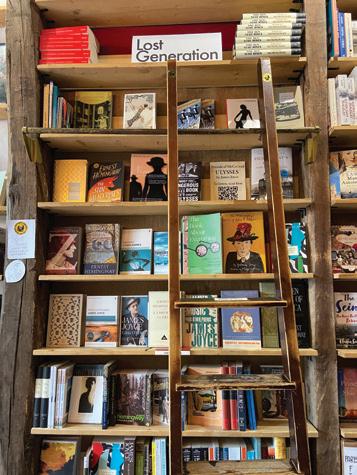
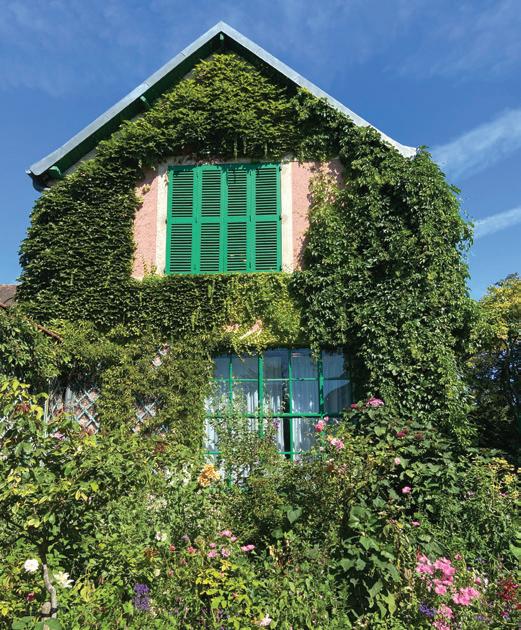

1730, it is the oldest bakery in the city. After several visits, one of my favorite restaurants is the tiny Le Hangar near the striking Pompidou Center. It’s not a touristy spot and can be di cult to find, but that makes it all the more delightful.
Finally, the third can’t-miss: all the biggees. Visit the Ei el Tower at night when it’s lit up, peep the “Mona Lisa” at the Louvre, browse books at Shakespeare & Co., and walk across the street to see how

reconstruction of the fire-demolished Notre Dame is coming (it’s supposed to reopen in December). Also, take a riverboat cruise along the Seine, snap a selfie in front of the giant clock window at the Orsay Museum, pop over to Versailles for a day trip, and shop like a celebrity along the Champs Élysées. Paris is full of fascinating history, culinary treats, and stylish surprises everywhere, so have a gold-medal visit this summer or any time.

Your Boat Club offers a premier boating experience, providing members with access to a fleet of high-quality boats across various scenic locations for unforgettable aquatic adventures
Your Boat Club has over 40 fantastic locations for you to explore. Life is be er on the water—let us show you! With daily rentals and unlimited boat club memberships available, Your Boat Club has you covered for all your boating needs.
From cruising in a pontoon or tubing behind a speedboat to your next big catch o a fishing boat, there is something for everyone. Our boats are less than 1.5 years old and are regularly serviced and maintained, from top brands like Bennington, Glastron, and Lund.
Start up north in the beautiful Northwoods of Minnesota and soak in the natural majesty of Lake Vermilion, which has been called one of the nation’s most beautiful lakes by National Geographic. Its bountiful fishing and many islands make the Northwoods a Minnesota favorite. Next, adventure to exciting and happening Brainerd Lakes. ere is never a dull moment
here, with countless lakeside restaurants and resorts to relax at.
e Twin Cities can’t be missed o the list of must-see lakes. e famous Lake Minnetonka has exquisite bays and fun for all ages, while the mighty Mississippi boasts views that won’t be soon forgo en.
is entire itinerary is accessible with boats from Your Boat Club, plus many more! Spend time with family while creating memories on the water, developing new traditions, and exploring the natural beauty of Minnesota’s waterways.
Your Boat Club o ers unlimited boating memberships to fit any lifestyle, plus a brand-new fleet of rental boats to enjoy. Learn more about how to make boating a part of your family’s adventures today by visiting yourboatclub.com.
Your Boat Club LLC yourboatclub.com
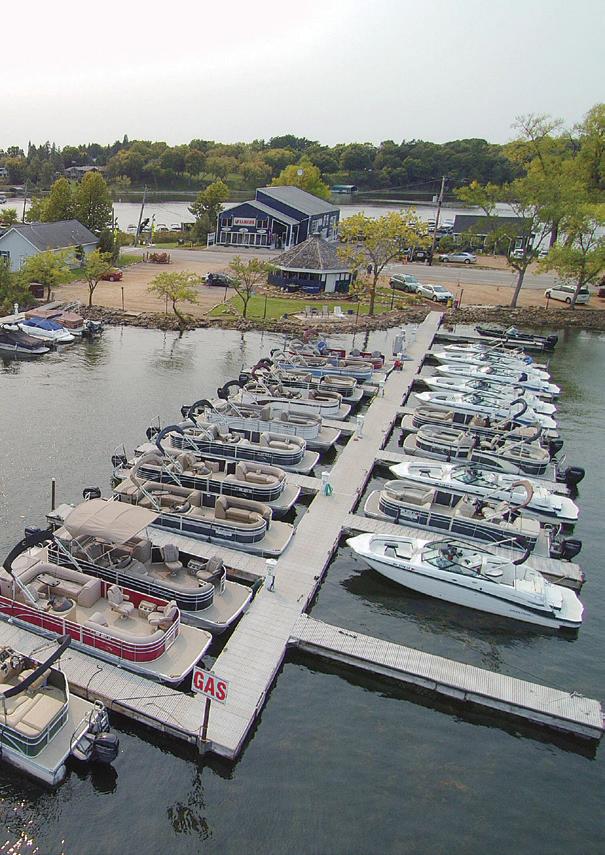
EXPLORE THE LAKES OF MINNESOTA WITH YOUR BOAT CLUB
Lakes of the Northwoods
Lake Vermilion | Shagawa Lake | White Iron Lake | Farm Lake
PLACES TO STAY: Fortune Bay
Resort & Casino | Marjo Motel | Grand Ely Lodge Resort | Silver Rapids Lodge
NOTEWORTHY DINING: Vermilion Club | Tavern in the Bay | The Landing | Boathouse Brewpub | The Rusty Cup
Brainerd Lakes
Whitefish Lake | Cross Lake | Gull Lake | North Long Lake
PLACES TO STAY: Cragun’s Resort | Grand View Lodge | Quarterdeck Resort
NOTEWORTHY DINING: Zorbaz | Dunmire’s | Bar Harbor | Ernie’s on Gull
Metro Waterways
Lake Minnetonka | Mississippi River |
Prior Lake | St. Croix River | Lake Waconia | White Bear Lake
PLACES TO STAY: Hotel Landing | Hotel Crosby | Lora
NOTEWORTHY DINING: Admiral D’s | Lola’s | Lord Fletcher’s | Charlie’s | PD Pappy’s | Dick’s Bar and Grill | The Afton House




